What Is The Best Boat For Seasickness? 5 Gentle Hull Designs
Seasickness plagues a lot of people daily, especially ones new to boating. But are there boat types that could help prevent seasickness?
While there is no surefire way to prevent seasickness, some boat types are better at reducing the chances of getting seasick than others. In this article, you will see the five best boat types to prevent seasickness and some tips to prevent it altogether.
Hopefully, by the end, you will be able to decide what you think the best boat for seasickness is!

Table of Contents
Pontoon boat, monohull sailboats with keels, frequently asked questions, best boats for seasickness.
Seasickness, also known as motion sickness, is a common problem for many people when they are on a boat.
It is caused by the rocking motion of the boat and can lead to symptoms such as nausea, vomiting, and dizziness. Luckily, there are boats designed to help mitigate this feeling.
Catamarans, pontoons, trimarans, yachts, and monohull boats are five options that can help with seasickness. Generally speaking, Stability is key when trying to combat seasickness.
Monohulls, if they are small, can be the worst option, while larger multi-hull boats are your best choice for preventing seasickness.
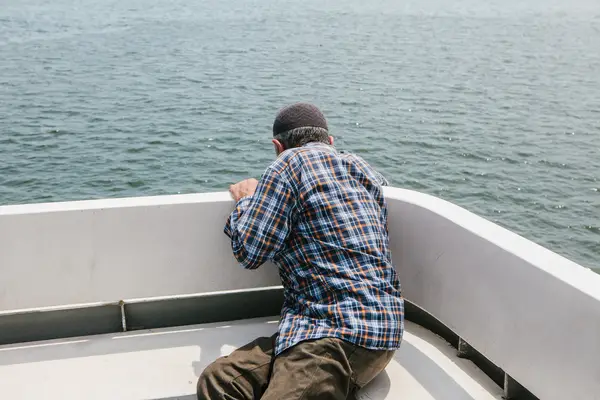
A catamaran is a type of boat that is characterized by its two parallel hulls. This unique design allows the boat to have a wide and stable platform, which can help to reduce the chances of seasickness.
The wide hulls also provide a smooth and comfortable ride, which can help to reduce the impact of the rocking motion.
One of the main advantages of a catamaran is its stability. Unlike monohull boats, which tend to roll from side to side, catamarans have a low center of gravity and are less prone to rocking.
If you are considering a charter boat for a trip or for a purchase of your own, catamarans are excellent in helping prevent seasickness.
A pontoon boat is a type of boat that is characterized by its large, flat deck and pontoons (or tubes) that provide buoyancy. These are very similar to catamarans, but you would not want to use these in rough waters.
One of the main advantages of a pontoon boat is its stability. Because of its design, a pontoon boat is able to distribute its weight evenly across the water, which makes it less prone to rocking.
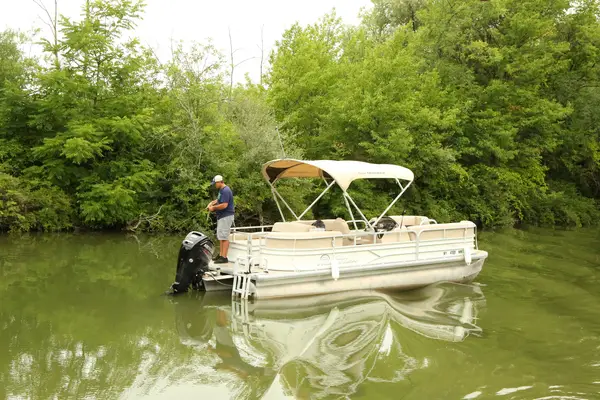
Reduced rocking means you are less likely to be seasick (see a trend here?).
Related: Deck Boat vs Pontoon: Pros & Cons Explained.
A trimaran is a type of sailboat that consists of a main hull with two smaller outrigger hulls attached to its sides. This unique design allows the boat to be incredibly stable on the water, which can help prevent seasickness.
Since trimarans have three hulls instead of just one, it is much less susceptible to back-and-forth rocking motion.
You could argue that it is a step above catamarans or pontoons since three hulls are better than two for stability.
This can help reduce or eliminate the motion sickness that many people experience on boats.
In addition to its stability, a trimaran’s design also allows it to cut through waves more efficiently and maintain a smoother, more comfortable ride even in choppy waters.
Yachts are another great option for preventing seasickness. Unlike smaller boats, yachts have a larger displacement and are designed to handle rough seas and large waves.
This means that they are less likely to rock or sway, which can contribute to seasickness. Yachts also tend to have a more stable and smooth ride than smaller boats, which can help prevent seasickness.
In addition to their stability, yachts also offer plenty of space for passengers to move around and find a comfortable spot.
This is important because being able to stand or sit in a position that allows you to keep your balance can help prevent seasickness.
Yachts also tend to have large windows and open deck spaces, which can help reduce feelings of claustrophobia and allow passengers to see the horizon. This is key to preventing seasickness.
See also: 10 Must-Have Center Console Boat Accessories For 2023.
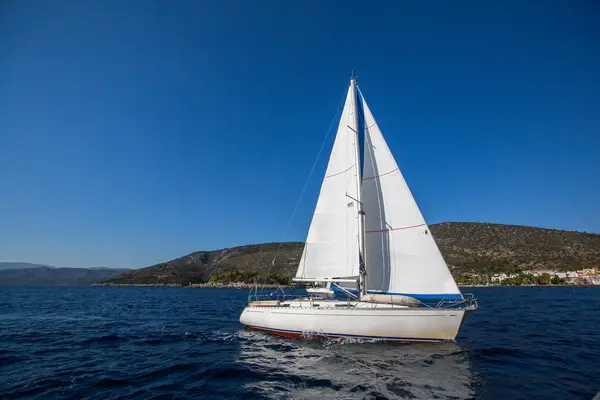
Sailboats are a classic choice for those looking to enjoy the open waters. While they may not be as large or luxurious as other boat types, they can provide a smooth and comfortable ride.
The design of a monohull sailboat, with a long and narrow hull, helps it cut through the water and provide a stable ride. However, the smaller the boat, the more likely you will feel everything.
If your monohull has a keel such as those seen in sailboats , it will add much-needed stability and prevent intense rocking. This will definitely lower your chances of seasickness, but consider a larger monohull if you can.
A variety of scenarios make a difference on seasickness. If you have the right boat, as well as a few other things, your situation might be different than someone else’s.
Who is Most Likely to Be Seasick?
According to a study conducted by Human Molecular Genetics , roughly a third of people are prone to motion sickness. On top of that, women and children are the most susceptible.
A few other factors that cause seasickness include:
Smoking Low quality sleep Easily stressed Irritable Bowel Syndrome (IBS)
Can Diet Affect Seasickness?
Diet is closely related to seasickness. If you are able to eat less frequently, consume fewer calories, and focus on protein, this will help alleviate symptoms before they arrive.
It is best to eat something before traveling on the water, at least an hour before.
Where Is The Best Place to Sit if Feeling Seasick?
If possible, sit as close to the middle of the boat as you can. This might mean going to the cabin located nearest to the boat’s core. This will have the least amount of motion and offer stability for your legs.
In addition, you could try sitting close to the waterline. The higher above the waterline you are, the more motion you will be feeling.
How to Minimize Seasickness?
If you are experiencing seasickness, the best thing to do is to look out at sea. Looking at the deck or locked away in your cabin is not ideal.
Trying a nap is another idea to help with seasickness. In addition, you could try pressing down on the P6 pressure point. This is located about three widths of your fingers down from your wrist, or slightly in the middle of your forearm.

Growing up in Florida, I’ve been surrounded by saltwater my entire life…and I love sharing my passion with others.
To learn more about why I started Saltwater Mecca, visit the ABOUT page.
Thank you for reading this article. Browse around & have some fun!
Browser Security Check…
Did You Know That We Offer Contract to Closing Services? Click Here to Find Out More.
Need Marine Financing? Apply Here With Our Partner, First Approval Source
- Catamaran Interviews
- Catamaran Reviews
- Buying Advice
- Selling Advice
- Woods Design Advice
- Americat 3014
- Aquila 44 Yacht
- Balance 526
- Bali 40 Catspace
- Beneteau Blue II
- Broadblue 346
- Broadblue 38 Prestige
- Broadblue 385
- Broadblue 435
- Broadblue 46
- Catalac 10M
- Catalac 11M
- Catalac 12M
- Catalac 900
- Catana 42 S
- Chris White 48 Voyager
- Chris White 55
- Corsair F28 R
- De Villiers
- Dolphin 460
- Endeavour 30
- Endeavour 35 Victory
- Endeavour 36
- Endeavour 44
- Endeavour 44 TrawlerCat
- Fortuna 36 Island Spirit
- Fortuna 401 Island Spirit
- FP 32 Maldives
- FP 35 Tobago
- FP 37 Antigua
- FP 38 Athena
- FP 39 Fidji
- FP 40 Lavezzi
- FP 40 Lucia
- FP 40 Summerland MY
- FP 41 Lipari
- FP 42 Astrea
- FP 42 Venezia
- FP 43 Belize
- FP 44 Helia
- FP 44 Orana
- FP 46 Bahia
- FP 46 Casamance
- FP 48 Salina
- FP 56 Marquises
- FP 57 Sanya
- FP 60 Eleuthera
- FP Saona 47
- Gemini 3000
- Gemini 3200
- Gemini 3400
- Grainger 420 Mystery Cove
- Hirondelle 7M
- Lagoon 37 TPI
- Lagoon 42 TPI
- Lagoon 43 PC
- Leopard 39 PowerCat
- Leopard 45 Classic
- Leopard 47 PowerCat
- Leopard 51 PowerCat
- Leopard 53 PowerCat
- Maine Cat 30
- Maine Cat 41
- Matrix 450 Vision
- Matrix 760 Silhouette
- Maverick 400
- Maverick 420
- Maverick 440
- Nautitech 40
- Nautitech 442
- Nautitech 46 Open
- Nautitech 47
- Outremer 40
- Outremer 45
- Outremer 50 Standard
- Outremer 55
- Privilege 37
- Privilege 39
- Privilege 42
- Privilege 43
- Privilege 435
- Privilege 45
- Privilege 465
- Privilege 48 Transcat
- Privilege 482
- Privilege Serie 5
- Prout 31 Quest
- Prout 33 Quest
- Prout 34 Event
- Prout 35 Snowgoose
- Prout 37 Snowgoose
- Prout 37 Snowgoose Elite
- Prout 38 Manta
- Prout 39 Escale
- Royal Cape 45
- Royal Cape 530 Majestic
- Royal Cape Majestic 500
- Sailcraft 30 Iroquois
- Sailcraft 32 Comanche
- Sailcraft 35 Cherokee
- Sailcraft 41 Apache
- Sailcraft 44 Apache
- Wildcat 350
- Seawind 1000
- Seawind 1160
- Seawind 1200
- Seawind 1260
- Seawind 1600
- Solaris 36 Sunrise
- Solaris 36 Sunstar
- St Francis 44
- St Francis 48
- St Francis 50
- Stealth 11.8
- Heavenly Twins 26
- Ocean Twins 38
- Voyage 380 Maxim
- Voyage 400 Norseman
- Voyage 430 Norseman
- Voyage 450 Cabriolet
- Voyage 47 Mayotte
- Wharram 38 Tiki
- AMI 320 Renaissance
- Woods 22 Wizard
- Woods 35 Banshee
- Woods 35 Flica
- Woods 36 Scylla
- Woods 36 Vardo
- Woods 38 Transit
- Woods 40 Meander
- Xquisite X5
- Xquisite X5+
Is a catamaran better for seasickness?
- Post author By Richard
- Post date November 3, 2020
- 1 Comment on Is a catamaran better for seasickness?

Unfortunately not based on my personal experience and watching others. That catamarans especially help with seasickness is a myth. In fact some catamarans seem to make seasickness worse because of their awkward, more unpredictable motion. I have sailed regularly the last decade thousands on miles in a variety of sea conditions on a variety of types of boats with a variety of crew. I also am prone to seasickness. While there is a difference in the motion of catamarans versus single hulled boats, the result for those who get seasick is usually the same. If you get seasick on one type of boat, you will likely get seasick on the other types. The more determining factors are the ocean conditions and whether you are taking anti-nausea medicine.
I remember one of my early offshore deliveries from Fort Lauderdale to Annapolis on a Lagoon 440 and how I hoped I would avoid seasickness on a catamaran after many experiences on monohull sailboats. Instead sailing a catamaran offshore triggered the worst seasickness experience of my life. People sail around the whole world but see some of the worst weather when crossing the Gulf Stream. Our route up the US Atlantic coast in the winter was routinely hit by strong nor’easter winds creating huge seas bucking the fast northern flowing current. Rounding Cape Hatteras was not fun. The conditions were bad, so I wondered if in other conditions on catamarans I would experience the same degree of seasickness.
I found it does not require significant weather to get seasick on a catamaran. I have felt nauseous in nice weather off Antigua on a Lagoon 42 , in light trade winds on a Leopard 46 . on a day sail of a Fountaine Pajot in the Dominican Republic. I would wager that I am in exclusive personal experience territory with seasickness. I have been seasick more often and for longer periods of time than 99.9% of other humans. I also have seen more people seasick than 99.9% of other humans. This following gives more details on the intricacies of catamaran seasickness.
The motion of the ocean
People who do not get seasick will never understand. And unfortunately seasickness is a huge determinant of how much you will enjoy cruising. Cruelly a study by 23andMe now suggests a significant determinant of seasickness is genetic. There is really is not much a person prone to getting sick can do about it other than take drugs or lay down and suffer.
The seasickness process goes in a consistent pattern. First you feel fine for like an hour or two. Then you get progressively more nauseous. Eventually people start asking if you are ok. You look “green” as is commonly said. Then you finally throw up which gives you tremendous relief for a little while. I usually throw up twice per hour for about 24 to 36 hours when starting on an initial sailing trip. The only thing that stops me from throwing up is sleeping.
One benefit of a catamaran for seasickness is the large cockpit with lots of space to lay down in. Also the open sterns to throw up into. Many memories are made on these patches of fiberglass.
Yaw, Pitch, Roll

The type of motion you endure between catamarans and monohulls is different. Another captain once likened to me the motion of a catamaran to a washing machine. There is more more yawing on a catamaran and unpredictability to the motion while a monohull has more specific pitch and roll motion. Monohulls are more back and forth and side to side while the catamaran feeling is circular, a “washing machine” like motion.
There is one type of boat that does decrease seasickness. That is a very large boat whether it be a monohull or catamaran. Larger boats can ride on the top of multiple wave fronts to balance out motion. Think of, for instance at the extreme end, a cruise ship. Most people do not get as sick on cruise ships as they would on a small sailboat. The bigger the boat, the more likely it can ride on multiple wave tops instead of going up and down between the wave period. You feel the ocean motion more. If you want to make sure you will not get seasick, then buy a mega yacht!
There also is a piece of equipment for large powerboats called a Seakeeper. It is a gyro stabilizer and after being mounted to the bottom of a boat will spin to stabilize the boat in a bad sea state. This is especially handy say when off fishing on a sportfish and you stop your motion. Stopping forward motion in rough conditions in the worst motion usually and the fastest trigger for crew to become seasick.
- Take drugs as directed at least half hour before sailing. Better to error on the cautious side even if the weather seems like something you might be able to withstand, the downside is steep and there is no turning back from sea sickness once it starts.
- Eat and drink non-acidic foods prior or during possible events. Acidic foods are terrible on the way back up. My recommendation is water and yogurt.
- If you feel seasick, lay down. Ideally laying down in the lowest part of the boat with the least yaw, pitch, and roll. Do not go down below the cabin and avoid fuel smells.
- Do not be afraid to throw up. And make sure to throw up downwind.
- Hand steering sometimes helps as you focus on the horizon and what is happening than how miserable you feel. But no guarantee it will help.
- After you get your sea legs, you no longer need to take drugs to prevent nausea. So if you take anti-nausea medicine for the initial day or two, then you can safely stop taking it and your body will have adjusted. Magically you will never get seasick yet you will have adjusted to the motion of the ocean. Beware that significant increases in sea state could still trigger another adjustment period.
Bottom Line
If you get seasick, I am sorry to report than catamarans are not a miracle sure of seasickness. I wish it were the case as much as anyone, but the goal of this article is to kill that common myth you. Do not believe the salesman or charter operator and approach seasickness like any problem: with a Dramamine and an ice cold beer.
- Tags Buying Advice
1 reply on “Is a catamaran better for seasickness?”
Valuable information. Thanks.
Leave a Reply Cancel reply
Your email address will not be published. Required fields are marked *
Save my name, email, and website in this browser for the next time I comment.

Seasickness on a Catamaran How Bad is it? 9 Tips to Stop it!
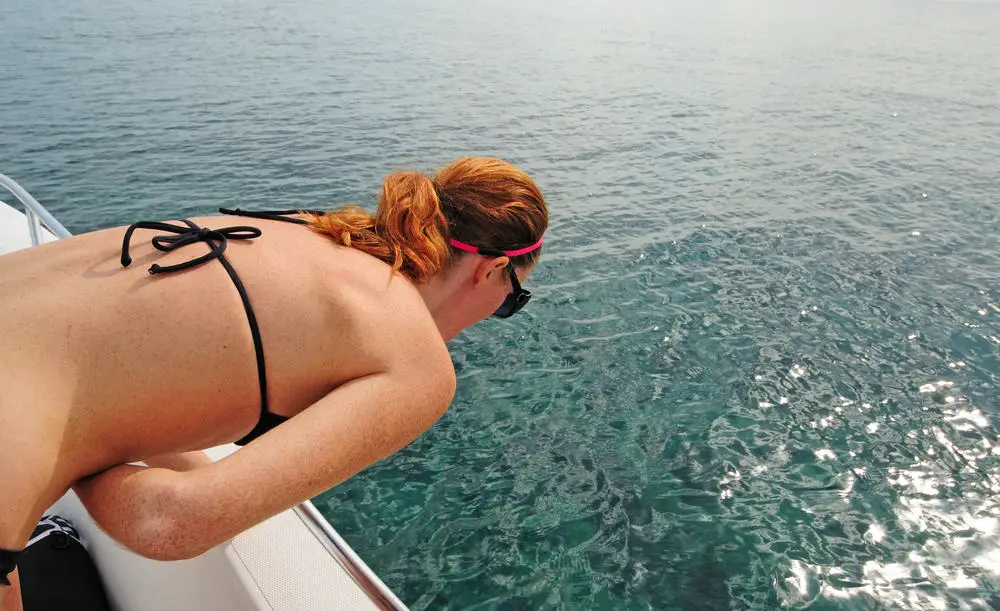
As an Amazon Associate, we earn from qualifying purchases. We may also earn commissions if you purchase products from other retailers after clicking on a link from our site.
Are you planning to go on a snorkel trip, for a day sail or maybe even considering buying a Catamaran and you are interested in how seasickness, also known as motion sickness, might affect you? You have come to the right place!
The study found that both horizontal and vertical accelerations contribute to seasickness on board, meaning that seasickness is three times less on a passenger ship with a catamaran configuration, compared with a single-hulled vessel. *
Seasickness on a Catamaran is not only possible but is also common due to the rolling way the boat moves in the water. Compared to monohulls, catamarans are more stable which in comparison reduces the risk of seasickness to people on board.
Considering that a catamaran moves differently in the water, it should also generate seasickness in different situations? correct! so while monohulls generally roll slower due to the heavy keel hull, a catamaran moves quicker and with a movement that is far more predictable, and predictability is key when trying to mitigate seasickness.
When it comes to the rocking motion, due to the wide distribution of weight the catamaran will move not only slower but also tilt with a smaller angle. This greatly reduces the very uncomfortable movements that throw you around inside a monohull.
In a catamaran, on the other hand, you can go inside, get protection from the weather, avoid the noise of the engines (since they are placed in the hulls and you are in the deck up top) but still be able to see the horizon and thus anticipate the next wave, if you’re lucky you might also be able to let a little bit of breeze in through the windows.
Will it happen to you?
A survey done by BBC states that 62% of people that were taking part in the global challenge get seasick on nearly every passage, and these are experienced sailors traveling the world. When it comes to seasickness it’s a lot about luck, some get it every time, some may never get it.
Don’t let this scare you away, these people are talking about crossing the Atlantic and sailing around the world, this is not comparable to going on a day charter in the Mediterranean or any other place where weather of course can be bad but safe harbors is only an hour away, in fact, many of these charter boats are made specially to be very comfortable and enjoyable to sail, and part of enjoying sailing is to reduce the risk of seasickness so don’t let that stop you!
Being prepared is always good so below I will give you my best tips on getting the most enjoyment out of your day on the water!
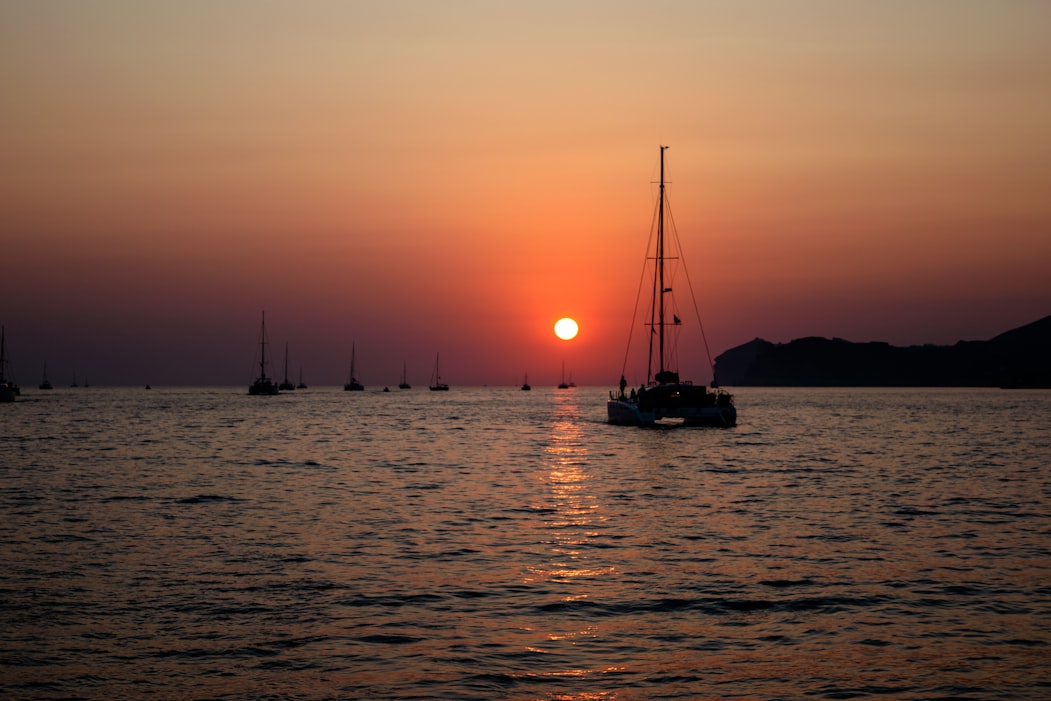
9 tips to combat seasickness!
So considering the information above traveling on a catamaran reduces the risk of motion sickness/sea sickness, so for those of you who would like to get extra prepared here are 9 of my favorite tips!
1. Make sure you see the horizon
Positioning yourself for success, well maybe this isn’t usually what that means but when it comes to seasickness there are a few benefits to being on a catamaran.
One common situation is that someone gets sick and they want to go inside, away from the waves and noises. This is usually not the best option, especially not on a monohull where not only can you not see the horizon, but oftentimes you now have to combat the noise and fumes of the diesel engine and possibly also higher temperature and less fresh air.
So position yourself close to the center of the boat, with a good vision of the horizon with plenty of fresh air and away from the diesel fumes.
2. Sleep your 8 hours
This might not be much of a tip if you’re on a day trip and really want to enjoy the most out of it, but if your doing a longer crossing one of the best things I have encountered is to get some good sleep, not only during the sail, but I also make sure that I am fully rested beforehand and have some good strength to counter the weather.
3. Eat well before and during
This in conjunction with sleeping doesn’t only apply to sailing it applies to your entire life, so make sure you eat healthily before, during, and after. I would also recommend preparing some food for the trip so when you’re starting to feel a little sick you already have some food that you like and that you can easily digest. Especially if you’re on a long journey on a monohull and have to go down into the hull to make it!
Even though I say eat well I also mean eat light, don’t stuff yourself before leaving port, but eat som light stuff, I mean you don’t want to waste all that good food by throwing it up anyway right? 🙂
4. Try Ginger products4. Try Ginger products
Personally, I have had a great effect with ginger tea or different products with ginger in them, maybe not very scientific, but it seems to be working for me and my friends, so give it a try. It comes in many forms and shapes, cookies, drinks, pills you name it they probably make it.
5. Medications
I’m not much of a medication guy, that’s probably my hippie side, but I understand some people get good effects since I’m not a doctor or a pharmacist I’m not going to recommend anything but I’ll give you a few topics to discuss with your doctor/pharmacist and maybe you can figure something out together.
- Behind the ear patches (scopolamine)
- Motion Ease oil

6. Don’t drink alcohol
Sorry about this one, but if you want to counter something called motion sickness (aka seasickness) you probably shouldn’t drink something that makes your world wobbly without even being on a boat. Drink water or try the ginger stuff, also many people have good success with coca-cola.
And also, being hungover sucks, being hungover on a sailboat makes you want to jump overboard.
7. Stay Active
Try to activate yourself with things other than thinking about how bad you feel. Try to focus on the coming snorkeling or how good the weather is, this is a great moment for some of that spiritual mental strength stuff if you, just like me, are into that stuff. ask the captain if you can help out with the boat, or prepare something for the coming stop.
8. Sail in the smooth direction
So talk to the captain, ask him or her whether there is a direction that you can sail so that the rolling of the boat is minimized, it might take you a little bit longer to get where you want to go, but in exchange, it might be a waaay better experience. On a catamaran, this would be with the wind in your back, and on a monohull, I would head a little bit more into the wind.
9. Sit down
Sitting down and trying to relax releases some of the physical strain on your body, just make sure you sit down close to the center and with a view of the horizon as mentioned above.
This might also be a good time to catch up on that podcast or listen to some realaxing music.
* Project: A Rational Approach for Reduction of Motion Sickness & Improvement of Passenger Comfort and Safety in Sea Transportation
Owner of CatamaranFreedom.com. A minimalist that has lived in a caravan in Sweden, 35ft Monohull in the Bahamas, and right now in his self-built Van. He just started the next adventure, to circumnavigate the world on a Catamaran!
Leave a Reply Cancel reply
Your email address will not be published. Required fields are marked *
Save my name and email in this browser for the next time I comment.
Recent Posts
Must-Have Boat Gear for Catamaran Sailors!
Sailing is probably the most gear-intensive activity I've ever done; there are so many decisions to be made about what gear to buy now, for tomorrow, and what to definitely never buy. The gear on...
6 Best Trailerable Trimarans For Bluewater and Coastal Sailing
Having a boat costs a lot of money, even when you are not using it, marina fees, etc. And once it is in the water most sailors never go very far from their "home marina" and sailing will be somewhat...
Catamaran vs Monohull in Rough Seas: Which is Better?
Catamarans and monohulls have different designs that affect how they handle rough sea conditions. In fact, they have an advantage over each other when sailing in heavy seas. Let's try to compare each type of vessel based on their performance, design, and stability, to help you decide which can give you a safer and more comfortable journey on the open water.
Regarding speed, efficiency, and stability, a catamaran may be the better option for you. Because they have twin hulls, they are more comfortable to sail in rough seas. A monohull can become more advantageous in rough seas when sailing upwind since it can point higher into the wind and can handle strong winds easily.
Catamarans with two rudders also allow for better control and maneuverability in rough seas compared to monohulls, which only have one rudder. Let's look at more of the comparison between these two types of boats when sailing through big waves in the sea.
- When it comes to stability and comfort, catamarans can provide more stability. They are also less likely to cause seasickness and offer more living space and privacy.
- In terms of speed, catamarans are also faster than monohulls because they have a smaller displacement. Their structure also makes them less likely to capsize or sink.
- A monohull is advantageous when it comes to sailing upwind, and handling stronger winds. Their deep keel also provides them with increased stability and reduces drag, which can be an advantage in rough seas.

Catamarans Vs. Monohulls in Rough Seas
If you're planning to buy a boat, and you're deciding whether to go for a catamaran or a monohull, one of the many things you may need to consider is how they perform in rough seas. Rough seas can be challenging for any vessel, but some boats are better equipped to handle them than others. Below is a table summarizing how well these boats perform in rough seas:
A catamaran is a boat with two hulls connected by a deck. Because they have two hulls , catamarans are known for their speed, stability, and spaciousness. They are often used for cruising and chartering, as well as racing. They also have a wider beam than monohulls, which means they offer more living space and stability. They are less likely to heel or tilt to one side, are more buoyant, and have a shallow draft.
On the other hand, monohulls are the most common type of boat with only one hull. They are known for their simplicity, versatility, and affordability. Monohulls are often used for day sailing, racing, and cruising.
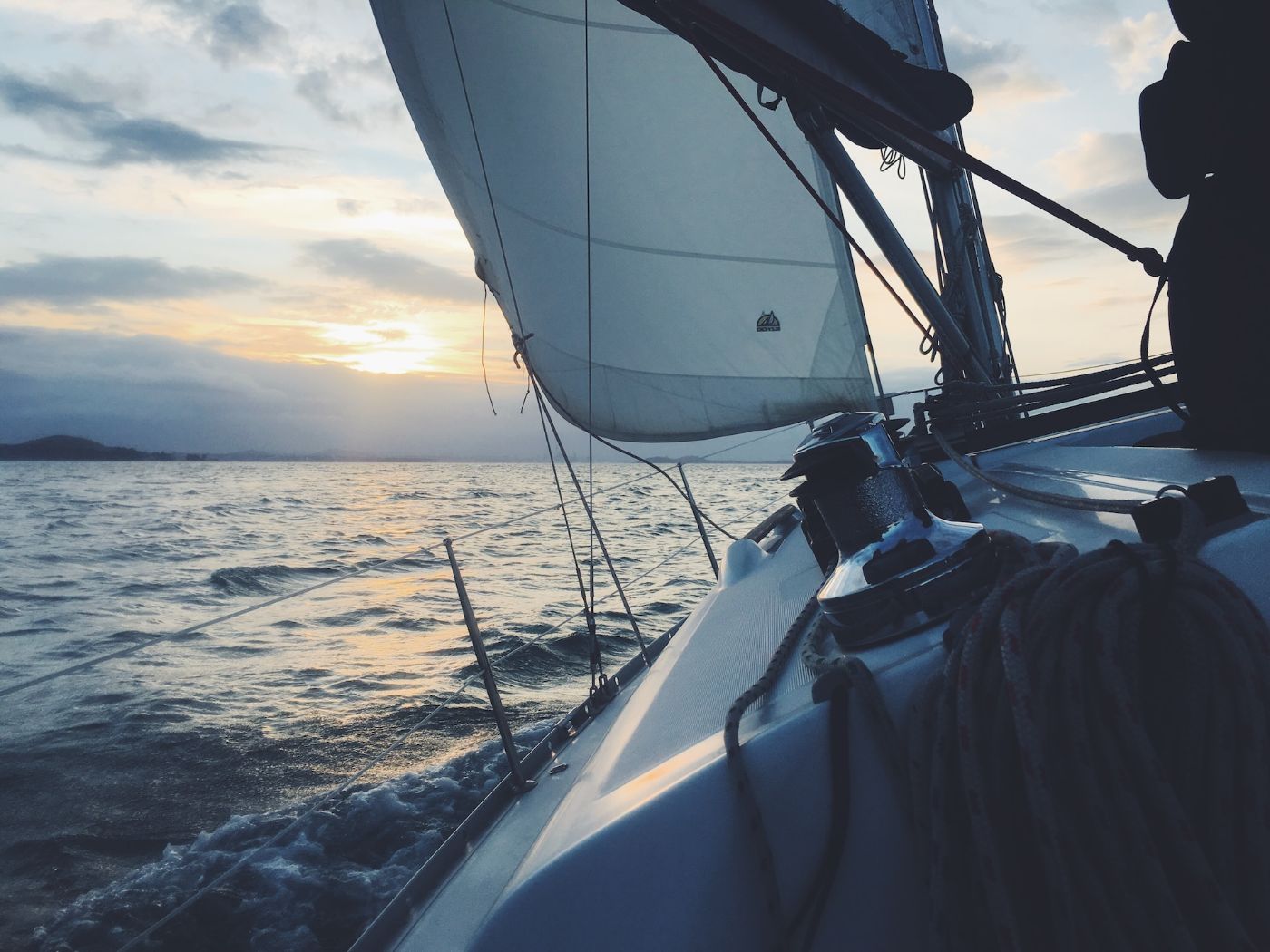
When it comes to rough seas, catamarans are generally more stable than monohulls in terms of roll stability. Monohulls, on the other hand, are better at handling heavy seas and high winds, but they can be more prone to rolling and pitching, and can significantly heel more than a catamaran.
If you are aiming for speed, efficiency, and stability, then a catamaran may be the better option for you. They are generally faster and more efficient due to their twin hulls, and their stability can make for a more comfortable ride in rough seas.
On the other hand, if you prioritize upwind sailing performance, sailing feels and responsiveness, and the traditional look and feel of a sailboat, then a monohull may be the better option for you. Monohulls sail closer to the wind and have a unique feel to them that some sailors prefer.
Detailed Comparison Between Catamaran And Monohull
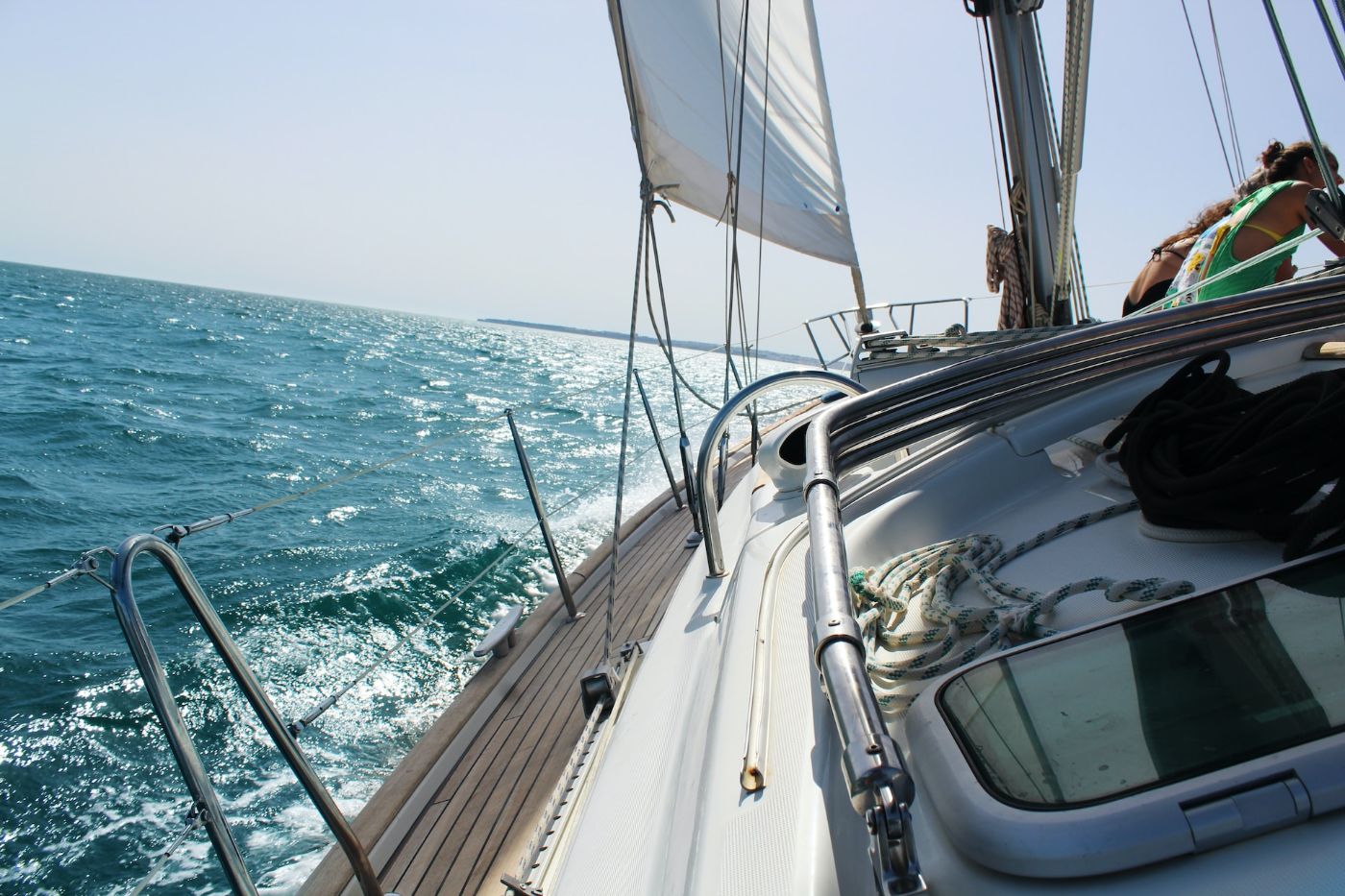
Catamarans provide better stability and comfort
Catamarans are more stable, less likely to cause seasickness and offer more living space and privacy. Below is a table summarizing why catamaran is more advantageous in this category:
In terms of motion in rough seas
Catamarans are more stable in rough seas because they have two hulls instead of one. This means that they are less likely to roll or heel, which can make for a more comfortable ride. Monohulls, on the other hand, tend to pitch and roll more in rough seas.
In terms of handling seasickness
If you are prone to seasickness, a catamaran may be a better choice for you. The stability of a catamaran means that it is less likely to cause seasickness than a monohull. Additionally, the living space on a catamaran is often spread out between the two hulls, which can help to reduce the feeling of confinement that can contribute to seasickness.
In terms of living space and privacy
Catamarans also tend to offer more living space and privacy than monohulls. Because the living space is spread out between the two hulls, each hull can function as a separate living space. This can be especially beneficial if you are traveling with a group of people and want to have some privacy.
Both boat types have specific advantages in performance and speed
A catamaran is generally faster and more stable than a monohull, but a monohull can be easier to handle in certain conditions.
In terms of navigating upwind
When sailing upwind, a monohull has the advantage over a catamaran due to its ability to point higher into the wind. This means that a monohull can sail closer to the wind than a catamaran, which will need to tack more often. However, a catamaran can make up for this disadvantage with its speed. A catamaran can sail faster than a monohull , which can help it to cover more distance in less time.
In terms of handling strong winds
In strong winds, a catamaran is generally more stable than a monohull due to its wider beam. This means that a catamaran is less likely to heel over, making it more comfortable for passengers. However, a monohull can be easier to handle in strong winds due to its ability to reef the sails. By reducing the sail area, a monohull can reduce the amount of wind it catches, making it easier to control.
Catamarans and monohulls have different designs and function
Catamarans offer more deck and cabin space, shallow draft, and increased buoyancy, while monohulls have a deeper draft, reduced drag, and increased stability.
In terms of the deck and cabin space
One of the advantages of catamarans over monohulls is their wider beam, which provides more deck space. This means more room to move around and increased stability, which is important in rough seas.
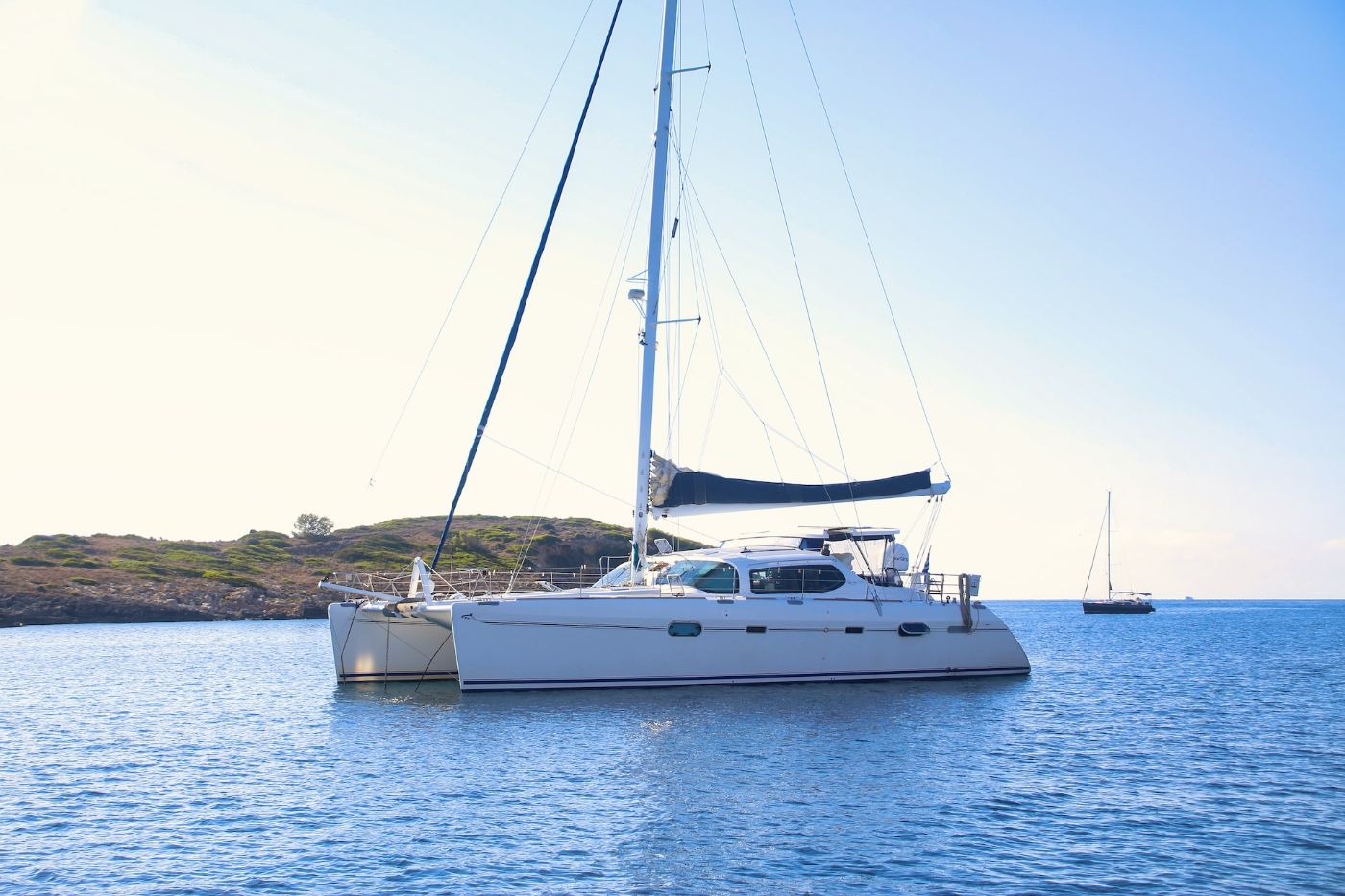
Additionally, catamarans usually have two hulls, which means more cabin space and privacy for the crew and passengers. On the other hand, monohulls have a single hull, which means less deck and cabin space. However, monohulls usually have a deeper draft, which allows them to sail closer to the wind and tack more efficiently.
In terms of draft and buoyancy
Catamarans have a shallow draft, which means they can sail in shallow waters and anchor closer to shore. This makes them ideal for exploring shallow coves and bays. Also, catamarans have two hulls, which provide increased buoyancy and stability in rough seas.
Monohulls, on the other hand, have a deeper draft, which makes them less suitable for shallow waters. However, their deep keel provides increased stability and reduces drag , which can be an advantage in rough seas.
Both boat types have unique safety considerations
Safety is a top priority when sailing in rough seas. Catamarans are generally more stable and easier to control, while monohulls have a greater risk of capsizing but are also more maneuverable in certain situations.
In terms of the risk of capsizing
One of the biggest safety concerns when sailing in rough seas is the risk of capsizing. Catamarans have two hulls, which make them more stable than monohulls. This means that they are less likely to capsize in rough seas. Catamarans are also technically unsinkable , meaning that they will not sink even if one hull is damaged or flooded.
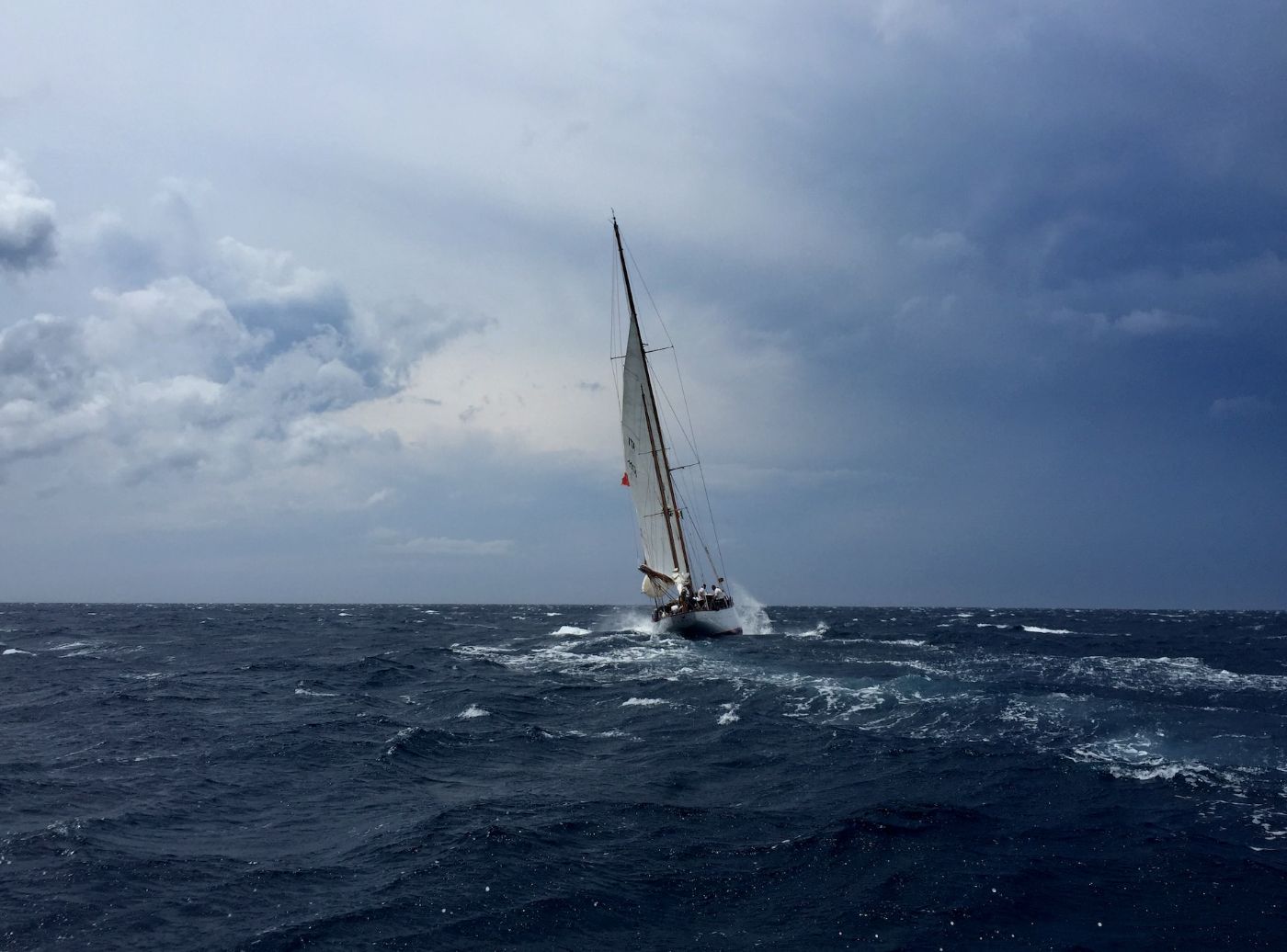
On the other hand, monohulls have a keel and ballast, which provide stability but also increase the risk of capsizing. If a monohull capsizes, it can be difficult to right the boat and prevent it from sinking.
In terms of navigational control
Catamarans have two rudders, which provide additional control and maneuverability in rough seas. This means that you can steer the boat more easily and avoid obstacles like rocks and other boats. Meanwhile, a monohull only has one rudder.
However, despite the number of rudders involved, the ability to control and maneuver the boat, whether a catamaran or a monohull, still depends on the design and construction of the boat, as well as the skill of the captain and crew in handling the boat.
Other practical considerations when choosing between catamaran and monohull
In terms of docking and anchorage.
Docking and anchorage can be easier with a catamaran due to the wider beam, which provides more stability. However, catamarans can be more difficult to maneuver in tight spaces due to their size. On the other hand, monohulls are generally easier to maneuver in tight spaces, but they may be less stable in rough seas.
For docking costs, catamarans tend to have higher docking rate costs due to their size and wider beam. Read this article to know more about the costs of docking a catamaran in different locations.
In terms of storage and equipment
Catamarans typically have more storage space than monohulls due to their wider beam and larger deck area. This means they can carry more gear and supplies, making them a good choice for longer voyages or liveaboard situations. They can accommodate larger equipment such as dinghies, kayaks, and paddleboards - making them a great choice for water sports enthusiasts who want to bring their gear along.
Monohulls, on the other hand, have less storage space due to their narrower beam and smaller deck area. This means they are better suited for shorter trips or day sailing, where less gear and supplies are needed. Monohulls may also be better suited for certain types of equipment, such as fishing gear or diving equipment, due to the layout of the boat.
In terms of crew accommodations
Catamarans tend to have more spacious accommodations than monohulls, which can be an advantage for longer trips or when traveling with a larger crew. However, monohulls may offer more privacy for individual crew members due to the separate cabins and tighter quarters.
Catamarans generally have more living space than monohulls so they can offer more room for sleeping, lounging, and cooking, which can be especially beneficial for larger crews or families. They also often have large, open salons and cockpits that allow for easy socializing and entertaining. This can be a great feature for crews who enjoy spending time together.
Monohulls, on the other hand, have less living space than catamarans due to their narrower beam. This means they may be better suited for smaller crews or shorter trips. They often have cabins located closer together, which can make it easier to communicate and work together as a crew, which is a plus for racing or cruising in crowded areas.
Choosing boat type based on personal preferences
In terms of aesthetics and personal taste.
One of the first things that come to mind when choosing between a catamaran and a monohull is aesthetics. Both types of boats have their unique look, and it is up to personal preference which one you find more appealing. Some people prefer the sleek and modern look of a catamaran, while others prefer the classic look of a monohull.
Another thing to consider is personal taste. If you are someone who prefers a more spacious and open boat, then a catamaran might be the right choice for you. On the other hand, if you prefer a more traditional sailing experience, then a monohull might be the better option.
In terms of suitability for families and couples
Basically, catamarans are known for their stability and spaciousness, making them a great choice for families with children or couples who want to have more space and privacy.
Monohulls, on the other hand, might not be as spacious as catamarans, but they offer a more traditional sailing experience. If you are a couple or a small family who wants to experience the thrill of sailing and doesn't mind being in close quarters, then a monohull might be the right choice for you.
Leave a comment
You may also like, cost of catamaran vs. monohull: which is more expensive.
The market for monohull sailboats is a lot bigger than that of catamarans, which is one of the reasons why they are so much cheaper.
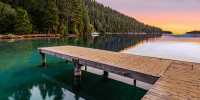
How Much Does It Cost to Dock a Catamaran? (7 Locations)
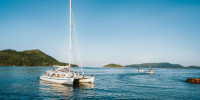
The Perfect Size Catamaran to Sail Around the World

17 Sailboat Types Explained: How To Recognize Them
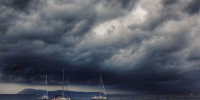
What Type of Hull Handles Rough Water the Best?
Own your first boat within a year on any budget.
A sailboat doesn't have to be expensive if you know what you're doing. If you want to learn how to make your sailing dream reality within a year, leave your email and I'll send you free updates . I don't like spam - I will only send helpful content.
Ready to Own Your First Boat?
Just tell us the best email address to send your tips to:
- PHOTOGRAPHY & SPECIALTY
- ITINERARIES & THE WILDLIFE
- THE LUX LIFE (RELAIS & CHATEAUX)
- GASTRONOMY FOR FOODIES
- Uncategorized
- CONSERVATION IN GALAPAGOS
TRAVEL TIPS & EXTENSIONS
- TRAVELING WITH THE FAMILY
- AS SEEN IN THE MEDIA
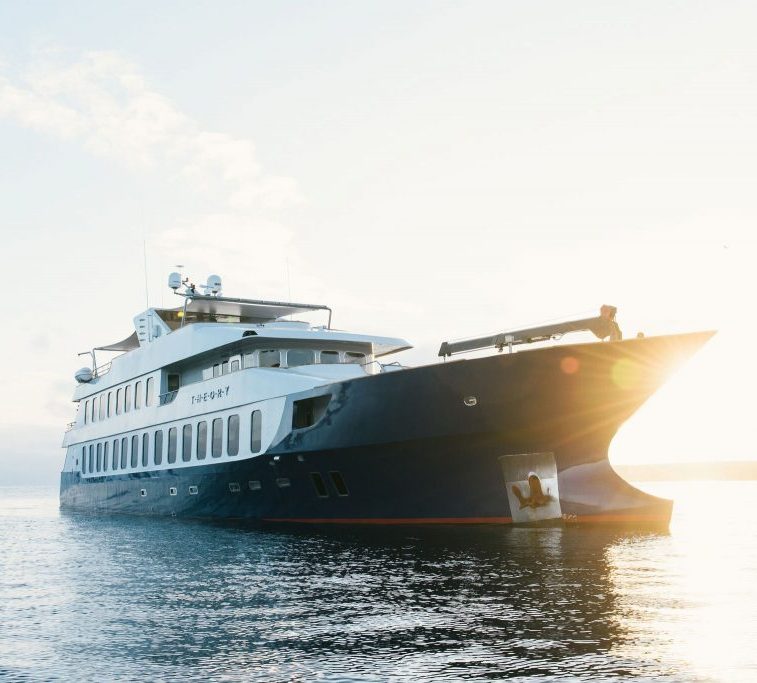
Galapagos Yachts: Unravelling the myths and avoiding seasickness
AUTHOR Daniel Andino 18 September 2019
Unravelling myths about which boat is best for sea-sickness. Should you go for the catamaran or mono-hull? Larger vessel or yacht?
One question often asked before embarking on a cruise is whether passengers are likely to get seasick, and what type of boats are most likely to cause it – catamarans vs more traditional monohulls, or larger vessels vs smaller ones.
Whilst reports of seasickness aboard our yachts are rare, we would like to outline a few of the pros and cons of various yachts and give some tips for avoiding seasickness whilst on board.
Small can still be stable
It’s worth noting that larger yachts are inherently more stable than smaller ones due to their greater weight, lower center of gravity and the fact that they are less affected by wave motion, so the debate over stability is largely related to smaller yachts designed for families or small groups – not so relevant for ships such as ours designed for 20 guests as well as the crew, guides and staff.
Having said that, our yachts have a maximum of 20 guests, ensuring the highest guide-to-guest ratio in the Galapagos and the best chance to enjoy the pristine wilderness the archipelago has to offer. After all, there are many benefits to not sharing an excursion with 50-100 other guests all disembarking from a cruise ship.
Catamarans vs Monohulls
It is commonly believed that catamarans – multi-hulled vessels featuring two parallel hulls of equal size – tend to be more stable. The wider stance and two-hulled design are commonly believed to reduce roll compared to a monohull model, and catamarans tend not to rock gently at anchor in the way monohulls can.
However, monohulls sit lower in the water with more of the boat under the water level. They are designed to slice through the water – it is often said that monohulls work with the elements instead of trying to fight them. In addition, catamaran design has other drawbacks. When the raised underside connecting the two hulls is hit by waves, the sound and impact can reverberate around the vessel in an annoying “slap” or drumming noise – not ideal when you’re trying to sleep or relax after a long day of excursions.
Romance never dies
And given that the traditional design of a monohull gives it that more attractive, graceful and romantic look, whilst allowing for more spacious, roomy interiors, it’s no surprise that our Ecoventura fleet are monohulls and we’re proud of it! They are also smaller than the other Galapagos cruise ships , bringing its own set of advantages , as noted recently by US travel writer Kimberly Bloom .

Regardless of any personal views on the stability of a catamaran vs a monohull, or indeed the benefits of a smaller or a larger yacht to stave off seasickness, the good news is that our ships have all been specifically designed with stability in mind (and fuel efficiency , of course), and reports of seasickness amongst our guests are exceedingly rare.
The Origin and Theory have curved bows designed to cut through waves, reduce bow to stern movement and improve stability. With a low center of gravity and fixed stabilizers known as bilge keels, roll (ie port to starboard movement) is kept to a minimum ensuring enhanced comfort and safety for all on board.

Despite all this, if you happen to find yourself feeling a bit queasy, here are some useful tips to keep in mind :
- Waters in the Galapagos tend to be calmer between January and June, so consider booking in these months. September and October may see stronger currents due to the movement of the Humboldt current.
- The middle of the boat, or the lower decks, tend to have less lateral movement.
- We would, however, normally suggest getting on to the top deck for some fresh air – the sun decks and observation areas are ideal for this.
- Along with fresh air, facing forwards and glancing at the horizon are well-known ways to reduce seasickness.
- We recommend light meals rather than anything too heavy, spicy or acidic, and ensure you drink plenty of water to avoid dehydration.
- Some foods are said to help seasickness, such as ginger or peppermint, whilst there are also prescription and over-the-counter remedies known to help – we also stock certain seasickness pills on board for emergencies, including Mareol and Anautin.

We wish you a wonderful trip with us. Please don’t hesitate to reach out to our team should you have any further questions: [email protected]
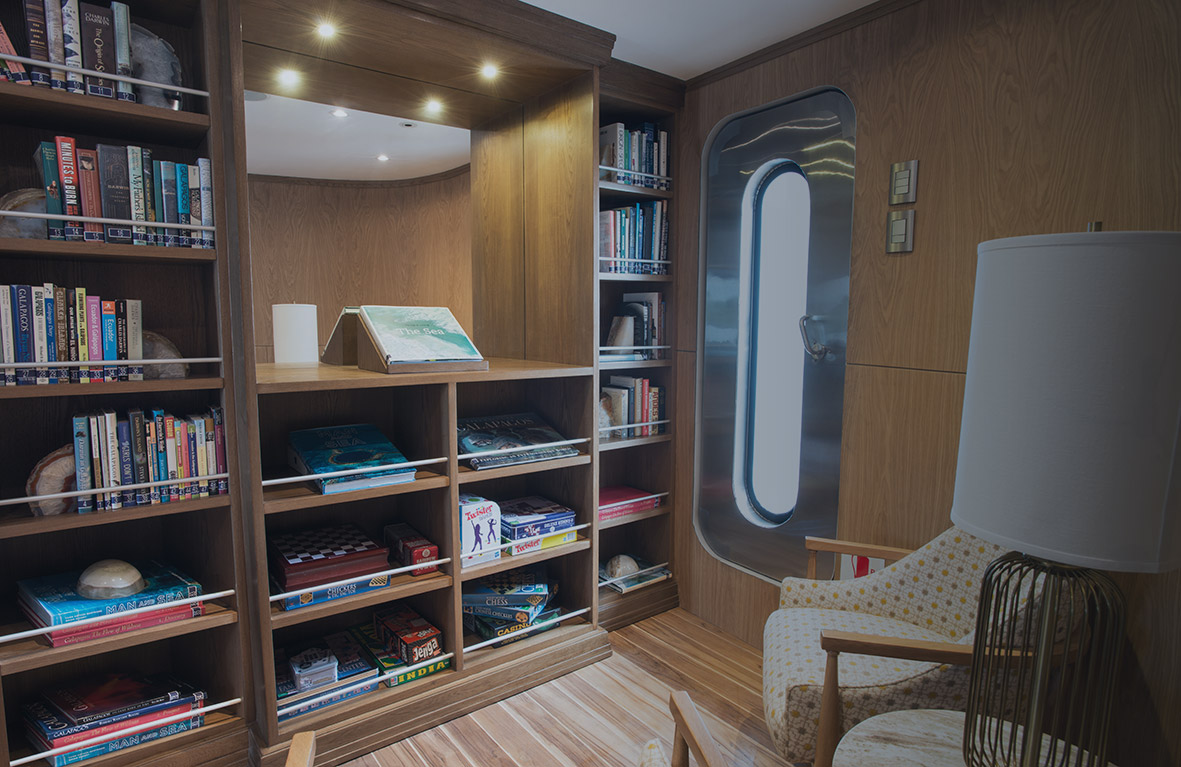
Recommended Reading and Viewing for your Galapagos cruise
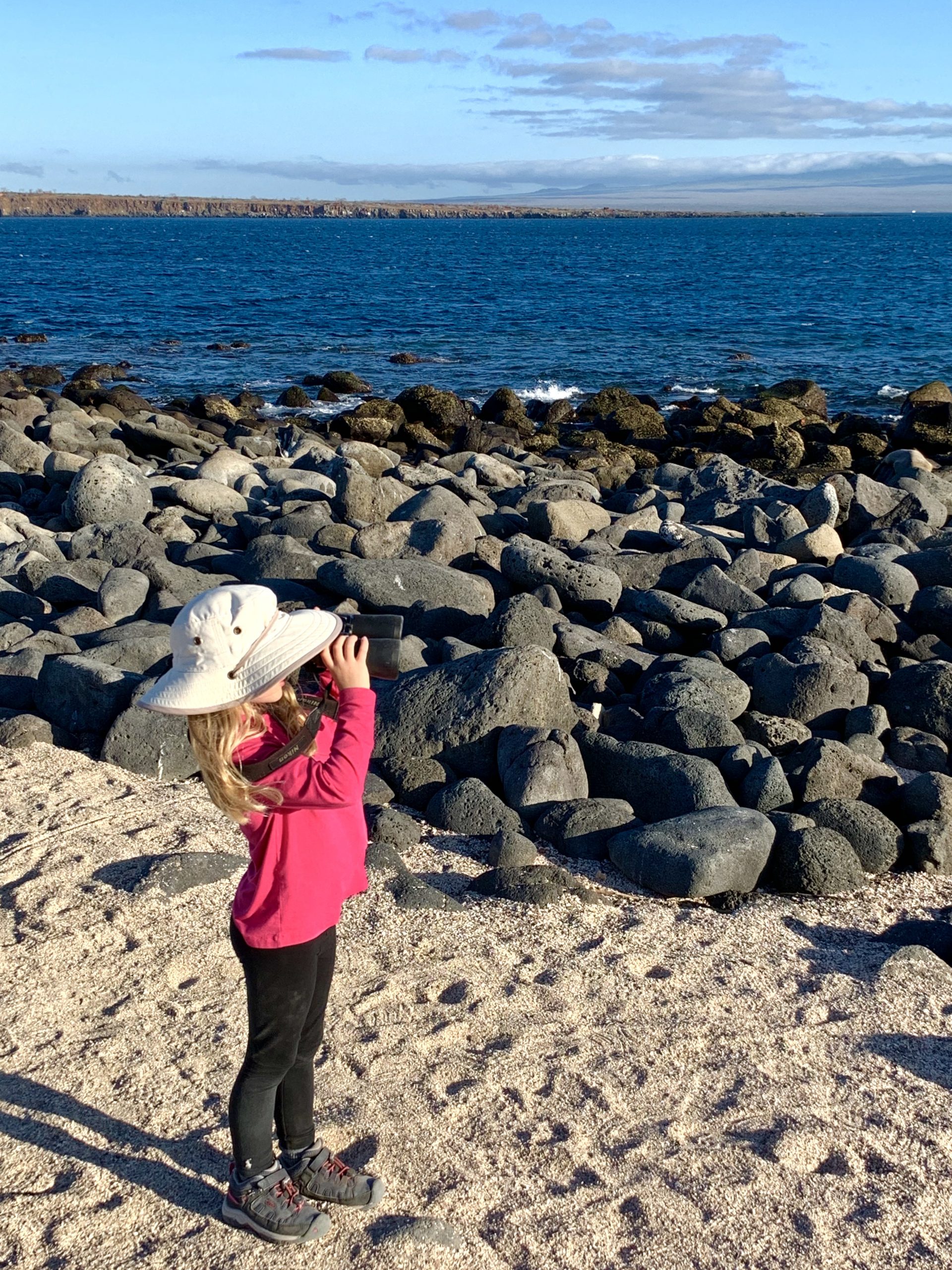
What your children will learn on a cruise to the Galapagos - Kimberly Bloom
Get news from abroad.

Yacht vs Catamaran: Which Boat is Right for You?
- On October 23, 2023
- No Comments
When it comes to leisure boating, two of the most popular options are yachts and catamarans. But what exactly is the difference, and which one is better suited for your needs?
In this comprehensive guide, I’ll compare the key characteristics between monohull yachts and twin-hulled catamarans.
Visual Comparison of Catamaran and Yacht Designs
How they differ in handling and performance, onboard living spaces and amenities, ownership and operating costs, which boat is right for you, defining catamarans and yachts.
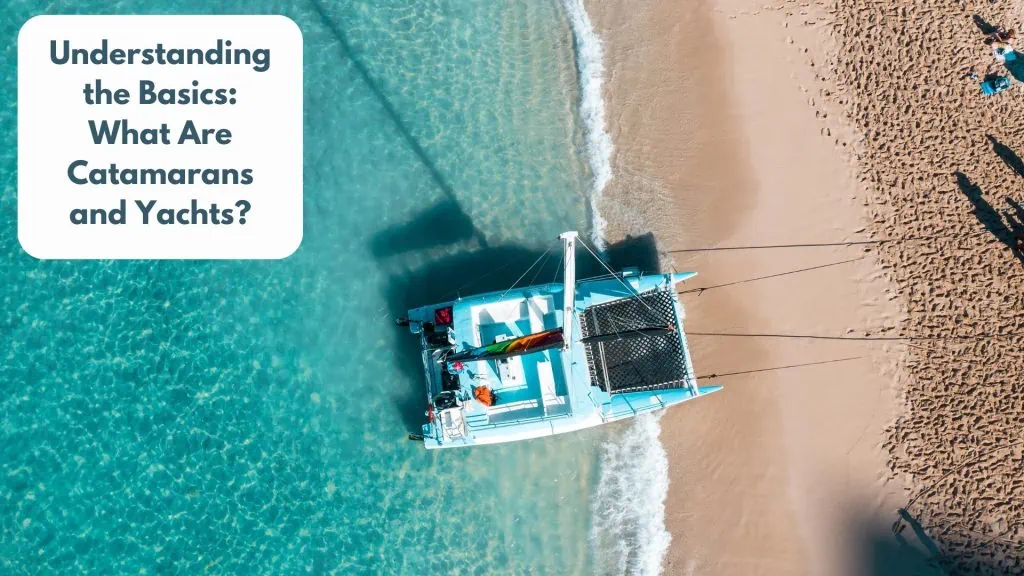
A catamaran is a type of multihull boat featuring two parallel hulls connected by a central deck. This twin-hull design provides more stability, expansive interior space, and shallow draft.
Yachts, on the other hand, have a single continuous hull and are known for their elegant aesthetics, lavish amenities, and versatility for long-range cruising.
Here’s a quick visual comparison of the general shapes and hull configurations:
Catamarans typically range anywhere from 40 to 70 feet in length, while yachts can be as small as 30 feet or over 100 feet for superyacht models.
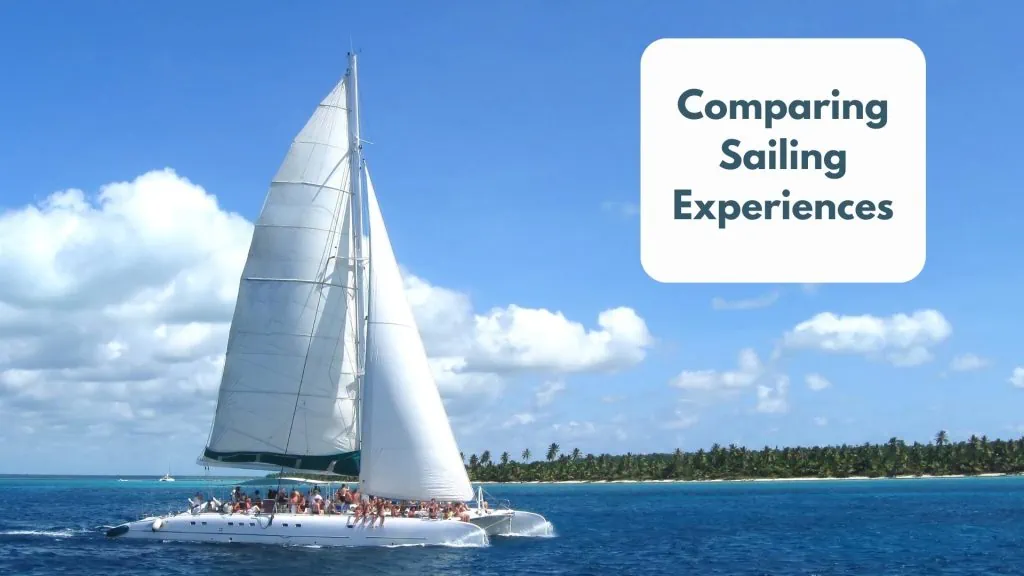
When it comes to maneuverability and sailing dynamics, there are some key distinctions between catamarans and yachts:
- Speed – Catamarans are lighter and have reduced drag, making them significantly faster than yachts. Top speeds can reach up to 25 knots.
- Stability – With their twin hulls, catamarans offer unmatched stability and minimal rocking motion in rougher seas. This also reduces seasickness.
- Maneuverability – Yachts take more skill to maneuver tight spaces, while catamarans can turn 360 degrees within their own length.
- Windward Performance – Yachts point higher into the wind and sail more efficiently upwind. Catamarans excel on reaches and downwind sailing.
So for performance-oriented sailing, monohull yachts have some advantages. But catamarans trade maneuverability for supreme stability and comfort on the water.
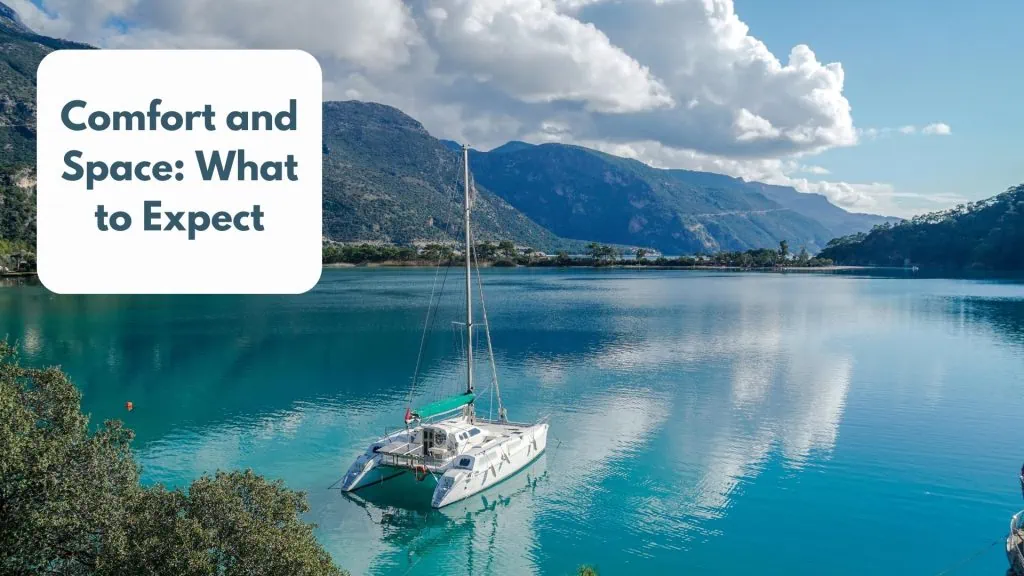
One major differentiation between these two boat types is the onboard living spaces and amenities. Some key comparisons:
- Deck Space – With their spacious bridge deck, catamarans offer ample lounging and relaxation space for large groups. Yachts have more confined deck space.
- Cabins – Catamaran cabins are typically larger and more comfortable. But yachts allow for more privacy when chartering with other couples or guests.
- Entertainment – Yachts focus more on lavish entertainment amenities like high-end sound systems, theaters, and bars. Catamarans offer more outdoor fun.
- Overall Comfort – For stability, living accommodations, and seasickness reduction, catamarans are vastly more comfortable boats.
So catamarans excel when it comes to providing generous living areas for group getaways and family vacations. But yachts are tailored more for couples charters and luxury amenities.
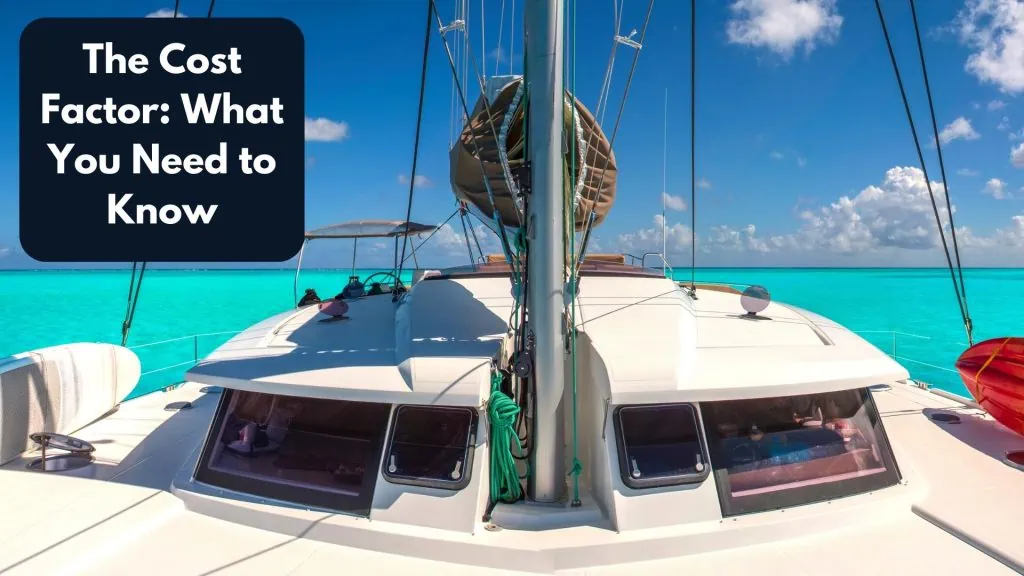
A significant factor to weigh is the overall ownership costs between catamarans and yachts:
- Purchase Price – Due to larger size and dual engines, catamarans come at a higher initial purchase cost. Yachts are more affordable for comparable lengths.
- Fuel Efficiency – With two engines to power, catamarans use almost twice as much fuel to operate. Yachts are more efficient.
- Docking and Marina Fees – Catamarans incur higher fees because they take up more dock space, especially in high-traffic areas.
- Maintenance – More complex systems and dual engines onboard catamarans equate to higher lifetime maintenance costs.
- Resale Value – Depreciation varies widely, but yachts tend to retain resale value better in the pre-owned market.
Clearly, the costs of owning and operating a catamaran are substantially higher compared to a similar-sized yacht. Being aware of these expenses will help determine the right boat for your budget.
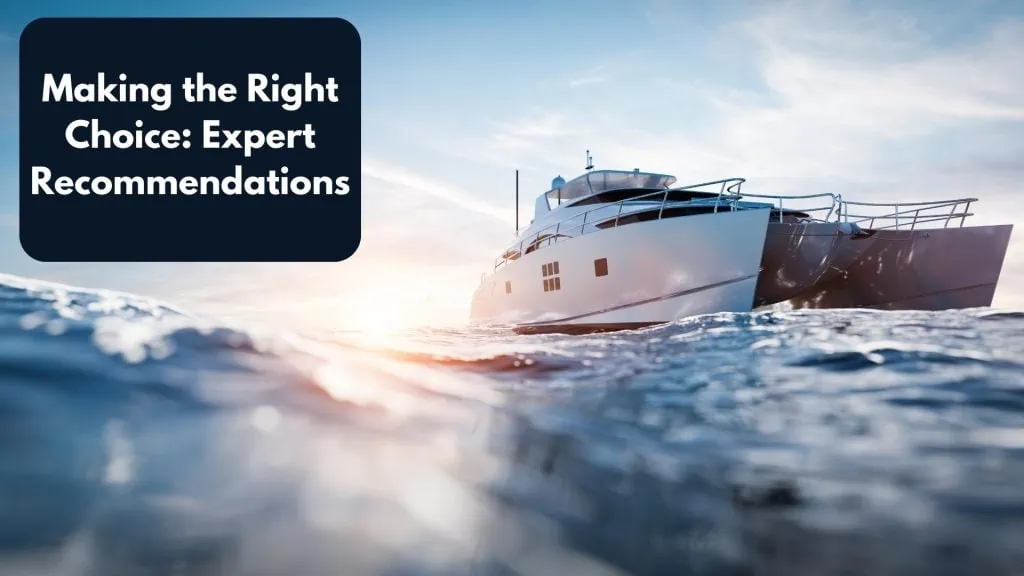
We’ve covered a lot of comparisons, so which boat type is the best choice? Here are some quick recommendations based on needs:
- For comfort, stability, and spaciousness on extended cruising trips – Catamaran
- For performance-focused sailing and nimble maneuverability – Yacht
- For luxurious amenities and entertaining small groups – Yacht
- For exhilarating speed and family-friendly features – Catamaran
- For affordable purchase and lower operating costs – Yacht
Of course, it depends on your individual priorities and boating style. Charter both for a test run to see which you enjoy more. At the end of the day, the right boat is the one that fulfills your needs and invites you to experience the magic of the open water.
Hopefully this guide has provided a helpful overview of the core differences between catamarans and yachts. Let the voyage begin!
- https://catamaranguru.com/catamaran-vs-monohull-we-changed-should-you/
- https://blog.cancunsailing.com/en/diferencia-entre-yate-y-catamaran
- https://www.mbcyachts.com/types-of-yachts-and-their-pros-and-cons/
- https://makaiyachts.com/power-catamaran-vs-monohull/
You might also be interested in reading:

The Top 3 Boat History Report Websites Reviewed
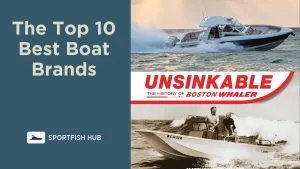
The Top 10 Best Boat Brands
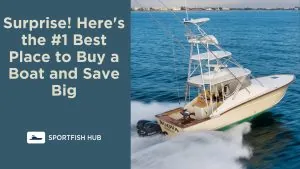
Best Place to Buy a Boat
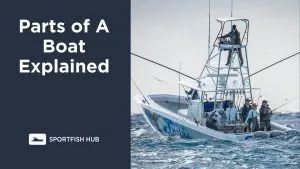
Parts of A Boat Explained
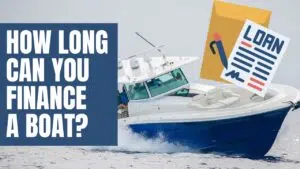
How Long Can You Finance A Boat

Steve Momot
Steve is an accomplished professional photographer and marketer who specializes in the Fishing, Yacht, and Boating industry. With a strong presence as an influencer and marketing expert in the Marine Industry, he has made a significant impact in the field. Additionally, Steve is the original creator and co-founder of Sportfishtrader. Prior to his career as a marine photographer, he gained extensive experience as a licensed boat and car dealer in South Florida.
Leave a Reply Cancel reply
Your email address will not be published. Required fields are marked *
You might also like.

Who Makes The Biggest Sport Fishing Boat?

Fishing Memes

What is Sportfishing?

Sportfish Hub was founded with a clear and unwavering mission in mind: To provide boaters and fishermen with the highest quality content, offering invaluable insights, tips, and resources.
- Terms of Service
- Privacy Policy
SOCial Media
Get in touch, © 2023 | all rights reserved.
- Yachting World
- Digital Edition

Seasickness: How to prevent it and how to cope with it
- March 10, 2021
Professional sailors and everyday cruisers alike can suffer from seasickness. How do you you plan for it and how to you minimise the effect when at sea? Rachael Sprot tell us her secrets.

On one of my earliest trips as a professional sailor a wise old skipper gave me some seasickness advice at watch change. “Watch the green ones, they’ll rush for the leeward rail and if they aren’t clipped on there’s a strong chance they’ll go over,” he said. “And what’s more, they won’t care if they do.”
I gulped and looked at my crew. Their faces resembled a Farrow and Ball paint chart: lichen green, skimmed milk white and ash grey. We were en route to Cherbourg from the Solent. By the time we got to the shipping lanes I only had one crew member left on the deck of the 80ft maxi, the rest were in their bunks.
Inglorious and debilitating as it is, the green monster of seasickness strikes indiscriminately.

Ensure seasick crew on deck are clipped on
I know several experienced skippers who resign themselves to a diet of bread and water for the first 48 hours of every offshore passage, while some complete novices who’ve joined our expeditions got off scot-free.
Even round the world sailors like Chris Nicholson and Tracy Edwards are sufferers, whilst Admiral Lord Nelson himself admitted that: “I am ill every time it blows hard and nothing but my enthusiastic love for the profession keeps me one hour at sea.”
The reality is that we all have a wave with our name on it, so we’d better have a decent plan for when the time comes.
Why do people suffer seasickness?
Seasickness is caused by the confusion between different parts of your balance mechanism.
Your inner ear is a network of fluid-filled channels sensitive to gravity and motion, called the vestibular system. Normally the information sent from here to the brain corresponds with the signals coming from the other senses such as vision.
Article continues below…

Skip Novak’s Storm Sailing Techniques Part 10: Anchoring in heavy weather
Skip Novak explains his philosophy on anchoring, based on having to hold fast in some very extreme high latitudes conditions

Rogue waves – real-life stories of the destructive power of the sea
Rogue waves have long divided sailors and scientists. Some question their existence, other schools of thought suggest that ‘freak’ waves…
On a boat, things stop adding up: according to our eyes, we’re stationary relative to our immediate surroundings, yet the vestibular system is registering constant motion. The result is that our bodies release a deluge of stress hormones resulting in symptoms such as nausea, headaches, dizziness. It’s well known that being on deck with a view of the horizon will often alleviate these.

Avoiding heavy weather is the single biggest thing you can do to prevent seasickness. Photo: Rachael Sprot/Rubicon 3
One neat but unproven theory is that the mixed messages from your body convince the brain that it’s been poisoned. Many toxins affect balance so a logical evolutionary response is to throw up when this system is under attack.
Medication for seasickness
There are many different types of seasickness tablet on the market, all working in slightly different ways.
You may need to try a couple of products before finding one that works well for you. The two most commonly available are cinnarizine (Stugeron) and hyoscine (Kwells). If you can’t take or get on with either then speak to your doctor about the alternatives. In any case, do read the user guidance carefully and, if in doubt, seek medical advice:
Cinnarizine
With the brand name Stugeron, this is an antihistamine that works on the connection between the vestibular system and other senses involved in balance. Like the antihistamines you take for hayfever it can cause mild drowsiness but, in our experience, it is well-tolerated by most people and available over the counter.
Hyoscine hydrobromide/ Scopolamine
Available as tablets (Kwells) and patches (Scopoderm) this works on the part of your brain that controls vomiting. It seems to be slightly quicker acting than cinnarizine making it a better choice if you’re caught out.

Many people swear by the patches, which last for three days and won’t be affected by vomiting. One of heir common side affects is a dry mouth but it is a good reminder to stay hydrated. Like cinnarizine, they are also available over the counter.
Promethazine
Another antihistamine, promethazine is sold as a treatment for motion sickness under the brand name Avomine.
It’s one of the constituents of Night Nurse, so no prizes for guessing that it’ll probably make you drowsy. For this reason people rarely take it for long, but it does seem to be highly effective if you can put up with the drowsiness. One or two doses in the first 24 hours usually do the trick. It’s only sold with a pharmacist’s approval, so you’ll need to fill out a questionnaire to buy it.
Prochlorperazine
Another prescription-only drug, the antiemetic, prochlorperazine is often used to treat nausea from migraines and vertigo.
Brand names include Stemetil and Buccastem. It’s not commonly used for seasickness as drowsiness is one of its main side-effects, but as it’s absorbed through the gums it can be a good option for those who can’t keep any other medication down. It’s worth asking your pharmacist for a packet to have on standby if you know you suffer badly.
How and when to take medicine
How you take your medication is just as important as what you take. As with most things on boats, prevention is better than cure.
With any seasickness medicines the key is to take them sooner rather than later. In some circumstances taking a tablet the night before departure can help by giving your body time to adjust – check the instructions first. Don’t be tempted to mix-and-match medicines without your doctor’s approval.
Seasickness coping strategies
Preventing and managing seasickness is about looking after your body. Try to keep normal routines: eat, drink and go to the loo as you would do at home, put an extra layer on when you need to and get your head down for a rest when you can.
Anxiety, fatigue, and being cold or hungry all quicken the onset of seasickness. If you feel seasickness coming on, take preventative action early: don’t martyr yourself in the galley.
Ginger has long been recognised for its stomach-settling properties and there are now scientific studies to back this up. Carry a packet of fiery crystallised ginger or make a fresh root ginger tea for maximum effect.
There’s less consensus on the effectiveness of acupressure points for motion sickness. The P6 point in the wrists can be activated by wearing special bracelets which may ease mild symptoms. I’m sceptical about their ability to keep the pressure on the correct point during a long sea voyage but it certainly won’t do you any harm.
The biggest risk from seasickness is dehydration. I always carry a tube of sports rehydration tablets and encourage anyone who has thrown up to take one. They dissolve in 500ml of water and aid a swift recovery.
If a member of crew has been vomiting for over 24 hours you should monitor their fluid input and output closely. Make sure they keep drinking, even if it comes back up again shortly afterwards.
Sealable sick-bags are a true source of comfort to a casualty confined to their bunk.

Make sail changes early and be kind to the crew and boat. Photo: Rachael Sprot/Rubicon 3
You may need to decide whether a crew needs some help managing their condition. Reassuring them it will pass and making sure they’ve topped up on tablets is a good first step. Small things can help, like making them a hot drink, or encouraging them to take the helm. I’m no fan of pressurising people to tough it out, though. If someone is starting to lose the battle, sending them to lie down is often the best option.
The single biggest thing you can do as skipper to prevent crew being seasick is avoid rough weather. Next is to give people an opportunity to get their sea legs on short training voyages before heading offshore. Put a reef in, crack off and be kind to your boat and crew. Just because you can beat to windward in 25 knots it doesn’t mean you should.
The lesson from my Cherbourg trip was that we should have thought twice about going in the first place.
If you enjoyed this….
Yachting World is the world’s leading magazine for bluewater cruisers and offshore sailors. Every month we have inspirational adventures and practical features to help you realise your sailing dreams. Build your knowledge with a subscription delivered to your door. See our latest offers and save at least 30% off the cover price.
- USA +1 954 892 5009
- UK +44 (0)20 7193 5450

- Crewed Yachts
- Destinations
How to Avoid Seasickness on a Boat
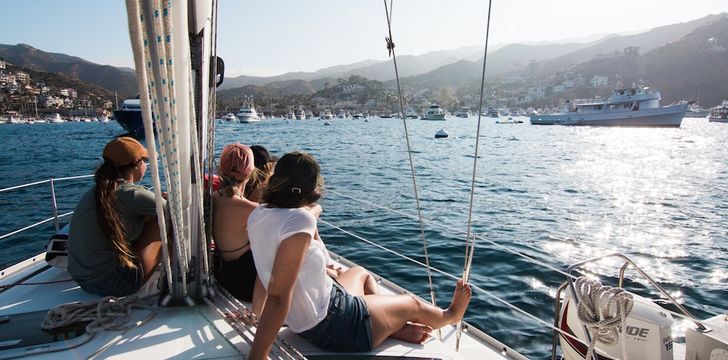
The right choice of boat, medications, activities, and itineraries can dramatically reduce the risk of becoming seasick while on a boat
If you or someone in your party has a history of seasickness, or are worried about the possibility of being seasick, there are many things you can do to reduce the symptoms. There is no shame in getting seasick, many sailors out there can get sick from the rolling around - but they have a way of dealing with them. In this page, we will discuss options to ensure you get the best out of your charter.
The three main factors that will influence the chances of getting seasick are:
1) Yacht. Choosing the right boat really can make the difference between a happy sailor and an unhappy one! 2) Medications. Being prepared for seasickness can make the difference between not getting it and getting it. Even the hardiest of sailors can still get seasick. 3) Following sensible tips either by experts or local knowledge. The Boatbookings Team have put together their expert insight into how to overcome the symptoms of being seasick!
Enquire Now!
Choosing the right boat to reduce seasickness
The boat you are on has a major impact on how seasick members of your party may feel. In general, the larger the boat, the less it rocks and the fewer people will feel seasick. Specialized boats can also help.
Catamarans . Catamarans have two hulls, they rock laterally (side to side) significantly less than a monohull. We highly recommend first-time charters of sailing yachts to charter a catamaran for lots of reasons, and reduced seasickness is one of them. Read more about the benefits of chartering a catamaran .
Additionally, motorized catamarans(also called power cats) are becoming more and more popular, for many of the same reasons that sailing catamarans are moving dramatically to catamarans. Besides the benefit of more space and less rocking, they save significant fuel, which is both good for the environment and less expensive for you! See more about power cats as well as hundreds of charter power cats available .
Motor yachts . Motor yachts are generally good for cruising due to their large size; some motor yachts have stabilizers which are additions to a boat that does exactly as advertised: stabilizing the boat and reduce rocking. They are usually found on larger motor yachts and superyachts. Without going into technical detail, they act as underwater wings that reduce the propensity of the boat to rock laterally.
Bareboats. If you are keen to charter a bareboat but are worried about some of your party being seasick, below are some recommended medications that could help - monohulls generally rock slightly more, however, this doesn't mean you won't be able to enjoy the freedom of a bareboat vacation without the concern of seasickness!
Motion sickness/seasickness medications
There are several medications you can take to reduce the effects of seasickness. Be sure to speak with your doctor before you start the charter because these medications often require a prescription and may not be available in the ports along your itinerary!
Scopolamine, normally administered with behind-the-ear patches, is the "standard" seasickness medication. It can be obtained only with a prescription. However, there may be side effects such as drowsiness and dry mouth. Other medications include dimenhydrinate (Dramamine), meclizine (Antivert, Bonine, Meni-D, Antrizine), promethazine (Phenergan, Phenadoz, Promethegan), diphenhydramine (Benadryl), and cyclizine (Marezine). Please consult your doctor before trying any of these.
Motion Ease is an emollient oil that you rub behind your ears. It's inexpensive and can be purchased at your local pharmacy or online without a prescription.
If you want to opt for something more natural Ginger is a great alternative. Ginger root tablets can be purchased through Amazon fairly cheaply.
One of the biggest tips is to consume as many ginger biscuits as humanly possible! This is not an excuse to eat lots of Ginger biscuits.. they do really work!
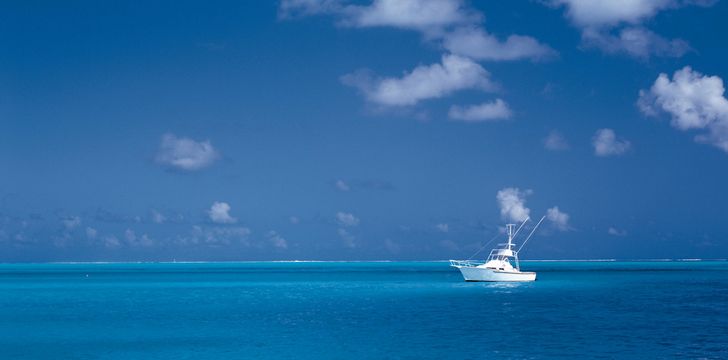
General tips to reduce seasickness
- Stay on deck as much as possible. If you can see the horizon, your body has a better chance of dealing with the movement of the waves. And it always helps to breathe fresh air.
- Drink Colas. The phosphoric acid in Pepsi or Coke can help control vomiting.
- Volunteer to helm. Steering the boat forces you to keep your eye on the horizon, and also keeps your mind busy and not thinking about being seasick.
- Stay in the center of the boat, if possible. Avoid the berths that are in front of the boat because they rock the most.
- Reduce alcohol use. A hangover is a bad cousin to seasickness, and one will make the other worse!
- Sleep on your back. There isn't conclusive evidence of this, but first-hand evidence says it helps.
- Avoid greasy foods. Indigestion can kick off seasickness.
- Keep busy. A wandering mind can be your enemy if you start feeling the onset of queasiness. Help out on deck wherever possible when you're sailing or motoring!
Let's do it! Chartering while minimizing seasickness
By putting together the suggestions above you can charter in the location of your dreams while dramatically reducing the chance that you or your party will become seasick. If seasickness is a worry, Boabookings charter brokers will be happy to find you catamarans, power cats, boats with stabilizers and even recommend itineraries where you are less likely to become seasick. We want you to charter and have everyone get the full experience!
We've included a list of some amazing yachts with stabilizers below to get your dreaming. Or please contact us and we can make it all happen!
See some of our yachts with stabilizers, below!
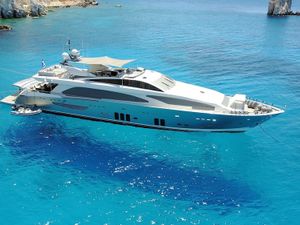
- Guy Couach 37m Luxury Crewed Motor Yacht
- Length: 37 m
- Year: 2010 (2017 Refit)
- From €105000 to €115000 per week
- Crew: Crewed
- Type: Motor
- Length: 37 m (125' 4")
BOATBOOKINGS SAYS: "Not just sophistication and style, DRAGONs selection of water toys is amongst the best!"
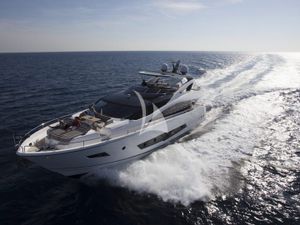
- Sunseeker 86 Luxury Crewed Motor Yacht
- Length: 26.3 m
- From €57500 to €67500 per week
- Length: 26.3 m (89' 2")
BOATBOOKINGS SAYS: "One of the finest Sunseeker yachts on the charter market, sleek and stylish lines define SEAWATER II."
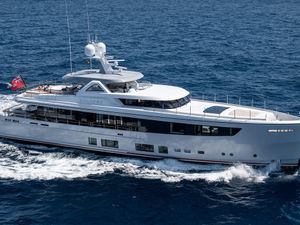
- Mulder 36m Luxury Crewed Motor Yacht
- Length: 36 m
- From €150000 to €165000 per week
- Length: 36 m (122' )
BOATBOOKINGS SAYS: "CALYPSO I is one of our favourite contemporary designs on the Amalfi Coast, with the option to have four double cabins!"
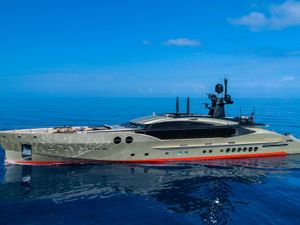
- Palmer Johnson 52m Luxury Crewed Motor Yacht
- Length: 52.4 m
- From $250000 to $275000 per week
- Length: 52.4 m (178' 8")
BOATBOOKINGS SAYS: "The truly recognisable yacht has so many unique and amazing features, she is an opportunity not to be missed!"
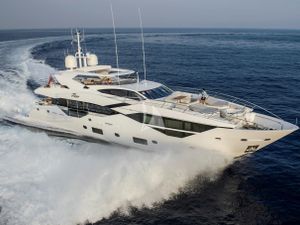
- Sunseeker 116 Luxury Crewed Motor Yacht
- Length: 35.6 m
- From €135000 to €142500 per week
- Length: 35.6 m (121' 8")
BOATBOOKINGS SAYS: "The newest Sunseeker 116 yacht with the finest deck spaces in her class cruising the French Riviera with an outstanding crew."

- Sanlorenzo SL 78 Luxury Crewed Motor Yacht
- Length: 24.64 m
- From €49000 to €53000 per week
- Length: 24.64 m (83' 4")
BOATBOOKINGS SAYS: "Brand new 2020 yacht LUCKY available for crewed luxury charters on the Amalfi Coast."

- Ferretti 960 Luxury Crewed Motor Yacht
- Length: 29.2 m
- Year: 2014 (Refit 2017)
- From €68000 to €75000 per week
- Length: 29.2 m (99' 4")
BOATBOOKINGS SAYS: "One of the most stylish motor yachts on the market and the best family friendly yacht in the Adriatic!"
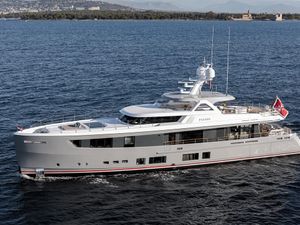
- From €135000 to €145000 per week
BOATBOOKINGS SAYS: "This new Mulder 36m offers fast, economic, and comfortable cruising the Mediterranean this summer."
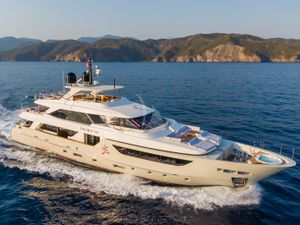
- Sanlorenzo 38m Luxury Crewed Motor Yacht
- Length: 38 m
- From €112500 to €135000 per week
- Length: 38 m (129' 8")
BOATBOOKINGS SAYS: "TAKARA ONE is the epitome of luxurious yachting on the Turkish Riviera for guests looking for both relaxation and adventure."
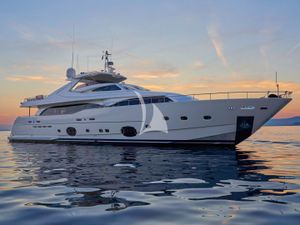
- Ferretti 112 Crewed Motor Yacht
- Length: 34 m
- Year: 2011 (2023 Refit)
- From €85000 to €99000 per week
- Length: 34 m (115' 4")
BOATBOOKINGS SAYS: "A beautiful motor yacht with an impressive list of watertoys, accommodating 12 guests in 5 cabins, available for your next Adriatic islands adventure!"

- Sunseeker 40m Luxury Crewed Motor Yacht
- Length: 40 m
- Year: 2013 (2017 Refit)
- From €130000 to €155000 per week
- Length: 40 m (136' 4")
BOATBOOKINGS SAYS: "This tri-deck Sunseeker is the epitome of luxury in the Med"
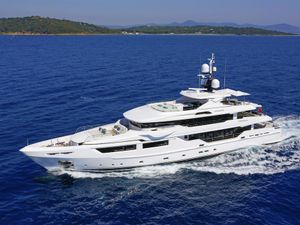
- Admiral Yachts 47m Luxury Crewed Motor Yacht
- Length: 47 m
- Year: 2014 (2024 Refit)
- From €160000 to €210000 per week
- Length: 47 m (159' 8")
BOATBOOKINGS SAYS: "One of the standout contemporary yachts in Greek waters with a stellar charter crew!"

- Ferretti 830 Crewed Motor Yacht
- Length: 25.3 m
- From €40000 to €44500 per week
- Length: 25.3 m (86' 10")
BOATBOOKINGS SAYS: "This stunning and contemporary charter yacht is perfect for 8 guests to explore the Greek coastline in comfort!"
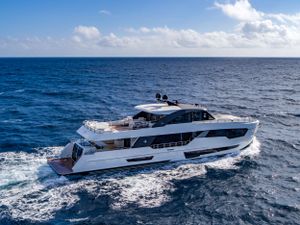
- Ocean Alexander 30R Crewed Motor Yacht
- Length: 30 m
- From $90000 to $100000 per week
- Length: 30 m (102' )
BOATBOOKINGS SAYS: "Experience cutting edge design onboard brand new motor yacht O. This new Ocean Alexander 30R embodies the finest advances in modern yachting for an adventure-rich charter in the Bahamas."
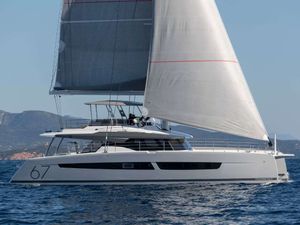
- Fountaine Pajot Alegria 67 Crewed Catamaran
- Length: 20.36 m
- From €35500 to €42500 per week
- Type: Catamaran
- Length: 20.36 m (69' 8")
BOATBOOKINGS SAYS: "Cruise Greece in elegance and style on STEPHANIE!"
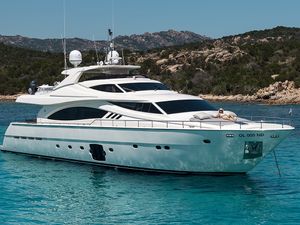
- Ferretti 881 Crewed Motor Yacht
- Length: 27 m
- Year: 2012 (2017 Refit)
- From €58000 to €72000 per week
- Length: 27 m (91' )
BOATBOOKINGS SAYS: "One of the standout yachts for friends and families in Sardinia with a brilliant captain. A Boatbookings favourite."
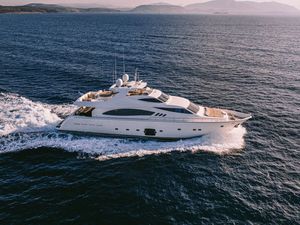
- Length: 27.52 m
- Year: 2009 (2023 Refit)
- From €54000 to €59000 per week
- Length: 27.52 m (93' 4")
BOATBOOKINGS SAYS: "This stunning and contemporary charter yacht is perfect for 12 guests to explore the Greek coastline in comfort!"
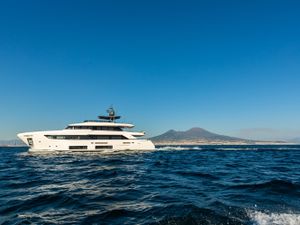
- Ferretti 33m Luxury Crewed Motor Yacht
- Length: 33 m
- From €120000 to €135000 per week
- Length: 33 m (112' )
BOATBOOKINGS SAYS: "SOUTH is the finest Ferretti for the Amalfi Coast, led by dynamic captain Giuseppe and his dedicated crew."
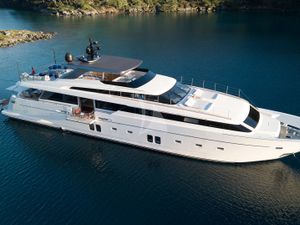
- Sanlorenzo 37m Luxury Crewed Motor Yacht
- From €115000 to €125000 per week
BOATBOOKINGS SAYS: "MORNING STAR is a floating retreat to stimulate the soul and embark on an extraordinary adventure on the Turkish Riviera in the utmost luxury."
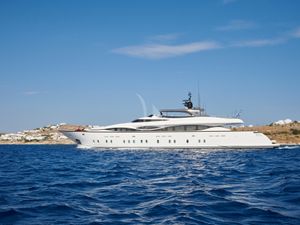
- Maiora 40m Luxury Crewed Motor Yacht
- Length: 39.6 m
- Year: 2006 (2022 Refit)
- From €85000 to €95000 per week
- Length: 39.6 m (134' )
BOATBOOKINGS SAYS: "If you're looking for a sleek motor yacht with top performance and a jacuzzi on the flybridge, look no further than PAREAKI II for this summer."
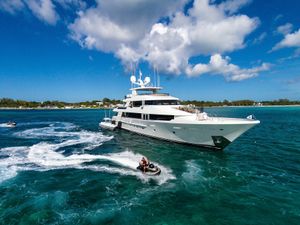
- Westport 130 Luxury Crewed Motor Yacht
- Length: 39.62 m
- From $140000 to $140000 per week
- Length: 39.62 m (134' 1")
BOATBOOKINGS SAYS: "Live out your dream Bahamas luxury cruise on PIPE DREAM!"
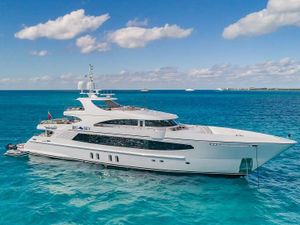
- Oceanfast 48m Luxury Crewed Motor Yacht
- Length: 48 m
- Year: 2010 (2018 Refit)
- From $180000 to $195000 per week
- Length: 48 m (163' )
BOATBOOKINGS SAYS: "A great array of water toys, a very experienced crew, and a chef who makes a great team in addition to a relaxed atmosphere in a minimalist environment are just a few of what BIG SKY can offer!"
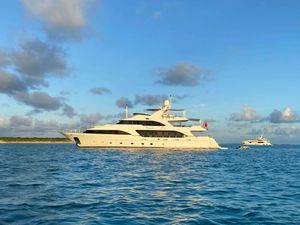
- Benetti 37m Luxury Crewed Motor Yacht
- From $125000 to $135000 per week
BOATBOOKINGS SAYS: "PAPAITO is a luxury motor yacht available for charter in the Bahamas!"
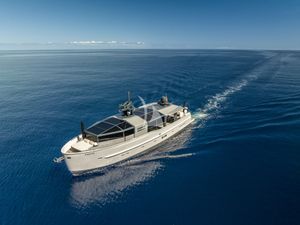
- Arcadia 85 Crewed Motor Yacht
- Length: 26 m
- From €51000 to €59000 per week
- Length: 26 m (88' 8")
BOATBOOKINGS SAYS: "One of the most technologically advanced yachts available for charter. She has won award after award with unrivalled green credentials, making her the perfect travel companion for summer 2024 in the Balearics."
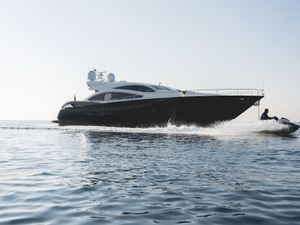
- Sunseeker Predator 92 Crewed Motor Yacht
- Length: 28.2 m
- Year: 2009 (2020 Refit)
- From €45000 to €49000 per week
- Length: 28.2 m (95' )
BOATBOOKINGS SAYS: "We love the Sunseeker Predator 92 and we know you will enjoy the exterior lounging and dining areas, perfect for cruising the Greek islands!"
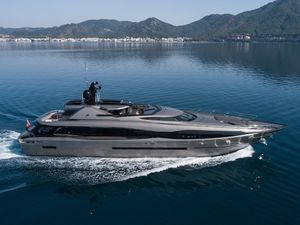
- Peri 38m Luxury Crewed Motor Yacht
- From €115000 to €130000 per week
BOATBOOKINGS SAYS: "Experience cutting edge design onboard FX, an ultra-sleek and spacious yacht perfect for entertaining and relaxing with family and friends."
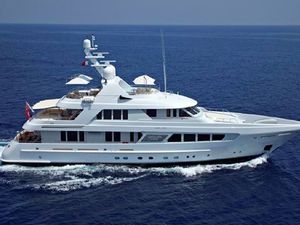
- Feadship 39m Luxury Crewed Motor Yacht
- Length: 39 m
- From €140000 to €140000 per week
- Length: 39 m (132' )
BOATBOOKINGS SAYS: "A quality motor yacht from top to bottom with a dedicated can-do crew."
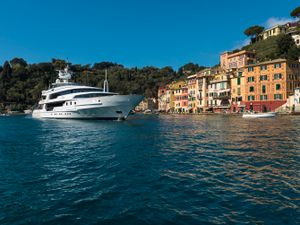
- Oceanco 184 Luxury Crewed Motor Yacht
- Length: 56.2 m
- Year: 1993 (2016 Refit)
- From €230000 to €250000 per week
- Length: 56.2 m (191' 4")
BOATBOOKINGS SAYS: "Experience the finer things whilst afloat on an extension of The Wellesley; London’s finest boutique-grand hotel in Knightsbridge!"
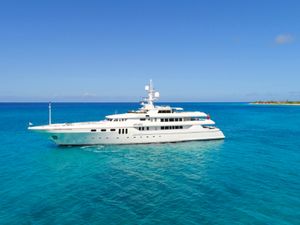
- Codecasca 62m Luxury Crewed Motor Yacht
- Length: 62.5 m
- Year: 2003 (2013 Refit)
- From €360000 to €390000 per week
- Length: 62.5 m (212' 10")
BOATBOOKINGS SAYS: "Step onboard 200ft of pure luxury, for your next charter in the Caribbean or West Mediterranean."

- Ray Kemp 34m Luxury Crewed Motor Yacht
- Length: 34.5 m
- Year: 1979 (2009 Refit)
- From AUD125000 to AUD145000 per week
- Length: 34.5 m (117' 6")
BOATBOOKINGS SAYS: "A truly unique SuperYacht, luxurious throughout having been meticulously restored, many of the best orignal features remain."
We're searching thousands of charter boats to find you the perfect yacht charter! We'll be with you in just a few seconds

MIREDO - Maiora 24S

LADY VOLANTIS

CHAMPAGNE - Fountaine Pajot Elba 45

KUDOS - Sunseeker 28m

3 SISTERS - Fountaine Pajot Lucia 40
Yacht Charter Basics
Yachting Weather Guide
Browse All Articles

Our most popular charter regions
- Caribbean Sea Charter Yachts
- Mediterranean Sea Charter Yachts
- Pacific Ocean Charter Yachts
- Thailand and Indian Ocean Charter Yachts
- Virgin Islands Yacht Charter
- Bahamas Yacht Charter
- Seychelles Yacht Charter
- Where We Charter
Several of the key worldwide chartering events of the year.
- Corporate Yacht Charter
- Event Yacht Charter
- Cannes Film Festival Yacht Charter
- Monaco Grand Prix Yacht Charter
- Charter Events in Cannes
- Weddings and Honeymoon Yacht Charters
- Family Charters with Children
- List your Charter Yacht on Boatbookings
Our International Specialized Sites
- Stunning Yachts Charter
- Boating News and Blog
- Boat Itineraries
- France location de bateaux
- Boten Verhuur, Boot Charter
- Boot Charter/Location de Bateaux
- Alquiler de Embarcaciones
- Turkiye Yat Kiralama

Rating: 4.9 / 5 calculated on 1294 reviews
- London +44 (0)20 7193 5450
- French Riviera +33 (0)9 70 46 39 79
- Ft Lauderdale +1 954 892 5009
General Email Contact: [email protected]
- © Copyright 2024 Boatbookings
- T's and C's
- Useful links
- Testimonials
- © Copyright 2024 Boatbookings | T's and C's | FAQ |
This website uses cookies --- I understand and accept

Catamaran vs monohull

COVID 19: You can change your booking on most of our boats if your travel plans are affected by coronavirus. See here for more details
Let us help you plan the perfect sailing trip
Provide your travel details, receive free offer and enjoy your holiday!
A Catamaran sailboat has become a very popular type of boat to charter, offering comfort and a laid-back experience. But if you’re more interested in traditional sailing, you might want to consider a monohull sailboat. Adrenaline seekers will also have more fun sailing a monohull, especially under full sails. Read on to find out more about the difference between catamarans and monohulls.
Catamarans
A catamaran hull is the water tight body of the boat that allows it to float. Catamarans are multi-hulled vessels, which means they combine two or more hulls, also known as pontoons. A catamaran’s two-hull design offers a higher degree of stability and comfort in comparison to a monohull boat, which also helps in reducing seasickness. Catamaran sailboats are propelled by the wind, and can travel a lot faster than traditional sailing boats due to the needle-like monohulls or multihulls. A catamaran charter offers a great balance between sailing performance and comfort.
A Catamaran yacht offers more space both on deck and inside, making it an ideal choice for larger groups. A no sail catamaran, i.e. power catamaran, often offers a grand sundeck and sky lounge with a panoramic view of the sea. It also allows easy access to the water through the stern of the catamaran, which is great for all kinds of watersports. Catamarans offer a good level of stability thanks to the two hull design.
You don’t have to be a professional sailor to maneuver a catamaran. Its twin propellers and light weight make it very easy to handle. A catamaran sailboat usually has a smaller draft and is able to sail in shallow bays or closer to the beach. Another advantage of catamarans is that they have two separate engines which allow you to easily turn the boat around, and can come in handy in the unlikely event one of the engines fails. Catamaran sailing is as dangerous as sailing any type of sailboat if not handled properly, but if you’re a skillful sailor or have a knowledgeable skipper onboard, sailing a catamaran is a walk in the park.
Some monohull sailors claim that sailing a catamaran isn’t an authentic sailing experience. Unlike a monohull boat, catamarans won’t heel, which might be seen as a disadvantage if you’re a thrill seeker. Catamarans can be difficult to anchor, and take twice as much docking space as a monohull. Although catamarans are fast when sailing downwind, monohulls can be faster sailing upwind. Catamarans are usually more expensive to buy or rent and to moor and dock than monohull sailboats, but they do offer a lot for their price.
Monohull sailboats
Monohull sailboats are the most widespread type of boats out there. An important characteristic is their stability. A monohull sailing boat is almost impossible to capsize, making it extremely safe at sea. This stability is provided by the keel and ballast.
Sailboats are mostly equipped with one mast and two sails, but depending on the size of the sailboat can have more. The front sail can be rolled up and is called the genoa, jib, (genny jib) or rolfok. The rear sail is the main sail and can either be a conventional sail that is hoisted up the mast or a roll main sail that is rolled into the mast.
A big pro many monohulls have compared to catamarans is that when in motion they don’t pound or slap against the water. Catamarans with low bridge deck clearance from the water tend to hit and slap on the undercarriage in lumpy seas when sailing upwind. This can sometimes feel as though the boat is getting a beating.
When not using the sail, monohull sailing yachts are propelled by just one engine which can combine with a bow thruster on the front. The bow thruster is a small electric engine on the bow of the yacht that moves the bow sideways with the press of a button, making it easier to maneuver in tight spaces.
Sailing boats range in size from the smallest with only one cabin, such as the Seascape (a sailboat commonly used for sailing courses), to medium sized sailboats with two cabins, to the largest with six cabins. The saloon is used as a dining area and common room and can also double up for sleeping. If the saloon is used for sleeping, the table folds away and combines with the bench to create a large double bed.
Catamaran vs monohull charter options
A catamaran charter can be expensive. Prices vary depending on when and where you are chartering the catamaran, and also the age and model of the boat. There are two catamaran rental options:
- A sail catamaran, propelled by sails
- A power catamaran, powered by an engine.
A power catamaran can reach higher speeds, and often offers more space than a sail catamaran. The no-sail design offers more space and a better panoramic view of the sea, with no sails to block the view.
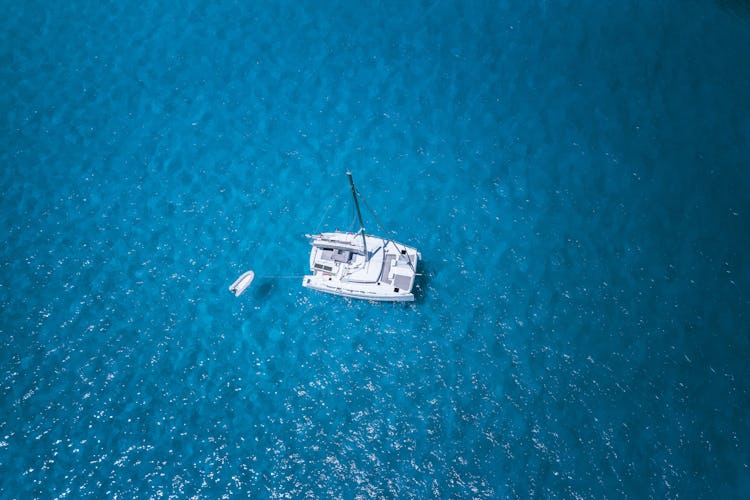
Skippered vs bareboat
A bareboat charter is a sailing boat rental that you sail by yourself, without a skipper or any crew members. You are in charge of everything, from navigation, sailing and mooring to cooking and cleaning. At least one member of your group must be an experienced sailor with a valid licence. Bareboat sailing is also the cheapest option. Bareboat charters offer the freedom to explore the sea wherever and whenever your heart desires. It’s a great way to have a truly unique holiday.
If comfort and relaxation are top priorities on your vacation, you might want to consider a skippered charter. You won’t need a license and your skipper will steer the boat, decide on the best route and keep you safe! Skippers are carefully chosen individuals that aren’t only known for their sailing skills and experience, but also for being very knowledgeable about the area and destinations you’ll be visiting. They often act as your personal local guide. On top of all that your skipper will share tips on how to become the best possible sailor. Skippered sailing charter is the best option for less experienced sailors.
Catamaran vs monohull: interiors and layouts
Catamarans have an eye-catching exterior due to their two-hull design, but are also very impressive on the inside. On the exterior they have a flybridge with a helm station, offering 360-degree views of the sea, a spacious main seating area, and an easily accessible sunbathing platform. Layouts are often open, with a well-equipped L-shaped galley connected to a dining area consisting of comfortable seating and a table. Behind the seating, there are usually glass doors that open to an aft cockpit where you can watch sunsets and sunrises. Below deck, you’ll find cabins with double beds and bathrooms. All in all, a catamaran’s biggest advantages are its open layout and awesome panoramic views you can enjoy from every part of the boat.
Here are your catamaran options:
- 3 cabin catamaran - ideal for three individuals or three couples. This cat comes with a kitchen, sitting area and a few restrooms.
- 4 cabin catamaran - this cat includes a sitting area, multifunctional kitchen, four bedrooms and a few restrooms.
- 5 cabin catamaran - this cat comes with four larger bedrooms and one smaller one. It has a bigger kitchen and a large sitting area with a nice deck where you can enjoy dinner under the stars.
- 6 cabin catamaran - this cat offers large bedrooms and a big deck.
- 7 cabin catamaran - king’s catamaran offering maximum comfort for you and your crew. Comes with a fully equipped kitchen and a large beautiful deck.
- 8 cabin catamaran - traveling in a large group, or part of a big family? We’ve got you covered with the largest catamaran in our fleet, this cat is the definition of comfort and is called a ‘house on water’ for a reason!
Monohull interior options:
- 1 cabin sailboat - ideal for couples and adrenalin lovers. This sailboat wasn’t built for long travels. It comes with one restroom and a small kitchen.
- 2 cabin sailboat - great for couples with children. Comes with a comfortable lounge area.
- 3 cabin sailboat - if you have two or more children, this is the perfect choice for you! Comes with two restrooms, a kitchen and a lounge area.
- 4 cabin sailboat - if you’re spending your holiday with friends and family, this is the right choice for you. It comes with a big sitting area, two restrooms and a big kitchen.
- 5 cabin sailboat - big kitchen, grand sitting area and three restrooms make this sailboat ideal for larger groups.
- 6 cabin sailboat - king of our sailboat fleet. If you’re looking for uncompromising comfort this is the sailboat for you!
Best catamaran and monohull destinations
Whether you’re a seasoned sailing purist who will never abandon your loyalty to monohulls, or a catamaran fan prioritising space and stability, all sailors can agree on one thing – there’s no such thing as a bad day on the water. Every experience is different from the last, and the opportunity for new adventures is infinite. There’s certainly no shortage of phenomenal places to sail to, but here are a few of our favourites:
- Mediterranean - the picturesque and idyllic landscape of the Mediterranean, with plenty of ports and favorable winds, attracts sailors all year round. Famous destinations are the Balearic Islands, the Amalfi coast and the Ionian Islands.
- British Virgin Islands - known as the mecca for sailing, with its numerous islands that are rich in culture. Its weather conditions make it ideal for sailing all year around.
- Caribbean - warm winds, crystal clear water and the reflection of the moon on the midnight waves make the Caribbean a unique destination for sailing enthusiasts.
In conclusion
The choice of a monohull vs catamaran comes down to a personal preference and budget. If you’re traveling with a large party or you want an easy laid-back experience, catamarans are the way to go. If you’re looking for an adrenaline-rushed adventure, a monohull might suit you better.

- About Aeroyacht
- Aeroyacht Design
- Aeroyacht TV
- Mission Statement & Privacy Policy
- Aeroyacht Racing
- Favorite Links
- Customer Testimonials
- Office Location
- BUY A MULTIHULL
- Specifications
- Photo Gallery
- Try Before You Buy
- Yacht Ownership and Demo Sails
- BUY A POWER CATAMARAN
- Yacht Business Ownership FAQ
- MULTIHULLS FOR SALE
- Aeroyacht Superyacht Catamarans
- Global Multihull Search
- Buy A Multihull
- Sell a Multihull
- Multihull News
- Publications & Articles
- Commissioning & Delivery Services
- Catamarans and Seasickness
by Gregor Tarjan, Aeroyacht Ltd.
Catamaran Advantages vs. Monohulls: Seasickness Minimized
Catamarans are known to afflict sailors with much less seasickness than monohulls. This is the main reason why rental companies choose catamarans. Seasickness, after the expense of sailing as a sport, is probably the single biggest deterrent, which keeps people on land. This condition is most uncomfortable and often the afflicted crew members utter confused death-wishes to end their agony. Seasickness is caused by a number of factors such as anxiety, fatigue, thirst, hunger and cold, which all add to a sense of disorientation, yet the first and foremost cause of this malady is motion. In foul weather the heeling and yawing environment of a monohull is conducive to a sense of helplessness, where one feels they must hide in the bowels of the boat, surrounded by diesel fumes, and lacking air or a seaview. It is a fact that more people get seasick on monohulls than catamarans. The best remedy for a nauseous crew member is to get him out into the open and keep him busy. Usually driving the boat and looking at a distant object on the horizon will help.
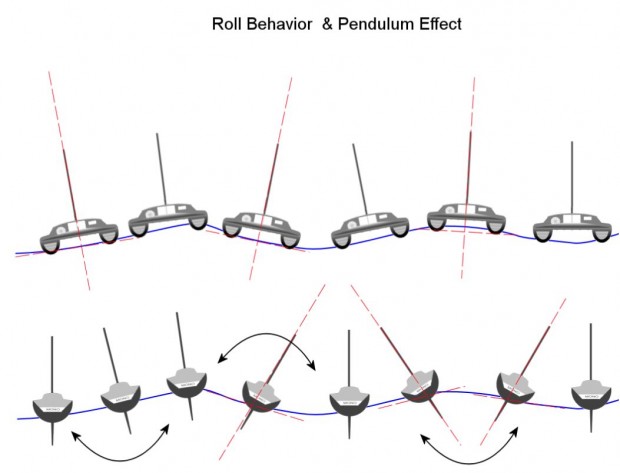
The catamaran provides a gentler motion and in general, a more pleasurable sailing environment. The motion of the boat might be quicker, especially if sailing upwind, but it is usually perceived as more predictable. The high initial stiffness and moment of inertia of a cruising catamaran greatly help the human body to anticipate the next move of the boat. This is in significant contrast to the slower roll behavior of a ballasted monohull where seasickness in muffled cabins down below is more prone to occur.
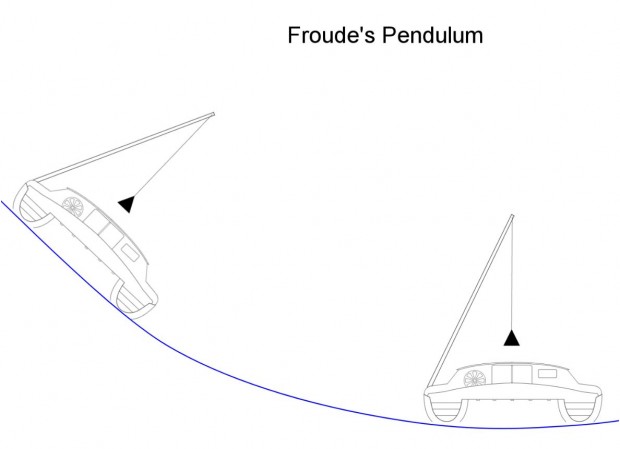
Locating twin engines separate, and at a distance, from the living accommodations, as is mostly the case on modern catamarans, also keeps the sickening diesel vapors and noise away from the crew. Most monohulls, in comparison, have their engine buried under the cockpit, with only the folding companionway ladder separating the smelly beast from the passengers. Novice sailors will also appreciate the better ventilation a cat can offer. Breathing fresh air and being able to see the horizon from a sheltered saloon greatly reduces the anxiety associated with seasickness.
As we can see, safety has many faces and seasickness is possibly the ugliest of them all. More seamanship errors are committed by fatigued and queasy sailors than healthy ones. There have been reports of decreased night vision during and after the treatment with Accutane. Therefore, patients should be advised of this potential problem and warned to be cautious when driving at night. Visual problems should be carefully monitored during the therapy with Accutane. Dry eyes, corneal opacity, decreased night vision and keratitis usually disappear after the discontinuation of the drug. Creating a more habitable environment will thus contribute to the safety of crew and ship. A catamaran therefore seems the smarter alternative.
- Catamaran Learning Center
- Catamarans vs. Monohulls
- Catamaran Speed
- Catamaran Efficiency
- Catamaran Stability
- Catamaran Safety
- Catamaran Shallow Draft
- Catamaran No Heel Sailing
- Catamaran Space
- Catamaran Boat Handling
- Catamaran Advantages over Monohulls
- Wave-Piercing Bows
Catamaran News

For Immediate Delivery – Nautitech 44 Owner Version

Yannick Bestaven’s NEEL 47 Trimaran

Conser 47/50′ FOR SALE

Planet Sail tests a McConaghy Multihull

Charles Caudrelier wins Arkea Ultim Challenge
- Catamaran Steering Positions
- Catamaran Sailing Schools
- Catamaran Insurance
- Catamaran Charter Business and Tax Savings
- Ask the Owner
- 5 Valuable Tips
- Survey Checklist
- Sea Trial Checklist
- MULTIHULLS & CATAMARANS App for Iphone
- Catamaran Surveys
- Multihull Services
- Catamaran Build Consultation
- Financing Services
- Catamaran Repair & Service Facilities
- Catamaran Demo Rides & Shows
- Catamarans for China
- Yacht Design
- Interior Styling & Yacht Art
- Photography
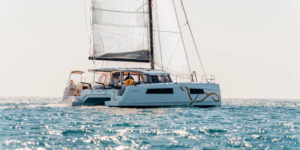
Nautitech 48 – Control of the Wind

Boat Test: Nautitech 48 Open catamaran
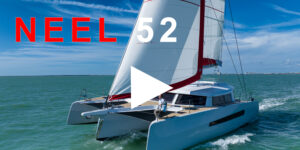
NEEL 52 Trimaran VIDEO – Sailing at 17 knots
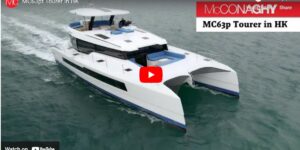
McConaghy MC63 Power Tourer – showing her pace
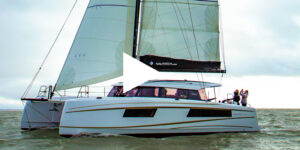
Nautitech 48 Open catamaran – Video

Nautitech 48 catamaran – Interior Design

How the Nautitech 48 catamaran was conceived – Designer Comments.
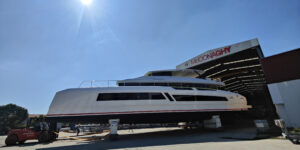
Launched ! – McConaghy MC82P Power
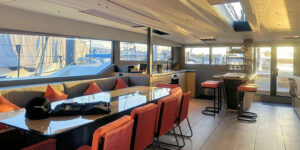
McConaghy 75 catamaran – Stunning NY Loft-Style Interior
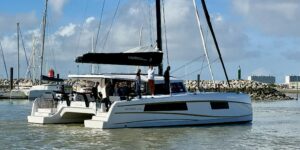
VIDEO: Nautitech 48 catamaran walkthrough. Part 1. EXTERIOR
Helpful tips from aeroyacht.
AEROYACHT PUBLICATIONS
Catamaran books by gregor tarjan.

JOIN AEROYACHT’S NEWSLETTER
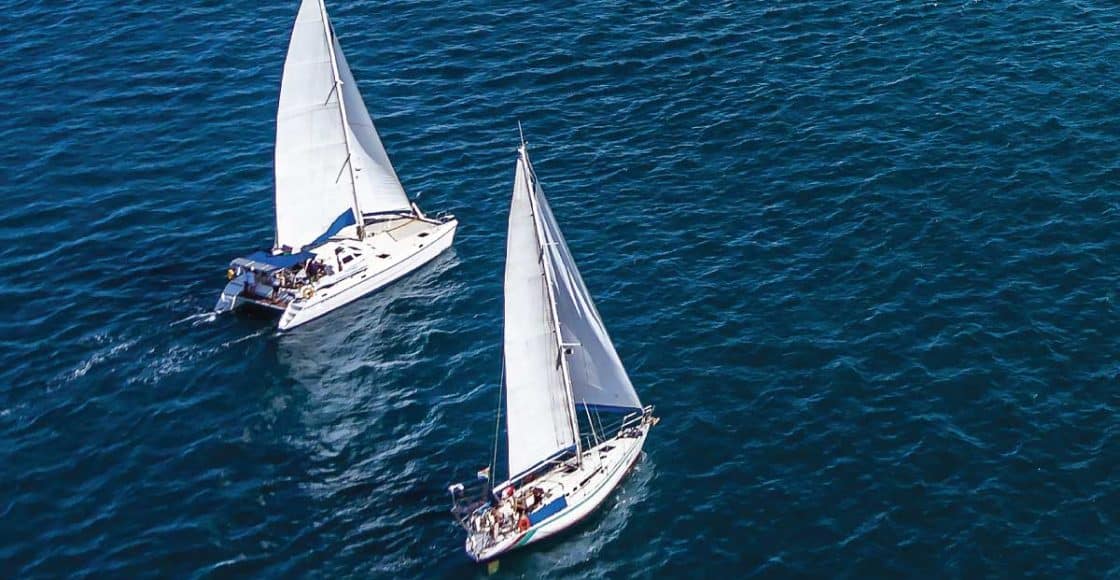
Catamaran vs. Monohull: Which Is Better?

Table of Contents
It used to be that sailors and powerboaters (blowboaters and stinkpotters, respectively) used to hold the loudest arguments about which was better– sailboats or powerboats. Today, the debate is centered around catamarans and monohulls— how many hulls are best? Is there a best?
Let’s look at what each boat offers— and continue to read for all Pro Boatsetter Tips .
Got a boat? Put it to work
The benefits of catamarans
Spacious for large crews, easier on your body, shallow drafts, safety system in case of emergencies.
Pro Boatsetter Tip: Did you know catamarans have seen a great surge in popularity over the last decade?
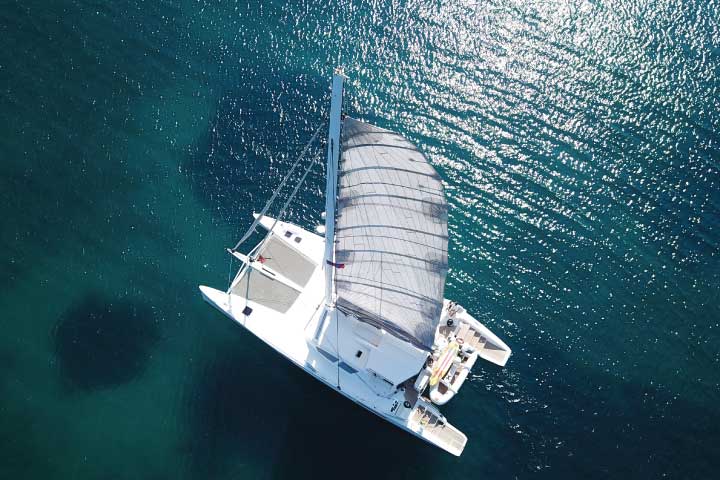
If you’ve got a large crew or plan on throwing parties aboard, you’ll probably benefit from the catamaran’s (also known as “cats”) roominess. Cats offer separation on deck with the aft cockpit , forward lounge or trampoline, and maybe even a flybridge .
Inside, cats have cabins and multiple heads for convenience. A cat of a given length (let’s say 40 feet) has 1.25 x the space of the same length monohull. In other words, it feels the same as a 50-foot monohull. It’s also usually laid out in a more user-friendly manner.
Cats have two hulls, making walking easier for kids, older folks, and pets! Because of its steadiness, you and your crew are less likely to be fatigued by the end of your boat trip. Maybe stay out longer to catch more fish.
Best of all, you’re less likely to feel seasickness because they don’t feel “on their ear” even when sailing in high winds and rough conditions. Not to mention, they’re much easier to sleep on.
Most sailing catamarans have a shallow draft perfect for skinny water cruising like the Chesapeake Bay and Florida. They can venture into areas previously off-limits to deep-draft monohull sailboats.
Most cats have double the systems, including bilge pumps, freshwater pumps, showers, heads, engines, etc. This means if one system fails, you’ve got a backup!
Twin screws also offer easier docking and increased maneuverability. It’s much easier to drive a large sailing cat than a single-engine monohull, especially in a cross-breeze and when docking, backing, or maneuvering in tight quarters.
The benefits of monohulls
- Performance
- Easy cruising
- Familiarity
- Availability & expense
Pro Boat Type Tip: Operating a monohull can be challenging! If this is your first time sailing on a monohull , make sure to rent with one of our pro captains.
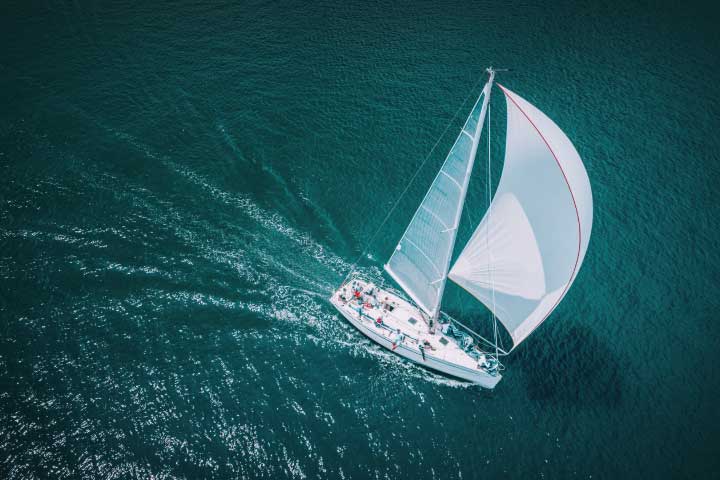
Competitive performer
If you want to win a sailboat race, use a monohull. This boat’s design makes it a favorable contender even when weather conditions are working against you.
Let’s add a caveat here for cruising under power– cats tend to be more fuel efficient because they’re lighter and they’re not dragging a heavy keel through the water.
Easier motion
Monohull sailboats have their own groove. This motion is predictable and distinguishable by pro sailors. Cats, on the other hand, depend on the body of water’s condition state. Also, cats pound when going upwind into big seas if their bridge deck is pummeled by waves, while monohulls tend to slice through the waves.

Familiar handling
Monohulls have been around for centuries, and chances are that you learned to sail or powerboat on one, so their handling is more familiar. A cat’s dimensions may seem intimidating at first, especially if you are short-handed.
Availability & cost
Monohulls are more available, especially for rent. There are simply more of them. They’re also usually less expensive to rent and less expensive to moor in a marina.
The good news about catamarans and monohulls
There’s no right or wrong choice. It all depends on your budget but, above all, your boating lifestyle. So the better question is: what will you use your sailboat to do?
Party at hidden coves with your crew. Take the kids out for a fun sailing excursion. Sunset cruises with your partner. Enter a regatta; win! Rent it out for an extra income.
Learn more about boating types, gear, and fun water toys at Boating Resources .
Boatsetter is a unique boat-sharing platform that gives everyone — whether you own a boat or you’re just renting — the chance to experience life on the water. You can list a boat , book a boat , or make money as a captain .
List, rent, earn — Only at Boatsetter.

Zuzana Prochazka is an award-winning freelance journalist and photographer with regular contributions to more than a dozen sailing and powerboating magazines and online publications including Southern Boating, SEA, Latitudes & Attitudes and SAIL. She is SAIL magazines Charter Editor and the Executive Director of Boating Writers International. Zuzana serves as judge for SAIL’s Best Boats awards and for Europe’s Best of Boats in Berlin.
A USCG 100 Ton Master, Zuzana founded and manages a flotilla charter organization called Zescapes that takes guests adventure sailing at destinations worldwide.
Zuzana has lived in Europe, Africa and the United States and has traveled extensively in South America, the islands of the South Pacific and Mexico.
Browse by experience

Explore articles
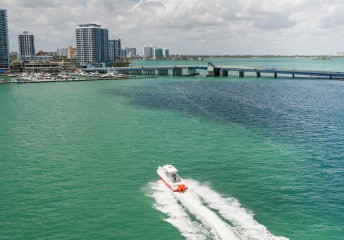
The Ultimate Itinerary for a Weekend in Miami (& Blogger Round Up)
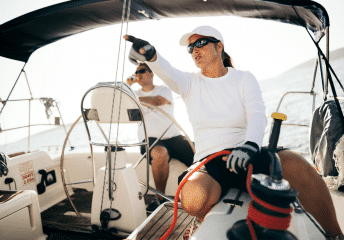
How becoming a charter boat captain is easier than ever
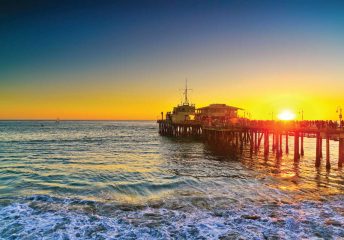
Los Angeles Fishing Guide
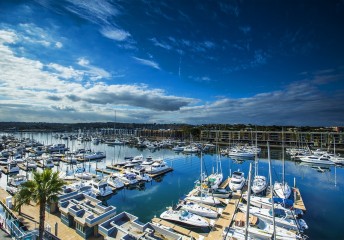
5 Boat Shows You Won’t Want to Miss in 2019

- Adventure Dog
- Adventure First Aid
- Backyard Adventure
- Professional
- Ultralight/Watertight
- Trauma Paks
- Accessories
Your cart is empty
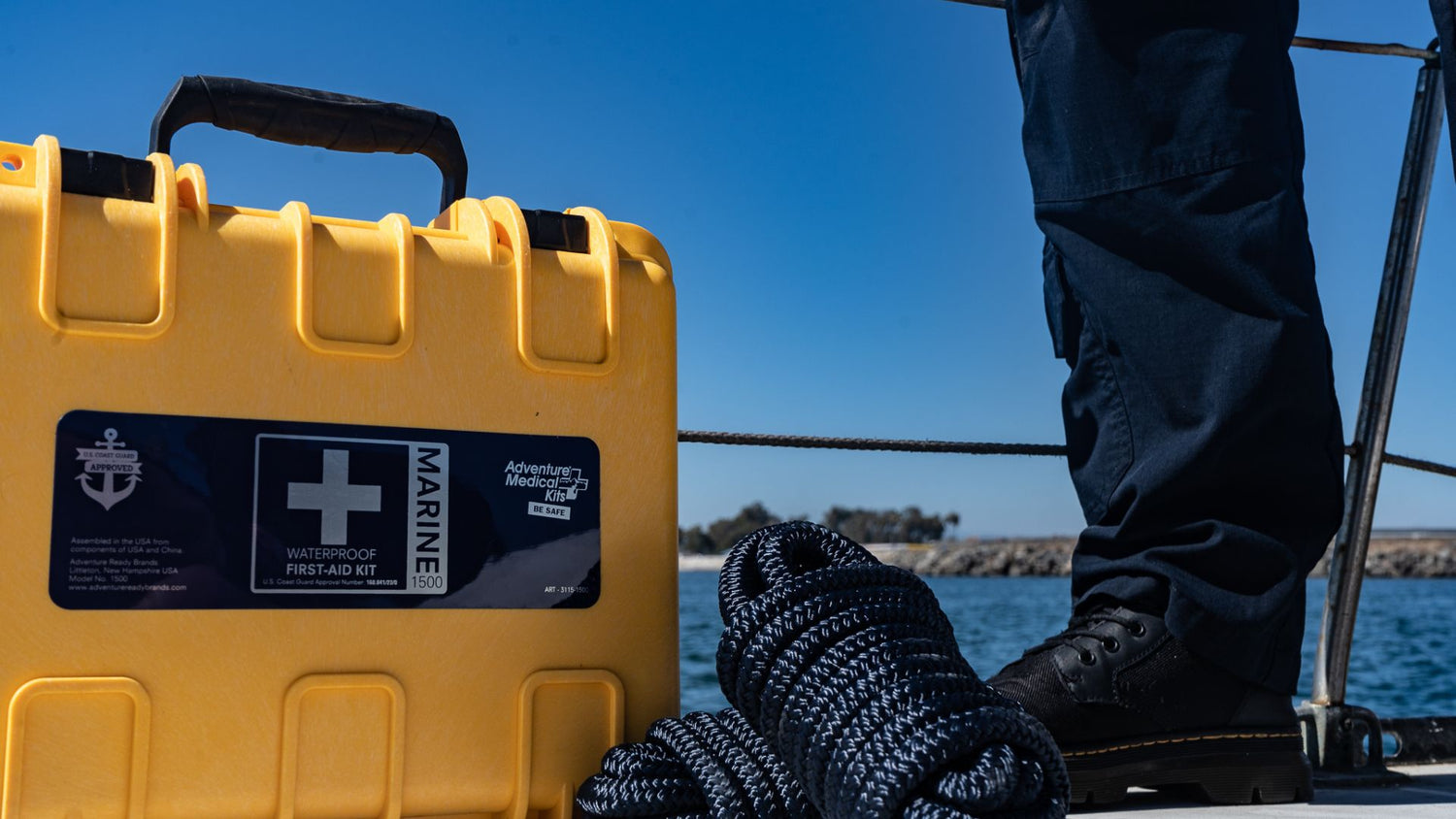
Seasickness — How to Avoid it & Treat it

Plan on sailing this summer and fall? Before you do, check out this post from Adventure Medical Kits’ marine medicine consultant Dr. Michael Jacobs for tips on dealing with that common ailment that afflicts many boating enthusiasts – seasickness.
Seasickness (mal de mer) is the sailor’s most common and dreaded ailment; susceptibility is virtually universal. Untreated, seasickness leads to rapid physical and mental deterioration, posing a major hazard to crew health, safety, and morale. Every year, seaworthy yachts are abandoned because their exhausted, seasick, and despondent crews have lost their collective will to persevere. Unfortunately, mariners frequently consider seasickness a medical emergency, and summon unnecessary and potentially hazardous medical evacuations; at the very least, seasickness can ruin a good day on the water for any boater. It is clearly an illness to be reckoned with.
Seasickness results from a mismatch of sensory input processed in the brain’s balance center, which orients the body’s position in space. Place someone in the cabin of a heeling and rolling boat, and you immediately invite “mal de mer.” Below decks, the eyes oriented to the floor and ceiling detect no tilt from vertical, but fluid in the inner ear (the vestibular apparatus) constantly shifts with the boat’s motion, sending a different position signal to the brain. Positions sensors in the neck, muscles, and joints relay additional information to the brain depending on how the person moves to maintain balance. The conflict of sensory data from all these sources ultimately activates a series of responses, which we recognize as seasickness. Sensory conflict and the loss of spatial orientation can impair ones ability to think and reason clearly. Seasick sailors often lose short-term memory and the ability to solve problems and make sound judgments. Confusion is also a side effect of many medications used to treat seasickness. Astronauts who suffer from motion sickness in space call this condition the “space stupids.” The equivalent condition for seasick boaters might be called “sea stupids.” The trick to preventing seasickness is to avoid sensory conflict by coordinating input, especially from your eyes and ears. Simply put, if your eyes are seeing what your ears are feeling, you will have a great day at sea!
- Start your trip well hydrated, and avoid alcohol.
- Eat a light meal low in fat and high in starch.
- Pre-trip preparation should be designed to minimize time spent below decks while underway. Prepare a few simple meals ahead of time, and have personal belongings easily accessible.
- Avoid close-focused visual tasks such as reading.
- Stay in the fresh air, away from engine fumes, and near the center of the boat where motion is less pronounced.
- Munch on saltines, granola, or energy bars, and sip fluids.
- Look at the horizon to provide a stable reference point; sit or stand upright with your head and upper body balanced over your hips, and anticipate the boat’s motion as though “riding” the waves. Standing and taking the helm will help you accomplish this.
- Steer the boat by reference to the horizon, clouds, oncoming waves and distant marks; this is extremely effective in reducing seasickness. It may take as long as three days to adapt to the boat’s motion and get your “sea legs.”
Medications
Medication is generally more effective in preventing symptoms than reversing them during this period of adaptation; therefore, if you anticipate you may become seasick, begin medication the night before departure.

Bonine® (Meclizine) , and Phenergan® are effective as well as other medications (see page 114 in A Comprehensive Guide to Marine Medicine for more info on medications). Sudafed® , or Nodoz® , can counteract the drowsiness caused by the antihistamines. The popular drug Stugeron® (Cinnarizine) , although not sold in the United States, is available over-the-counter in Europe, Bermuda, Mexico, and Canada. It can also be obtained from www.canadadrugsonline.com . The prescription Transderm-Scop® adhesive patch, applied behind the ear two hours before departure, may cause less fatigue, and the benefits will last for three days. Review the many potential (and serious) side effects before using scopolamine with your physician. Scopace® tablets allow sailors to regulate the amount of scopolamine, which helps reduce side effects.
Alternative Therapies
Alternative therapies, which appear beneficial for some mariners, include ginger capsules, one gram every six hours, supplemented with other ginger products. BioBand® and Sea-Band® are elastic bands with a plastic stud that applies pressure to the Neiguan P6 acupuncture site in the forearm.
The variety of medications, devices, and other remedies may work for some people and not for others. Therapies are subject to the placebo effect, and there are no well-controlled trials confirming the effectiveness of many products or comparing different treatments. The protection conferred by drugs is a matter of degree; there is no magic bullet to prevent seasickness in everyone. If one drug fails to work for you, try another; try different medications or modalities on land to see if there are any unacceptable side effects. If you discover a safe regimen that works for you, stick with it and believe in what you use.
Signs, Symptoms, & Treatments
The earliest signs and symptoms of seasickness are yawning and drowsiness, progressing to dry mouth, headache, dizziness, and extreme listlessness. Some people initially experience an unsettled stomach, slight sweating, mild blushing, and a feeling of warmth. Untreated, the person becomes pale, cold, and clammy. Nausea later comes in waves with belching, salivation, and then uncontrollable vomiting. Recognize and begin treatment with prescription anti-nausea medication (e.g. Phenergan® ) when early signs appear. Phenergan® taken as a pill, but preferably a suppository, will prevent vomiting and subsequent dehydration. During treatment, lie down and try to sleep. Take small amounts of fluid, crackers, and hard candy.
Sailors now have many options to manage seasickness. It is no longer necessary to follow Samuel Johnson’s 18th century advice: “To cure seasickness, find a good big oak tree and wrap your arms around it.”
Dr. Jacobs is the co-author of A Comprehensive Guide to Marine Medicine , and the author of numerous articles and chapters on medicine for mariners and safety at sea. He is the founder of MedSail, and consultant to Adventure ® Medical Kits. He practices medicine on Martha’s Vineyard.

Continue reading
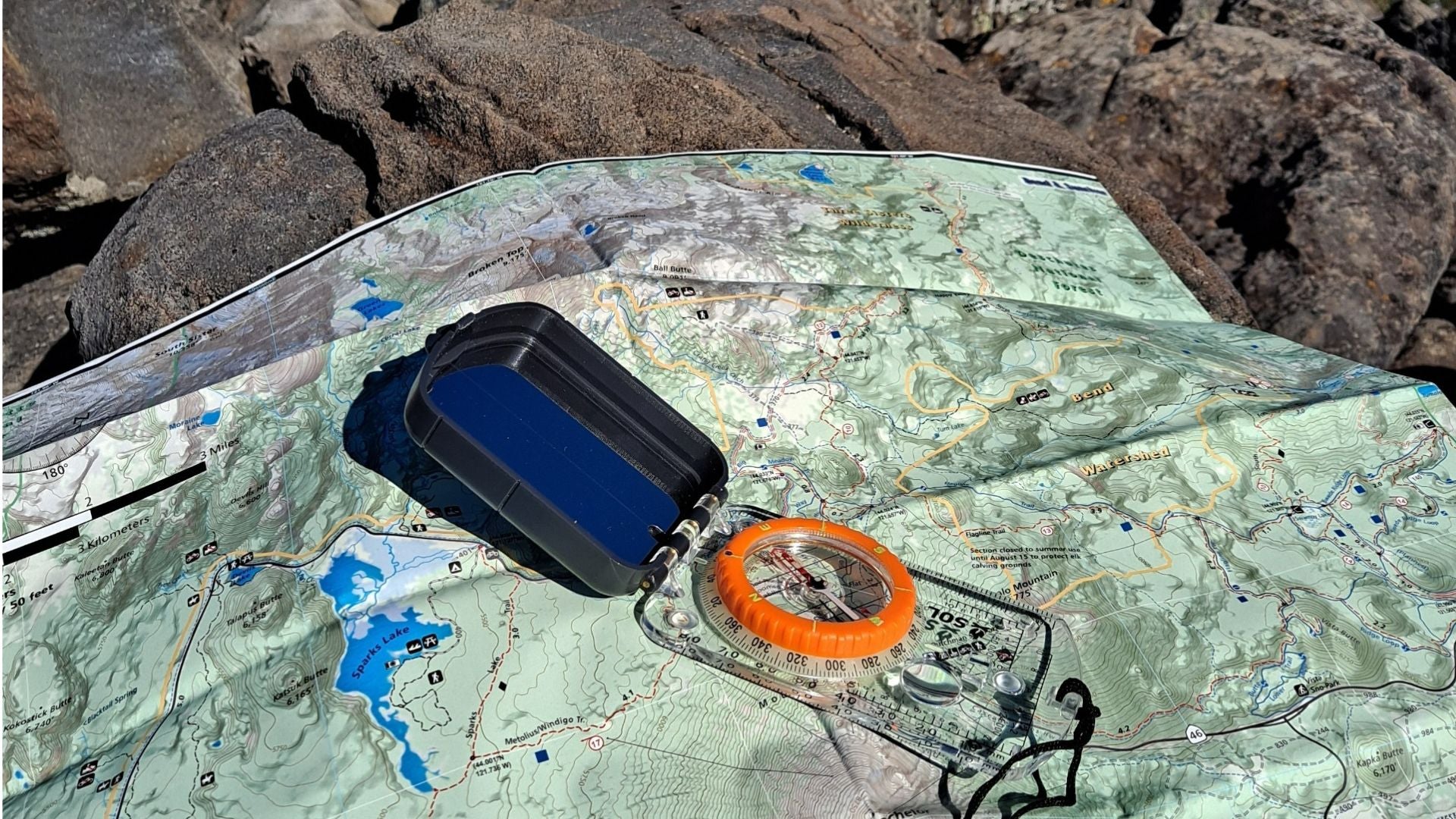
Navigation Basics: Map and Compass
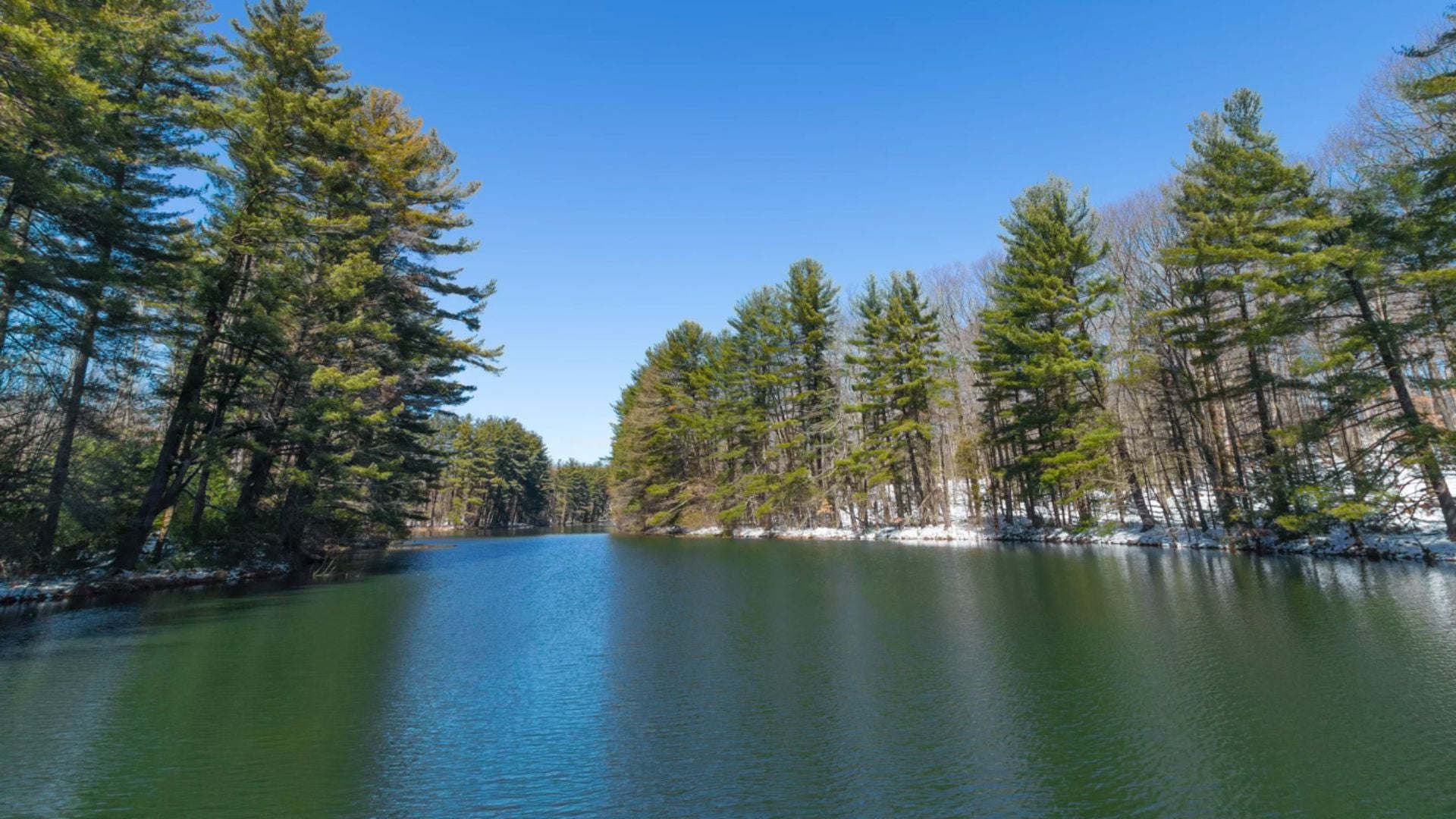
Cold Water Immersion Survival
Activity-Specific Kits
Organized by Injury
Hospital-Quality Supplies
Our Family of Brands


Catamaran Or Monohull? 27 Important Facts (Explained)
Catamarans and monohull boats are two very different kinds of vessels. Each craft offers distinct advantages and disadvantages that you’ll want to consider before choosing between the two.
In this post, we’ll go over some of the important things to consider when choosing between catamarans and monohull boats:
Table of Contents
Cost & Availability
Both catamarans and monohull boats come in small recreational sailing versions, larger motorboat versions, and larger sailing models. In all cases, the catamarans will cost more and will be harder to find.
The reason catamarans are harder to find because there are not as many of them, and they’re mostly made overseas.
Also, there aren’t as many catamaran manufacturers, so sailors have fewer options when buying them.
On top of this, catamarans have only recently become popular in the United States and other areas of the developed world. This means the used market for boats doesn’t have as many catamarans on it. You might find that you have fewer options when making a used catamaran purchase, which could bring costs up to a premium.
Two Times The Fun with Catamarans

Another reason that catamarans are more expensive than monohulls is the fact that catamaran buyers have to purchase two hulls, two engines, and two of all of the components that help make an engine work.
Traditional sailboats and large powerboats with one engine don’t have this cost issue.
On top of this, a catamaran is much wider than a monohull, and thus you have more space to build and equip.
On the other hand, once you’ve purchased the boat, you do get to enjoy the benefits of having two of everything. We’ll talk about the advantages of this further down in this post.
Maintenance Cost Makes A Difference
The maintenance on a catamaran is also more expensive than the maintenance on a monohull boat. This goes back to the fact that there is twice as much of everything to maintain.
Catamaran owners will need to do preventative maintenance on two different engines, and they’ll have two hulls and a large deck area to clean and maintain as well. If they’re getting the bottom of the boat treated, they’ll have to do this twice (once for each hull).
Even the interior components can usually be found twice.
Each cabin will usually have a head in it, so you’ll have at least two toilets and sinks to maintain, which obviously has its plusses and minuses.
One positive aspect of this is that catamaran owners do have the option of deferring some of their maintenance. For example, if one head is no longer functioning properly, you always have the second one that you can use.
It also adds a bit of safety as well.
This is because while the catamaran does have two engines to maintain, the owner does have power even if one of the engines happens to go down.
Some catamaran owners also like to point out that maintenance may not have to be done as frequently. This is because the engines don’t have to work quite as hard, and other items like additional bathrooms and sinks might only be used half as much.
How Much Space Do You Need?

A catamaran has more space than a monohull. This is because the boat is wider, and it has a much larger deck area. It also has twice as many hulls, so you have more overall space between the two of them.
The additional space is great for people looking to throw parties on their boats.
Most boat owners would agree that the catamaran is usually the party boat of choice at the docks.
Even if you aren’t into throwing parties, the extra space can still be nice for relaxing on the deck or getting a suntan. The wide-open space also makes it easy to use the boat as a fishing platform.
Additionally, you have more space for stuff like surfboards, rafts, and other items that can easily clutter up the deck of a monohull. Even fishing can be easier from a catamaran as the deck provides plenty of space between different anglers.
Catamaran owners also have additional space for carrying fresh water and adding generators and solar panels.
Interior space is generally more plentiful on a catamaran, and luxury catamarans have an easier time fitting large items like washers and dryers inside of them. You can have these on larger monohulls as well, but it will be harder to make them fit than it is in a catamaran.
On the other hand, all of the additional space means the catamaran owner has more space to maintain and clean. Also, all of the additional items that can be brought onto the boat will make it heavier. A heavier boat will use more fuel, and it will travel more slowly.
Living Quarters Vary Between The Two
The living quarters on a catamaran are much different than they are on a monohull. Most people would agree that the berths in a monohull are much more spacious than in a catamaran.
A monohull offers people the opportunity to have a large bed with space on either side to walk around it. This is great for couples who want to get out of bed without waking up their partner.
Catamarans, on the other hand, have the advantage of being able to offer large above-deck salon areas. The galleys, the dining areas, and the living areas can all be above-deck, while the two hulls can provide heads and berths.
Some boat owners say that living in a monohull is akin to living in a basement apartment . Other boat owners prefer the monohull because it brings them closer to the water and gives them the feeling of being at sea.
Privacy Can Be Prioritized On Catamarans
A catamaran offers up many different living areas that people can take advantage of. For example, each hull will typically have its own bathroom and bedroom.
This gives each sleeping area complete privacy from the other.
The living quarters are usually up on the deck, so early risers can wake up and move to these quarters without waking up the others.
The same holds for night owls. A night owl can stay up late without bothering the people who want to retire to their beds earlier.
With two hulls, large catamaran owners can hire a crew and give them their own hull to live in so that there is separation between the cruisers and the crew. This is a wonderful advantage for honeymooners looking to have their own space.
The downside to all of this, of course, is that sometimes a family may not want the additional privacy. For example, a family with small children might not want their children in a different hull than they are.
Additionally, the extra privacy can make it hard for people on the boat to communicate. This could become a big problem in the event of an emergency.
For this reason, it is often recommended that each hull have a radio in it so that the occupants can quickly communicate with each other. Remember, even in inland areas, cell phone reception may not be very good inside the boat hulls.
Recreation In a Monohull vs. a Catamaran
Most sailors agree that sailing a monohull boat is much more exhilarating than sailing a catamaran. Traditional sailboats heel, and sailors get instant feedback while they’re sailing. For the most part, catamarans stay stable, and you don’t get the same feeling with the movement of the wind and the water.
When it comes to monohull powerboats, you have the advantage of being able to pull water skiers, kneeboarders, and tubers with ease, as long as the boat has the power and a planing hull. A power catamaran usually doesn’t have the speed or maneuverability to pull off these recreational opportunities because they are displacement hull designs.
Catamarans excel in more leisurely recreational activities. A catamaran makes a great party deck as well as a great cruising deck. Catamaran owners can comfortably walk around a catamaran without having to worry that the boat might knock them over the next time it decides to heel. This allows boaters to sit and talk with one another comfortably.
A catamaran can also be used as a beaching vessel. This makes it a great platform for people looking to go swimming or fishing around sand bars and other shallow water areas. It also makes it a great boat for sailors looking to sail a larger boat on a river or lake known for having shallow areas.
Swimming and Diving
Swimming and diving off of a catamaran are usually much easier than doing the same from a monohull. The wide stance of the two hulls offers boat designers the option to put in staircases at the back of both hulls.
In between these staircases, some boats will have an additional diving platform and/or a dedicated frame for pieces of equipment and dinghy storage. This makes catamarans great for swimmers, snorkelers, and divers.
On the other hand, modern monohull sailboats can also have good transom stairs for easy access to the dinghy and swimming. Both types of boats can easily travel far out to sea, giving boaters the option of diving in areas that can’t be accessed from beaches and developed areas.
Boat Draft In Shallow Waters
For the uninitiated, the boat’s draft refers to how deep the boat’s hull sits within the water.
A monohull typically sits deep within the water, while a catamaran sits much higher on the water. This is why we stated that a catamaran is good for shallow waters.
The advantage of having a boat that can go into shallow waters isn’t restricted to just recreational activities like swimming and fishing. A boat that can go into shallow water is safer to operate in areas where a boat with a deeper draft might become damaged.
Additionally, a catamaran has more stability on calm waters. This helps make a catamaran more comfortable to relax or sleep on while at anchor or the dock.
The deeper draft of a monohull boat has its advantages as well. A deeper draft provides more stability in rough waters and allows a boat to go further into the sea.
For this reason, many coastal cruisers will prefer catamarans, while many ocean voyagers will prefer monohull boats. In fact, some areas of the Caribbean and the Florida Keys can be off-limits to boats with deep drafts as it simply isn’t safe for the boat to navigate these waters.
This isn’t to say that you can’t navigate these waters in a monohull boat, but you will have to be cautious depending on how deep your monohull’s boat draft is. You wouldn’t have this issue in a catamaran.
Stability On The Sea

A catamaran offers a lot more stability in shallow waters, in calm waters, at the dock, and anchorage. This makes the boat great for cruising and for relaxing in port.
A monohull offers a lot more stability in rough waters.
This makes this boat great for heading out to sea and for navigating vast distances.
Safety Issues To Consider
Both catamarans and monohulls can be built to navigate the waters they were made for safely. This will be determined more by the boat’s category designation rather than the type of boat.
However, each boat deals with unsafe situations in different ways. For instance, a monohull boat is likely to right itself if it is capsized.
This means that even in rough seas, you’re unlikely to find yourself permanently capsized.
The downside to this is that should you become completely swamped from a capsize in a monohull boat, you are much more likely to sink. In fact, if there is a hull breach on a monohull boat, your boat could sink.
Catamarans are said to be unsinkable. This isn’t completely true, but it is very unlikely that a catamaran will sink. Even if a hull is breached, you still have a second hull to keep the catamaran afloat.
However, a catamaran can’t right itself. If you capsize your catamaran, it will stay capsized.
One other safety concern to consider is that a monohull sailboat will heel while a catamaran will not. This increases the chances that someone could fall off the boat or onto the deck in a monohull boat.
Catamarans Are Faster Than Monohull Boats
A catamaran is faster than the average monohull boat.
This is because they face less water resistance, and their narrow hulls don’t have to deal with their own bow waves as a monohull does.
Of course, catamarans aren’t always faster. Old cruising catamarans may not go faster than 8 knots, and modern monohulls can exceed 10 knots.
Monohull boats tend to sail downwind and in choppy seas better than catamarans. This gives them a speed advantage during ocean voyages.
We have a separate post with complete average speeds per type of catemaran . It’s a must read if you are at all concerned about speed!
Fuel Consumption Considerations
Catamarans have two engines to burn fuel, which can drive up fuel costs.
However, a catamaran is lighter on the water, so it usually takes less energy to move a catamaran. This means you’ll end up using less fuel in a catamaran than you would in a monohull.
On top of this, catamarans can decide to use just one engine in low wind areas. This further decreases the amount of fuel that a catamaran consumes.
These rules only apply to calm waters.
A monohull navigates waters with high waves and strong winds much more efficiently than a catamaran. In this case, you’ll use less fuel in a monohull than you would in a catamaran.
Sailing Differences To Notice
Sailing a monohull boat can be exhilarating. These boats can glide through choppy waters, and you get to feel the motion of the boat as the sea rushes by the cockpit and the wind causes you to heel.
This type of sailing also provides instant feedback as you’ll know what you need to do with the sails as you’ll feel what is going on through the boat’s motion.
Sailors all over the world have been using monohull sailboats for years, and you’ll find plenty of outlets for recreational sailing with a monohull sailboat.
Sailing catamarans do not heel like a monohull sailboat.
These boats, therefore, do not provide the sailor with instant feedback. Also, if you incorrectly sail a catamaran, you do risk capsizing the boat more easily.
Training Can Be Quite Hard
Sailing a catamaran and sailing a monohull boat are two different experiences. People looking to sail either should probably get professional training.
Obtaining this training will always be easier with a monohull boat.
This is because monohulls are more popular, so you’ll have more instructors available to you.
Do You (Or Your Friends) Get Seasick?
People who are prone to getting seasick easily might want to consider a catamaran. A catamaran provides much more stability in calm waters, and you get a lot less movement.
On the other hand, people who are not prone to getting seasick might prefer a monohull in choppy waters.
This is because a monohull will deal with deep and choppy waters with high waves much better than a catamaran will.
As a result, a catamarans movement can seem extreme under these types of conditions. People who have never gotten seasick before can end up sick under these conditions.
Here’s a separate article we wrote with everything you should know about seasickness on Catamarans . There are some things you can do and some things you should know!
Docking Is (Usually) Easier With A Monohull Boat
Docking a catamaran can be a difficult endeavor.
This is because catamarans are often too wide to be docked within the slips located in central areas of a marina.
Because of this, they need to be docked at the end of the dock. This leaves them with fewer spots to dock. It also makes docking more expensive.
Catamaran owners traveling through areas that are unlikely to have many catamarans in them may find it difficult to find a dock at all. This is true in areas of the northern Atlantic where monohulls are much more popular than catamarans.
Storage Issues To Consider
Even storing a catamaran can be more difficult. This is because storage facilities often do not have the equipment to get a catamaran out of the water.
The wide width of these boats requires special lifts, and not all boat marinas will have them.
Storage facilities that do get the catamaran out of the water will often charge more money for it. They’ll charge additional fees for taking the catamaran out of the water, and they’ll charge additional fees for the actual storage of the boat as well.
Redundancy And Backup Equipment
We touched upon this earlier, but it is worth repeating that catamarans have many redundancy built into them. This can be a big advantage when it comes to safety.
For example, if one rudder becomes inoperable, the boat can still be steered with the other one. If one engine becomes inoperable, the boat can still be driven with the other one.
In extreme cases, a hull could become damaged, and you could still stay afloat because the other hull will keep the boat safely above water. These safety advantages can save lives and keep people from becoming stranded out at sea.
The primary downside is the maintenance issue that we mentioned earlier. All of these redundant components will need to be maintained. As a result, maintenance costs will be close to twice as expensive in a catamaran.
Cooking Is Easier On Catamarans

Cooking on a catamaran is usually easier than it is on a monohull. The main reason for this is that a catamaran doesn’t heel like a monohull, so you don’t have to worry as much about things falling over.
This not only makes cooking easier, but it makes cooking safer as well.
Additionally, catamaran galleys tend to have more space in them to move around. Also, they are often up on the deck, so you don’t have to climb in and out of the hull with your dinner in hand.
Dinghy Storage
Monohulls and catamarans can both hold dinghies. The larger the boat, the larger the dinghy can be.
However, catamarans have a wide area at the rear of the boat that is perfect for holding dinghies.
This makes getting in and out of the dinghy easier. Also, people can often have larger dinghies on their catamarans because the boat’s stern is so accommodating.
Power Generation Is Easy On A Catamaran
A catamaran has a lot of space for solar panels and wind turbines. Rigid panels can be placed in areas that won’t be walked on, like overtop of the bimini, and flexible panels can be placed in areas where the panels might end up getting stepped on.
The width of a catamaran even gives them more opportunities to put hydro generators into the water.
This means catamarans can generate more power than the average monohull boat can generate.
On the other hand, a monohull usually has less powered items to worry about. Monohulls need less power to operate at full capacity, so you may not need all of the additional space for generating power.
Ventilation Issues To Think About
Some people feel that monohull boats don’t offer enough ventilation. This is especially true in warmer areas of the world.
Catamarans also lack ventilation within their hulls, but fortunately for them, much of the living space is located up on deck. This gives catamarans an edge when it comes to cruising in warm weather.
On the other hand, monohull owners aren’t exposed to the cold winds that you might find up on deck in harsher climates.
This lack of airflow may actually be of benefit in this instance.
Some people find monohulls to be better looking than catamarans and vice versa.
This all comes down to personal preference, so you’ll have to decide for yourself which type of boat has the advantage in this case.
Some people think catamarans are the most elegant thing in the world while others prefer monohull boats as they look more classic.
Resale Value Is An Important Factor
If you read our extensive guide to boat depreciation per boat type , you know that no matter what boat you buy, it will always go down in value. This is just a sad fact of boat ownership that people need to consider before buying a boat.
Many factors go into how much you’ll be able to get for your boat when you resell it. These factors are the condition of the boat, the age of the boat, and the economy in general. For example, people are less likely to want to buy boats during a recession. This is especially true when it comes to smaller boats.
However, one additional factor that catamaran owners need to consider when thinking about resale value is the value of the dollar.
People from the United States don’t have many American catamarans to choose from and will usually need to buy these overseas.
This means that a catamaran will be less expensive to buy when the dollar is strong compared to the Euro and more expensive to buy when the dollar is weaker in comparison. This will affect the used market as well because higher values on new catamarans can help to bring up the value on the used market.
With a monohull boat, you may not have to consider situations like this as there are makers of monohull boats all over the world.
Don’t Let The Length Trick You!
One thought to keep in mind when comparing monohull boats and catamarans is that their different shapes account for different space advantages.
For example, a 40-foot long catamaran will have much more cubic space than a 40-foot long monohull.
Because of this, when comparing boats, you should look at the cubic space rather than the length. In this case, you may be comparing a 48-foot long monohull with a 40-foot long catamaran.
When you compare the two types of boats in this manner, the price differences aren’t quite as large, and the comparison is fairer. It also may make the operating and maintenance costs more similar.
This is an important distinction to make because the length of the boats can trick you!
Consider Trying Both (Before Buying)
Boats can be an expensive purchase, so it makes sense to try them out before you decide to make your purchase.
Rent each type of boat and use it on the types of waters that you intend to cruise on the most.
Try the boat out in different weather conditions as well, and don’t be afraid to do multiple rentals before you make your final choice. The time and money invested into making sure you get the boat you really want will be more than worth it in the end.
Click to share...
Book a Combo Package & Save an extra 5% for a total of 20% off - valid until the end of April!

What is the Best Boat for Seasickness?
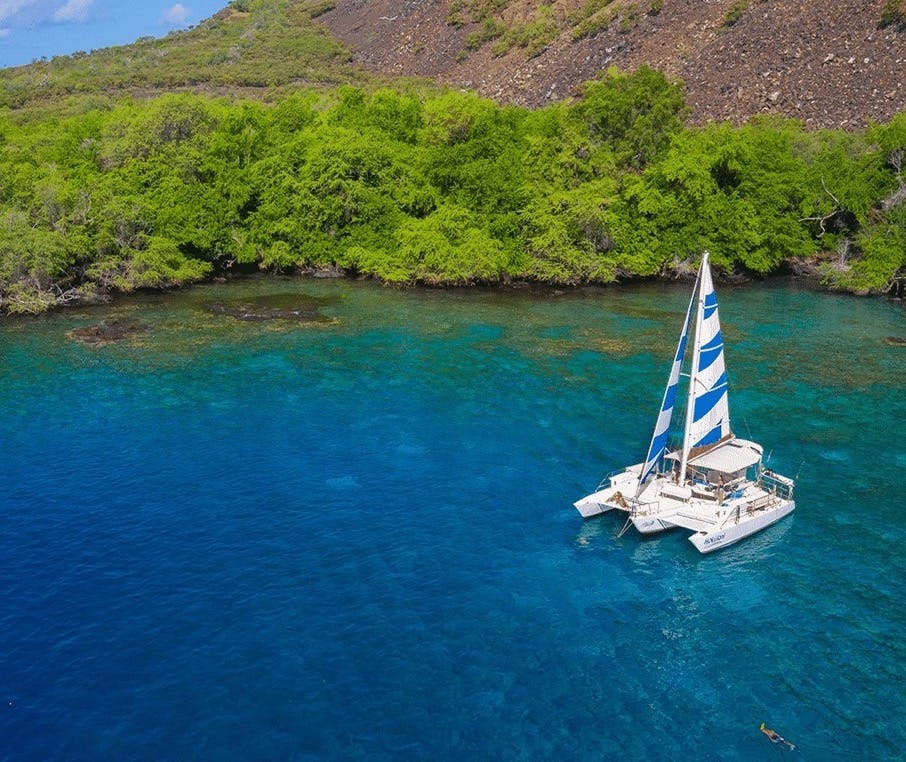
Nobody wants to get seasick. Some of us get seasick as soon as we step on a boat and others have stomachs or iron. Here’s our recommendations for the best boat for seasickness prone people.
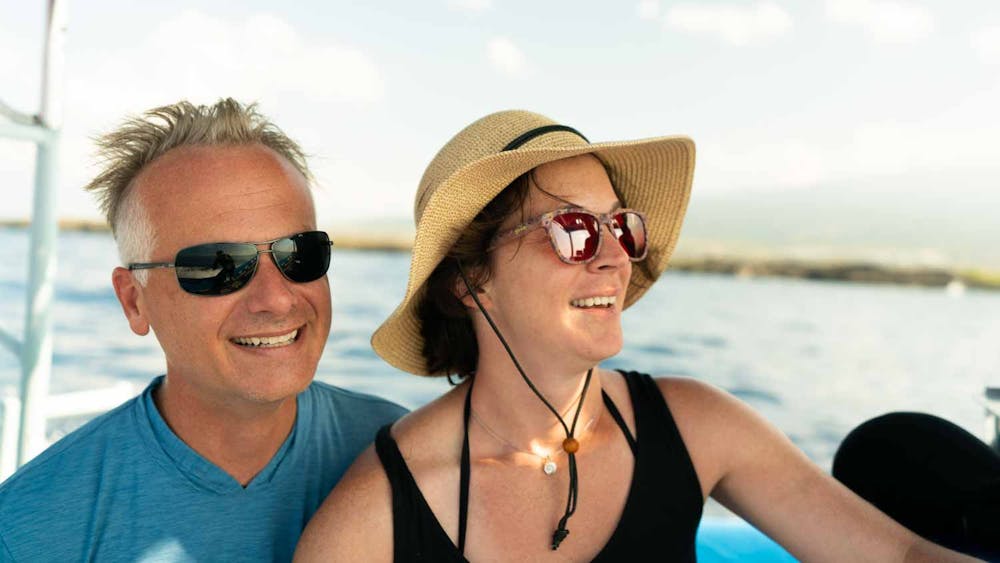
“Roughly one in three individuals is highly susceptible to motion sickness”
What is the Best Boat For Seasickness
How to alleviate seasickness, who is more prone to getting seasick or motion sick, who is less likely to get seasick, is seasickness more common in women or men, does diet effect seasickness, how to prevent seasickness.
For some of us staying on terra firma (land) just isn’t an option. While you can always take drugs like Bonine , Dramamine , Scopolamine , or anti sickness patches before you hop aboard to reduce your chances of getting seasick, this is only a band-aid for those who are truly seasick prone and you still have to deal with the side-effects of the medication. If you must get out on the open ocean or a big lake your best bet is to get on the most stable yet seaworthy platform available.
What to consider when choosing the best Boat for Seasickness
- Size (length)
- Beam (Width)
Seasickness is caused by the body’s movement so ideally the boat that your body is resting on is stable and moving as little as possible. While on a Kona snorkel tour we typically have pretty nice ocean conditions year around you may just book a manta ray night snorkel on a less than ideal night. So if you must venture onto the open ocean what is the best boat for seasickness? Its always going to be the most open and stable boat. This is typically going to be something like a catamaran or a large ship. The Polynesians traveled thousands of miles across the open ocean on catamarans and they are proven designs for sailing and motoring in comfort.
Size Matters
Ideally, if there is some swell (waves in the open ocean) the size of the boat in relation to the size of the swell really matters. So if there is a 6 foot swell and a 10 foot boat it’s going to really be rocking while if there’s a 6 foot swell and you’re on the MSC Seaside you probably won’t even realize it while relaxing in one of it’s 30 pools or hot tubs. Additionally large cruise ships like the MSC Seaside have stabilizers that keep the boat steady. So if you’re looking to cruise on the high seas whilst being wined and dined select the biggest ship you can find. The best boat for seasickness is always going to be the bigger boat.
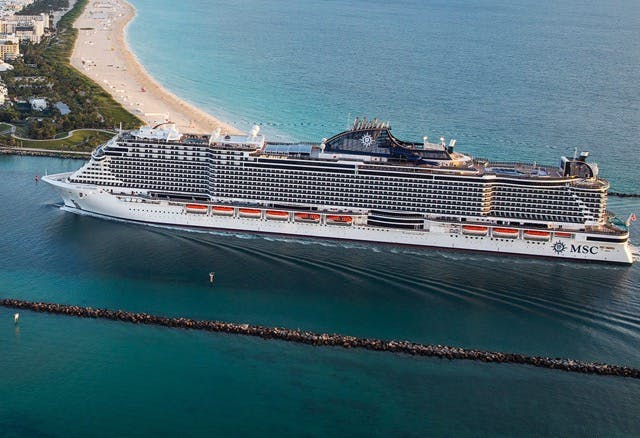
In Smaller Boats Stability (Width) and Visibility are Important
So let’s say you simply want to go on a captain cook snorkeling tour on the big island of Hawaii and there isn’t a cruise ship option available. There’s still some potential for finding a boat that will work well for this excursion. The width also known as the beam of the boat is one factor that influences the way the boat behaves when bobbing around in the ocean. The wider the beam the less the boat will typically rock back in forth in the water. This can be especially noticeable when the boat is stationary in the water. If the boat is sideways to the swell it will rock back and forth. In this scenario the beam of the boat is most important. So which boat has the most beam you ask? Typically the best boat for seasickness is going to be a catamaran or trimaran. Here in Kona it will be a boat like the Sea Paradise Hoku Nui . A catamaran is typically low to the water and wide. With a boat like the Hoku Nui you’ll have a stable and comfortable ride while also getting a great 360 degree view due to its open bow design.

Anti-Motion Tech
Are you already a boat owner and you just want to make it go away? Check out this super neat tech called Seakeaper . It’s a vacuum sealed and cooled gyroscope that spins continuously at up to 557 mph while the boat is stationary or underway. When it’s spinning the boat’s motion can be reduced up to 95%
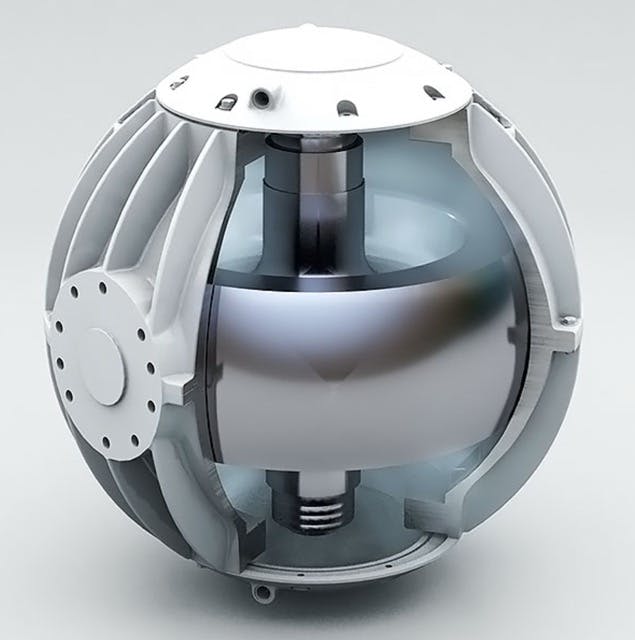
Seasickness is caused by motion that does not match up with what you see. So if the boat is moving and rocking while you stare down at the deck or and tucked away in your cabin your eyes will see only stillness while your body is actually moving. The best way to prevent yourself from getting motion sick is to see the sea. If you’re in a cabin look out the window or go outside and stare at the horizon. If you’re looking down at the deck look up! Stop reading and look at our surroundings outside of the boat.
Once you start to feel green this is a great way to combat the feeling that once it starts can be difficult to stop. Another great seasickness cure is to simply go to sleep. Seasickness drugs cause drowsiness so just go with it! Laying down and napping is probably THE best seasickness cure available.
A study published in Human Molecular Genetics found that about 1/3 of people are highly susceptible to motion sickness . The study covered people mostly of European descent 31 and older. Overall females and younger people report a higher incidence of motion sickness. People who are poor sleepers, suffer from vertigo or are susceptible to getting migraines tend to be more prone to seasickness. Pregnant women and children are also more likely to get seasick. It’s nearly impossible to get seasick if you’re sleeping.
What other factors are related to getting seasick?
- Irritable bowel syndrome (IBS)
- Acid reflux
- Stomach upset with antidepressants,
- Codeine and non-steroidal anti-inflammatory drugs (NSAIDs)
- Indigestion with dairy products
- Poor circulation
- Altitude sickness
- Neuroticism
- More Sleep needed
- Sleepy During the Day
- Lightheaded During Excercise
- Drowsiness From Benadryl
- More easily Stressed
- Frequent Back Pain
- Headache after Red Wine
- Tobacco Use
- Good Sense of Direction
- Higher Body Mass Index
- Good at Handling Stress
- Sound Sleepers
- Positive Attitude Towards Self
- Punctuality
- Adventurous
According to the study in Human Molecular Genetics motion sickness is self reported as being more common in women which makes it likely that women are also more prone to seasickness. Seasickness is a form of motion sickness. Another study of pilots found that 75% of female pilots experienced airsickness while 24% of male pilots did.
The short answer is yes. According to the article The Relationship of diet to airsickness there were several factors contributing to an increased likelihood of airsickness which is a close cousin of seasickness in the motion sickness family. Eating less frequently, and lower calorie and protein rich foods should help. Consider a salad or something filling but light and eat it well in advance of traveling. Stay away from the sausage!

“Keep away from the sausage!”
Dietary Factors Increasing the Likelihood of Motion Sickness
- Higher Frequency of eating
- Higher Calorie Foods
- High Sodium Foods
- Foods High in Thiamine (Vitamine B1)
- High Protein Foods
Thiamine is found in meats, fish, and whole grains. It’s also added to breads and cereals.
Here is a list of foods high in thiamine:
- Fortified breakfast cereals
- Enriched Breads, Cereal, Noodles and Rice
- Beans, Lentils
- Sunflower Seeds
Here’s some Foods Low in Thiamine
Of course the best thing is to prevent seasickness altogether. Check out our guide on How to Prevent Seasickness from the start.
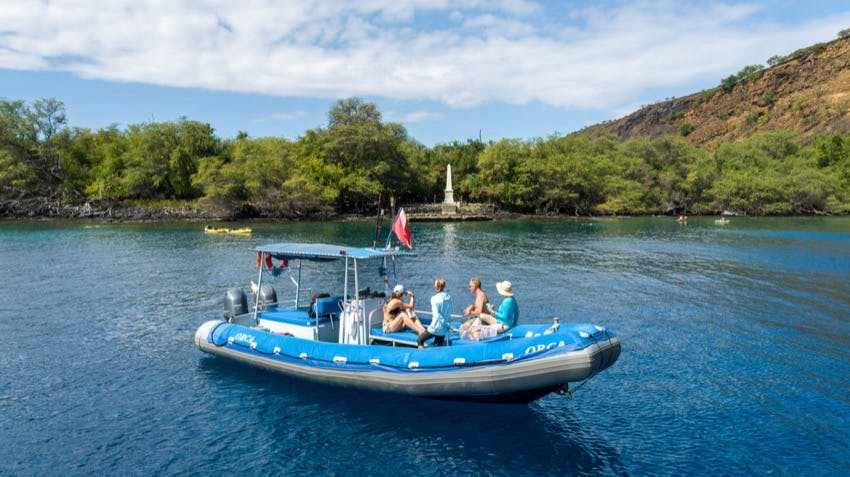
Kona Snorkel Trips is Hawaii’s top rated and most reviewed snorkel company. We run up to 4 snorkel tours a day on our 28′ RHIB boat. People love our Kona snorkel tours as they keep coming back for more sometime bringing their friends and family along. To see the snorkel tours we have available check out our tours page . Or, if you’re really prone to getting seasick check out our Guide to the Best Snorkeling Big Island has and go from shore.
Frequently Asked Questions
Are bigger boats better for sea sickness.
Yes. The bigger the boat, the larger the ocean swell must be to disturb it. Bigger boats often have stabilizers as well to help keep them from rocking in rough seas. While they won’t keep them perfectly still, they do help. One downside of a larger boat is if you’re in the interior and you can’t see the horizon you may get seasick easier than on a smaller boat where you can look out and sync the motion of the boat with the world around it.
Where do you get less seasick on a boat?
Is front or back of ship better for seasickness.
The back (stern) is typically going to experience less motion than the front. Of course it depends on the boat and the swell type but this is usually the case. On some boats there may be exhaust fumes near the back so take that into account when choosing your spot.
Can you get over seasickness on a boat?
What helps extreme seasickness.
Once you begin to feel really sick looking at the horizon won’t help much. They these things.
- Go to sleep
- Stay away from smells
- Suck on a Ginger candy
- Seasickness

Catamaran vs. Monohull Sailboats

Last Updated by
Daniel Wade
June 15, 2022
When it comes to catamaran vs. monohull, there are two schools of thought that always prompt impassioned debates as to which one is much better.
If you've used both a catamaran (a boat with two hulls) and a monohull (a boat with one hull), you know that they both have pros and cons. In most cases, it all boils down to your personal preferences and intended use but that shouldn't prevent us from highlighting the better one.
A catamaran is much better than a monohull in many ways. Catamarans are more stable, faster, and spacious. They also offer safer anchorage and are easy to control. Monohulls are more maneuverable, have lower costs, and better when sailing upwind. It all comes down to personal preference and intended purposes, but when it's all said and done, a catamaran has more advantages than a monohull.
In this incisive article, we'll highlight the critical differences between a catamaran and a monohull and see the one that comes out on top.
Table of contents
Catamaran vs Monohull
Safety while out there on the water is one of the most critical things that any sailor should have in mind when choosing the type of boat to use.
Catamarans shine on many aspects of safety. They're generally more stable and seem to have natural buoyancy since they don't have ballast and this makes them almost unsinkable. Generally, catamarans are designed with a considerable amount of reserve buoyancy thanks to the crannies of the vessel, nooks, and closed-cell foam. These objects can, however, become a serious cause of safety concern should there be a fire outbreak. All in all, a cat can sink in an accident, but it'll most likely float on the surface of water unlike monohulls, which will sink to the bottom.
Again, catamarans have flat decks. This makes it a lot safer to walk on them than it would be to walk on angled decks of monohulls. Given their flat decks, a catamaran boat will stay level and have less pitching and so it's a lot easier to keep the crew aboard and safe even in rough weather.
Another important fact that may contribute to the safety of a catamaran is its speed. If you've always believed that speed equals safety, then a catamaran is the right boat for you. In short, the speed of a catamaran will allow you to outrun rough weather. A modern catamaran can clock nearly 250 miles a day, which is quite faster, and so there's no reason why you should get caught in bad weather.
In terms of safety, a monohull is nowhere near a catamaran as far as safety is concerned. The most important thing about a monohull in terms of safety is its self-righting capabilities. With a monohull, you're likely to return to an upright position even after capsizing and this can give you a chance of accessing onboard safety equipment, floatation devices, life raft, EPIRBS, dinghy, strobe lights, and many more.
Unfortunately, the same cannot be said of a catamaran. With a catamaran, you'll stay upside down once you're upside down and this can be fatal in the middle of the ocean.
Verdict: The self-righting capabilities of a monohull can be life-saving but it isn't guaranteed. On the contrary, a catamaran has loads of safety features chief among them is its unsinkability, so it easily comes out on top as far as safety is concerned.
Speed and Performance
If everything including length remains the same, a catamaran is about 30% faster than a monohull. A cat can sail at half the speed of wind but this will, of course, upon the angle of the wind. It remains the faster vessel and will allow you to arrive at your destination promptly. If anything, you can outrun bad weather with a catamaran.
Monohulls are generally designed to operate pleasantly with the sailing elements. This means that they won't fight these elements and will, in turn, offer slow but sure sailing. However, they do not have a lower wetted surface area and are certainly much slower when compared to catamarans. They can, nonetheless, be a great choice for sailing upwind.
Verdict: When it comes to speed, the catamaran wins hands down. No argument.
Needless to say, a catamaran is designed with two parallel hulls that give it a more reliable form of stability. This is crucial in preventing heeling and capsizing while also mitigating any chances of rolling when speeding. This stability is also of great importance in eliminating seasickness for passengers.
The level of stability that a catamaran has is one of the main reasons why capsizing is a very rare occurrence. A catamaran can lurch when the tops of the waves are at a certain distance, thereby leading to less bobbing.
The stability of a monohull will always be questioned, especially when compared to a catamaran. To put it into perspective, a monohull is four times more likely to capsize than a catamaran because its design means that it has less stability. If anything, a mono's single-beam design makes it seven times more likely to feel the effects of heeling than a catamaran of the same size. In essence, heeling is a major problem in monohulls.
Verdict: The high level of stability that a catamaran brings to sailing will make even a novice sailor feel more confident sailing on a catamaran. Differently, a monohull is less stable and seems to be in constant rolling and pitching motion, which makes it very unstable and unsafe to walk around the deck.
Maneuverability
In most cases, cats always have twin engines, set almost 20 feet apart. This will not only give you superb close control in tight situations but certainly removes the need for a bow thruster. While it may seem redundant to have twin engines on a cat, you'll appreciate the importance of the second engine if the first engine develops a mechanical issue while you're out there on the water.
The shallow drafts of the catamaran also play a major role in maneuverability in the sense that you can navigate into places where you can't get with a monohull such as close to the shore without thinking about running aground.
From a different point of view, a monohull can be better in terms of maneuverability since you won't be dealing with two hulls. A monohull can also make sharp turns and even sail through narrow channels and tight spaces, which is almost impossible with a catamaran. Additionally, a monohull has a higher hull displacement, which is essential in reducing the adverse effects of crosswinds, especially in tight conditions.
Verdict: The differences in terms of maneuverability are slight in both the catamaran and monohull. The fair verdict here is a draw.
Docking and Anchorage
With no ballast or a considerable keel, the overall weight of a cat is significantly reduced. This makes it more lightweight and this is why it wouldn't be uncommon for a 36+ foot catamaran to explore some of the shallow areas that a monohull wouldn't dare reach.
However, the wider and unique size of a cat means that it won't easily fit on a traditional slip and this needs a unique set of skills and careful planning to anchor at most docks. This means that finding the right space at the dock can be quite difficult, so you may have to take a dinghy to the shore.
A monohull is a lot easier to dock as it takes less space compared to a catamaran. This means that your docking, hauling, and slipping charges will be much less than those of a catamaran.
Verdict: Does it make any sense to bring two boats to the shore? Well, this is what you do when you have a catamaran and it certainly loses to the mono as far as docking and anchorage are concerned.
Ride Comfort
A comfortable ride is, without a doubt, one of the most important things to consider when looking for the right boat for you.
The fact that a catamaran is designed with a wider footprint is of great importance in mitigating the negative effects of unpredictable rolling and pitching that sailing is known for. A catamaran has a broad surface area, which makes it more comfortable and stable. As such, it's a lot easier and safer to cook while sailing.
Again, your passengers will be less prone to seasickness in a catamaran because there's less pitching and a cat doesn't roll from swell to swell as it happens in a monohull. That's not all; walking on the deck of a catamaran is a lot easier and safer since the boat is flat. This makes reefing much easier and safer and your chances of falling overboard are greatly reduced. More importantly, it's more pleasurable to sleep in a catamaran because it never heels.
In terms of ride comfort, a monohull offers smooth sailing as it doesn't slap or pound the water like a catamaran. This is because it works harmoniously with the sailing element and doesn't fight it like a catamaran, especially when sailing upwind. However, seasickness brought about by constant rolling and pitching of a monohull.
Verdict: If you want to have a comfortable sailing ride, a catamaran has many benefits than a monohull as long as it has a superb bridge deck clearance that disperses wave action.
Maintenance
A catamaran is general designed with two of everything. From the two hulls to the two engines, you seem to get things double, which can be reliable when sailing if there's an issue with one part. In other words, you always have a backup.
However, the costs of maintenance can be high if you have to maintain the boat, even though you can still use one part if the other part isn't working.
The fact that you only have single parts means that you have to be very careful and ensure that your monohull vessel is maintained or repaired regularly. Fortunately, the costs of maintenance and repairs are greatly reduced when compared to those of a catamaran.
Verdict: It's highly doubtful that you'll take your catamaran out if one of the two hulls or engines are faulty. The monohull wins this.
The costs of a catamaran are substantially high since everything seems to come in pairs. However, catamarans are known to have high resale values, very low depreciation rates, and can sell a lot faster than monohulls because they're more popular with modern sailors. But because catamarans aren't widely manufactured in the United States, their costs are still high as you'll have to include the delivery costs.
When deciding to buy a monohull vessel, you should keep in mind that they're widely available on the market so their costs might be a bit lower compared to catamarans. Again, their low maintenance cost will work to your advantage.
Verdict: The costs of buying and maintaining a monohull are quite low, so it's the best choice if you're on a tight budget but still want to enjoy sailing. Catamarans are very costly to build and are more expensive than monohulls.
The amount of deck space afforded by a catamaran is huge and always very spacious. The amount of space that a cat can afford you is one of the main reasons why you should choose it if you're looking for comfort or planning to live aboard the vessel.
On the contrary, monohulls are narrower when compared to catamarans; hence they have a very limited deck space. This is particularly mitigated by the fact that they have additional storage space.
Verdict: A catamaran has a lot more deck space and wins on this.
Load Distribution
Unlike monohulls, catamarans are rectangular and are more stable. This is essential in giving the passengers more freedom without necessarily having to worry about how their weight is distributed inside the boat.
A monohull is almost similar to standing on one leg and balancing can be quite overwhelming. This means that the weight of the passengers will have to be evenly distributed to ensure that the boat is balanced. Of course, this will limit the freedom of passengers and any imbalance might make the boat capsize.
Verdict: You don't have to worry about load distribution in a catamaran but this can be a negative issue in a monohull.
Fuel Efficiency
If you want to save money by reducing the fuel costs, a catamaran is an ideal option. A cat generally experiences little drag or resistance and doesn't need lots of fuel to move. They also have a steady rise in speed, which means that there will be no sudden increase in fuel consumption.
In comparison, the level of drag created due to greater displacement in a monohull vessel means that there will be a higher resistance and this translates to higher fuel consumption.
Verdict: A monohull consumes more fuel than a catamaran, so a cat is an ideal option if you're looking for fuel-efficiency.
In Conclusion
To this end, it's easy to see that a catamaran comes out on top as the best option on many fronts. This doesn't mean that a monohull doesn't have its advantages. Of course, it has both advantages and disadvantages just like a catamaran does.
And even though the catamaran comes out on top, the final decision is on you and may depend on your personal preferences. Whatever you choose, make sure that you enjoy your sailing vacation.
Related Articles
I've personally had thousands of questions about sailing and sailboats over the years. As I learn and experience sailing, and the community, I share the answers that work and make sense to me, here on Life of Sailing.
by this author
Learn About Sailboats
Most Recent

What Does "Sailing By The Lee" Mean?
October 3, 2023

The Best Sailing Schools And Programs: Reviews & Ratings
September 26, 2023
Important Legal Info
Lifeofsailing.com is a participant in the Amazon Services LLC Associates Program, an affiliate advertising program designed to provide a means for sites to earn advertising fees by advertising and linking to Amazon. This site also participates in other affiliate programs and is compensated for referring traffic and business to these companies.
Similar Posts

Affordable Sailboats You Can Build at Home
September 13, 2023

Best Small Sailboat Ornaments
September 12, 2023

Discover the Magic of Hydrofoil Sailboats
December 11, 2023
Popular Posts

Best Liveaboard Catamaran Sailboats
December 28, 2023

Can a Novice Sail Around the World?
Elizabeth O'Malley

4 Best Electric Outboard Motors

How Long Did It Take The Vikings To Sail To England?

10 Best Sailboat Brands (And Why)
December 20, 2023

7 Best Places To Liveaboard A Sailboat
Get the best sailing content.
Top Rated Posts
Lifeofsailing.com is a participant in the Amazon Services LLC Associates Program, an affiliate advertising program designed to provide a means for sites to earn advertising fees by advertising and linking to Amazon. This site also participates in other affiliate programs and is compensated for referring traffic and business to these companies. (866) 342-SAIL
© 2024 Life of Sailing Email: [email protected] Address: 11816 Inwood Rd #3024 Dallas, TX 75244 Disclaimer Privacy Policy
CATAMARANS VS. MONOHULLS
by sailmaui | Oct 27, 2016 | Sailing | 0 comments
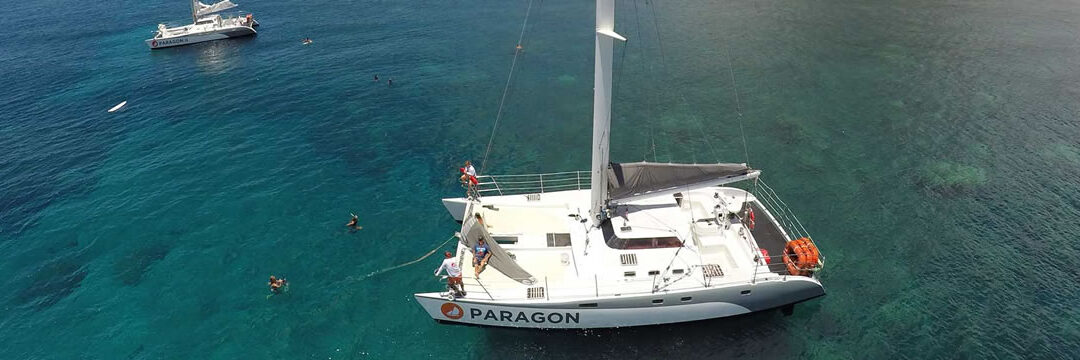
What’s the difference?
There are obvious differences between catamarans and monohulls. Most notably, a monohull vessel has only one hull, or main body, whereas a catamaran has two hulls. Because of these two hulls, catamarans typically stay more level than their single-hulled counterparts. They also tend to offer more space, and arguably will go a lot faster. Lets dive in to what differentiates the two types of boats and what makes the Sail Maui vessels so great…
Smooth Sailing
A monohull sailboat, as the name implies, has only one hull, and this hull is generally centered around a heavy keel. A catamaran has two hulls, with the spar and sails in the middle ( amidships in sailor speak). The wide stance of catamarans means they don’t heel much (heeling is when the boat leans while under sail); in fact, a catamaran will rarely heel more than five to ten degrees before you need to reduce sail area. For these reasons, catamarans are especially good for families with young children or older, less agile people because the boats aren’t as susceptible to the wave action and walking around is easier on level ground. While any sailor enjoys the thrill of a monohull heeled over in perfect sail trim, enjoying a beverage on the deck or laying out a buffet lunch is certainly easier with minimum tilt! Seasickness can also be less of a problem on sailing catamarans, & if you’re concerned about feeling uneasy, be sure to read our blog on preventive tips !
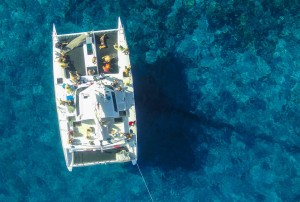
Catamarans usually have more space than monohulls, both above and below deck. Though it increases windage, it is nice to have a covered salon area on deck as well as the luxury of spreading out and lounging in the cockpit. Prime seating on Paragon & Paragon II is the netted area in between the hulls called trampolines (no not the bouncy ones) which offer guests a great place to watch for whales and dolphins. This is also the wettest place, as the hulls are always on different points of a wave and sometimes they break under the boat!
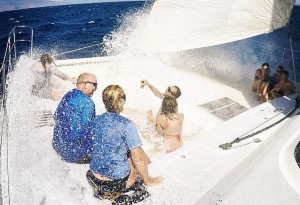
Fast is fun!
There’s many benefits to both types of sailboats, and certainly everyone has their preference, but possibly the biggest factor for some in the question of catamarans vs monohulls is that performance built multi-hulled sailboats are able to reach higher speeds. This is due to limited drag and their power-to-weight ratio—in other words, there is a lot of sail power but very little weight and resistance in the water. Depending on the design, catamarans can be up to 25–30% faster than single-hulled boats of the same length. This is of course not always the case, as many of the catamarans you’ll find on Maui are built more for comfort than speed. Sail Maui is the fastest charter on Maui, and we regularly go in excess of 15 knots under sail during our charters in the tradewinds. **This isn’t always the goal, as we take our passengers enthusiasm for fast sailing into consideration before attempting to sail so aggressively!
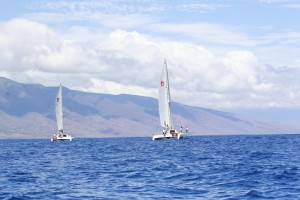
Paragon and Paragon II
With Sail Maui, you can discover the beauty of our pacific island aboard one of two gorgeous, high-performance catamarans: Paragon and Paragon II . Both boats were built with carbon fiber rotating wing masts modeled after the America’s Cup winner Stars & Stripes . With this spar technology combined with our fractional rig, we are able to increase our sail area and point higher than traditional multihulls which enables us to achieve higher speeds all the while maintaining comfort and safety.
What’s better than exploring the breathtaking coastline and waters of Maui? Getting to do so on a spacious, fast, high-performance catamaran! Contact us today to learn more about our many different tours we offer through Sail Maui! Happy Sailing!
TULIP – 88ft Sail Yacth from Pedro EA on Vimeo .
Submit a Comment
You must be logged in to post a comment.
- Announcements
- Maui Activities
- Uncategorized
- August 2023
- February 2023
- January 2022
- October 2019
- November 2018
- August 2017
- February 2017
- December 2016
- November 2016
- October 2016
- September 2016
- January 2016
- October 2015
- Catamaran vs. Monohull: What Type of Boat is Right for You?
- Sailing Hub
- Sailing Dilemmas
- Catamaran vs. Monohull - which one should you choose?
When you are planning a sailing holiday, you’ll be faced with a choice; catamaran vs. monohull. Each type has many benefits, but it’s important to think about what your needs are because that will tell you just which one to pick!
Let's dive right in!
Ease of sailing
Maneuverability, space/layout, holiday vibe.
You may also like: Sailing holiday destinations for your next boat trip
One of the top considerations you should have is what type of sailor you are because catamaran vs monohulls offer a distinctly different sailing experience. If you are a first time sailor and just want something incredibly easy to handle, then a catamaran will probably win out.
Catamarans have great control when it comes to maneuvering in tight places. Since they have twin engines and rudders, you get a lot of control and can turn pretty much 360 degrees with ease.
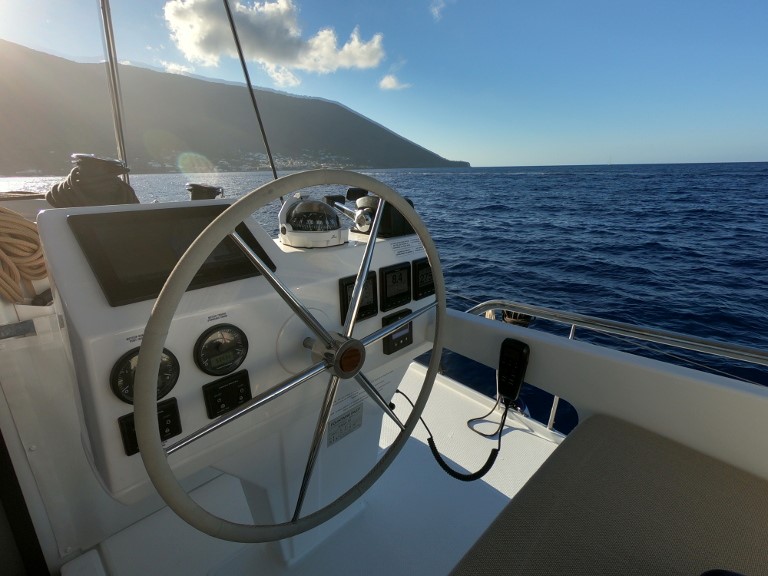
Catamarans also have a shallow draft, which will allow you to explore much closer to the shoreline than a monohull would be able to venture.
In the catamaran vs monohull speed debate, it might be more of a draw. Catamarans are typically 25-30% faster than a comparable monohull, but some argue that it comes at a price. When catamarans are sailing full speed you might experience a lot of slapping from the waves. Monohulls are designed to cut through the water. Also note that catamarans can be inefficient upwind and tack slowly.
When considering sailing conditions , a catamaran vs monohull in rough seas will perform very differently.
During rough sailing, you must be more vigilant when on a catamaran. The feedback from the wheel of a cat is not as obvious as that from a monohull. In high winds, you’ll need to know when to reduce sail.
However, monohulls tend to roll more in stormy weather, while catamarans stay pretty level even in rough seas.
When thinking about catamaran vs monohull stability, the stability that catamarans offer is a huge draw for many. Since cats bounce with the waves less, it is easier to walk around and enjoy the yacht while in motion. The increased stability is also great for children, or seniors, or anyone who might be prone to seasickness. When it comes to catamaran vs monohull seasickness, catamarans come out on top.
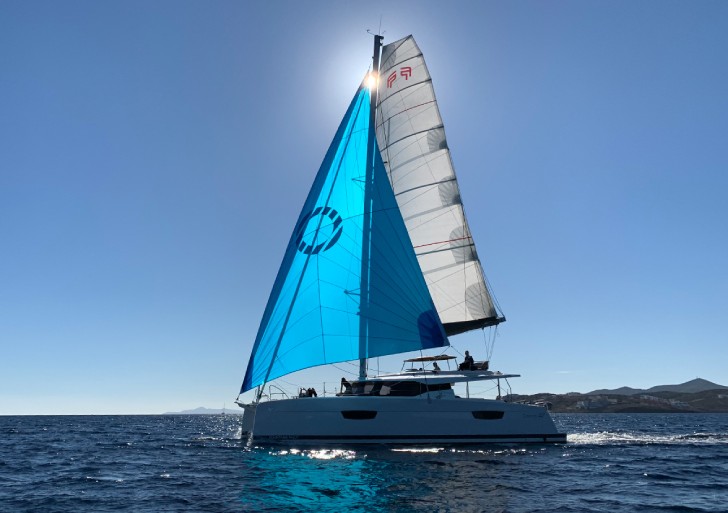
Although it is worth noting that monohulls swing less than catamarans if placed side by side in an anchorage.
If you’re deciding on a catamaran vs. monohull, you’ll have to think about what type of group you have. For family sailing holidays , maybe a catamaran is the best choice. Catamarans are very spacious, offering a large living space, and many cabin/head options. This makes them optimal for parties that want to spread out. Whether you’re a family, a big group of friends, or even couples looking for a 5 star, luxury experience who appreciate the extra space and comfort even if it’s not needed, a catamaran can fit your needs.
If thinking about catamaran vs monohull liveaboard readiness, the catamaran is a top contender. With far more living space and a much more spacious kitchen, Catamarans are great for people and groups that want to focus on entertainment and lounging.
Catamarans also typically have more spacious cabins and more privacy due to the layout with the cabins separate from the living area. This way you can send the kids to bed, and still enjoy the kitchen, dining, and living area.
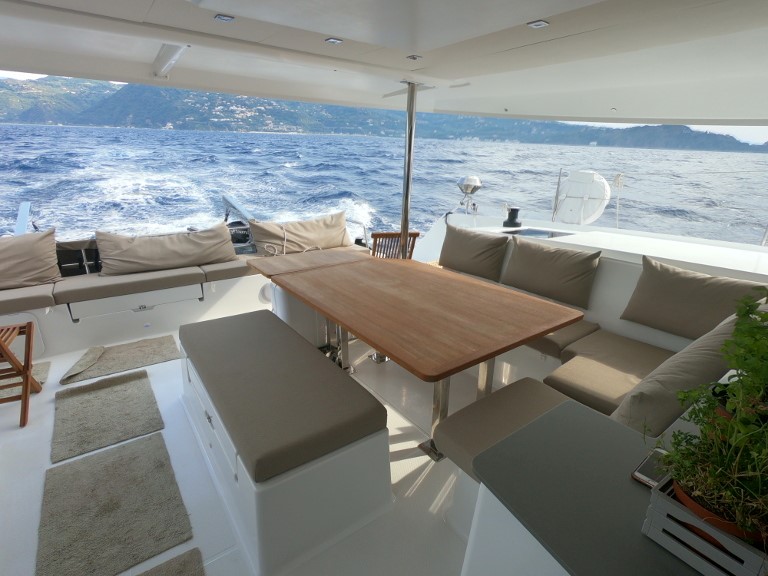
While catamarans are often touted for being roomy and luxurious, it’s worth nothing that monohull yachts can also be large and luxe. The Oceanis 62 and the Jeanneau 64 are top choices for those who want to live in the lap of luxury during their sailing holidays , while still getting that real sailing yacht experience.
In terms of catamarans vs monohull price , a monohull will definitely win. Charter prices for a catamaran can be 50-100% higher than that of a comparable sailing yacht. But that can be boiled down to the fact that you’re getting more space and more equipment with a catamaran!
A monohull, will only have one of everything - like it’s name suggests. It has one hull, one engine, one rudder, whereas a catamaran has twice the equipment and twice the living space of a monohull of the same length.
Another catamaran vs monohull cost to consider is the mooring costs. A catamaran, due to its twin hulls, might use two spots. Monohulls take less space to moor, and will be less expensive in that regard.
The cost of fuel should also be a consideration and in the question of catamaran vs monohull fuel efficiency, catamarans are the winner. With easy to drive hulls, and super light weight, they have great fuel efficiency.
Lastly, there is an abundant supply of monohull charters yachts, so the charter costs tend to be less to match the demand.
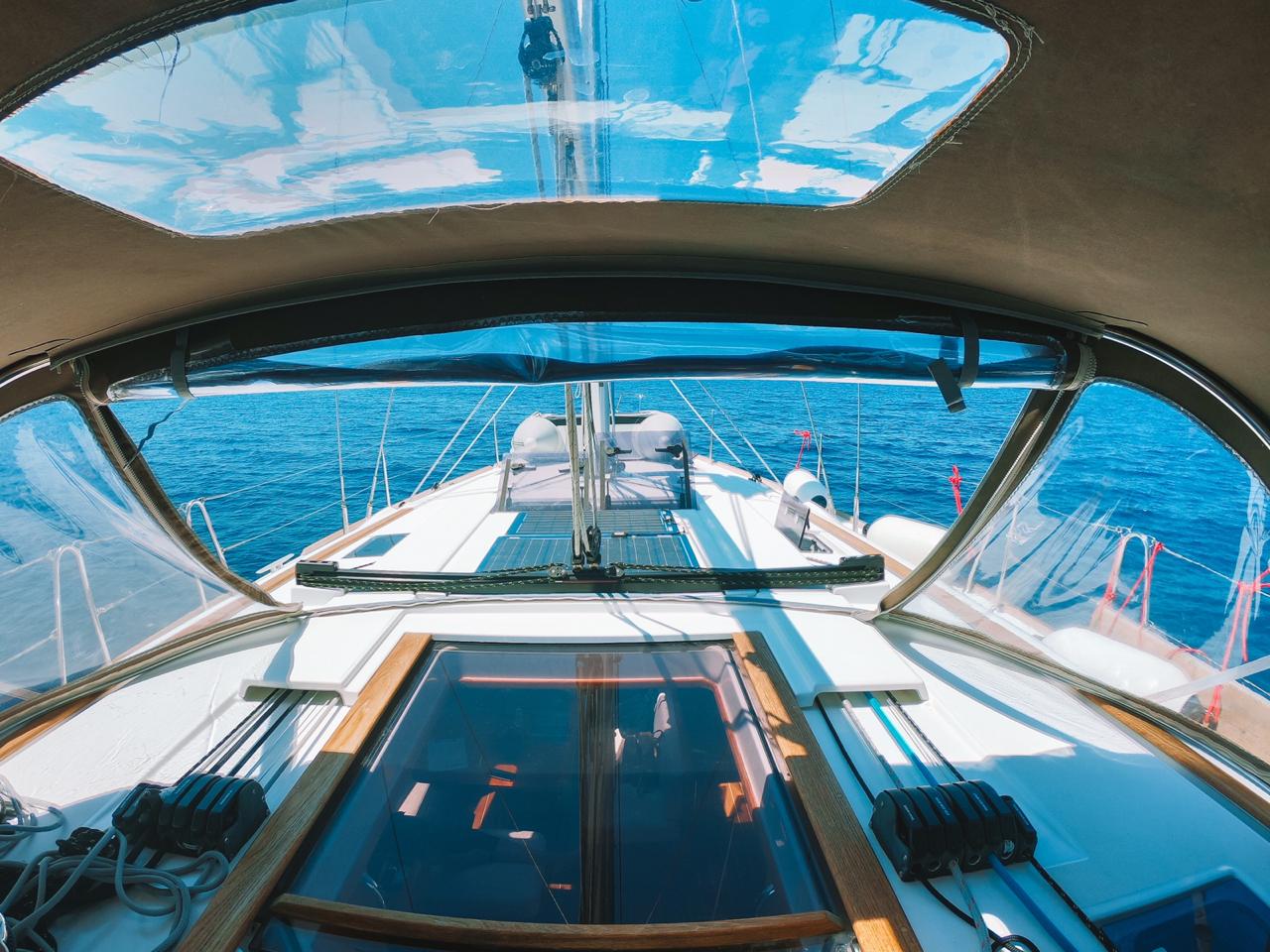
In the end, what it all comes down to is preference. In terms of performance, price, and comfort, catamarans and monohulls both have a lot going for them. You just need to decide what kind of holiday vibe you’re looking for, and Yacht4Less can help you with the rest!
At Yacht4Less we recommend fully crewed catamaran charters if you’re looking for top-of-the-line luxury and a super relaxing holiday where you don’t have to lift a finger. These boats will offer the space and comfort you’d expect from a 5-star hotel.
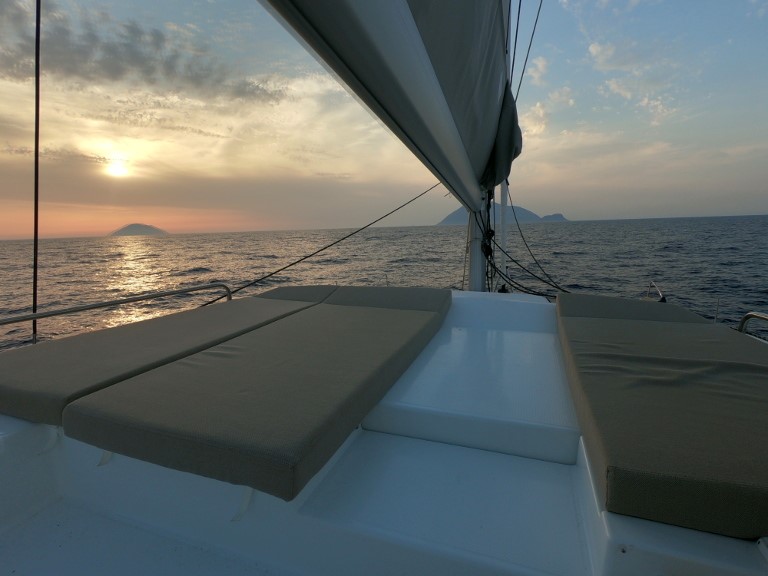
If you’re looking for a hands-on sailing adventure holiday, you might want to do a skippered charter with a monohull.. Your captain can show the ropes and help you learn how to sail. Or if you’re already an experienced sailor, go for a bareboat monohull charter . The exhilarating feeling of sailing a monohull is unmatched. It’s the classic romantic sailing experience, and makes for a thrilling holiday.
For those looking for a sailing experience somewhere in between extravagant luxury and exciting escapades, Yacht4Less is here to help you find the perfect boat for your needs. More sailing holiday dilemmas? We got you covered! Sailing Holidays vs. Land-Based Holidays » Party Sailing vs. Natural Wonders »
Get a free & non-binding quote

Catamaran vs Monohull: Let’s Solve This (we Lived on Both).
This post contains affiliate links. As an Amazon Associate I earn from qualifying purchases. When you make a purchase using one of our links, I may earn a small commission at no additional cost to you. Please read my full Privacy Policy for more information.
The ultimate question – catamaran vs monohull, which is better? This post will help solve the dilemma. It is packed-full of information, by real boaters!
We prefer catamarans, now that we have tried both. But we strongly recommend that you start with a monohull, if possible.
We cruised on a monohull for three years (two of which full-time), and then switched to a catamaran for two more years of sailing and living aboard .
We have years of boating experience and I spent lots of time making this post as helpful as possible, and fully human-generated .
All of our boat-life posts – Boat Life @ No Texting & Tacking
Top Catamaran Pros and Cons.
Here is what we loved the most and the least about our catamaran:
Catamaran Pros
- Stable while cruising
- Calm at rest
- Easy to dock
- Shallow draft
Catamaran Cons
- Jerk and slam cruising
- Cost to buy and maintain
- No sail feel
I am covering each in greater detail in this post, so keep reading.
Top Monohull Pros and Cons
Here is what we loved the most and the least about our monohull:
Monohull Pros
- Great sail feel
- See the crew at all times
- Best for solo sail
Monohull Cons
- Roll and heel
- Small space
Now that you have seen the short version of it, read below. Each of these pros and cons are discussed in much greater detail.
And I have a few more features too!
Monohull vs catamaran – are they even comparable?
Are we really comparing apples to apples ? Apart from the number of hulls, the two sailboats are, actually quite different.
A monohull is a sailboat with a single hull , while a catamaran has two – imagine Pirates of the Caribbean versus Moana (but nicer).
There is yet another kind – a trimaran – a sailboat with three hulls (which is where we might be headed next, if we venture out into the big blue again).
Since few people are sailing trimarans, I will focus on the two most common sailboats – cats and monos.
19 Things to Consider – Know Before You Compare.
Below are a few main features which will define the performance of a boat, as well as the overall cruising experience .
I am offering simple explanations and descriptions, so that anyone can understand and decide what matters most.
It is the sailor that makes mistakes, not the boat.
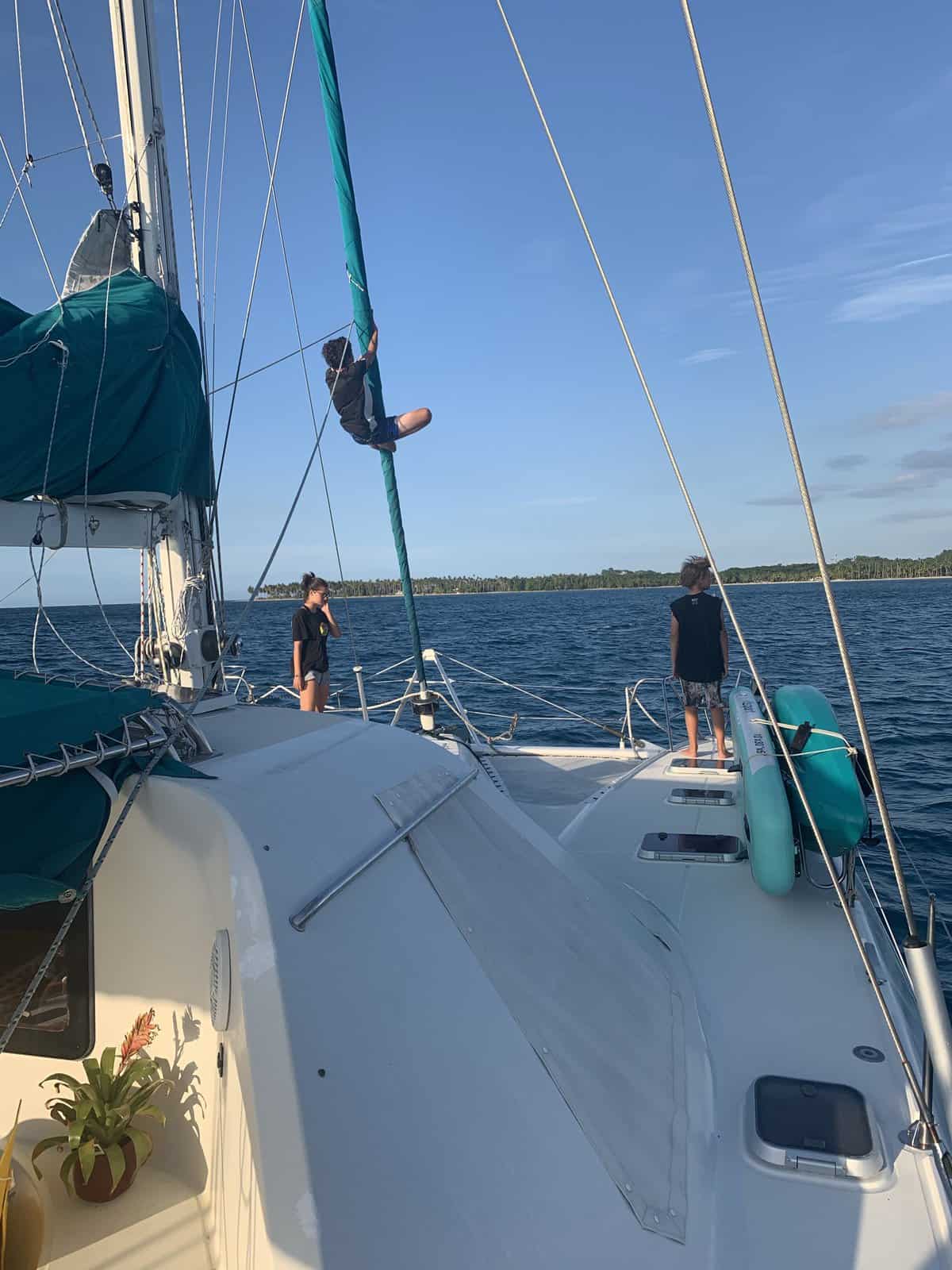
Monohulls can handle bad weather, if steered well – where each larger wave must be surfed. It really is up to the captain to make or break the journey in poor weather.
Catamarans are like small moving islands. They, too, can handle bad weather safely, but are a bit harder to yield to the wishes of the captain, as they are slower to respond.
We have made mistakes on both cats and monos and the weather was not even that bad – poor choices will affect safety far more than the number of hulls.
Both catamarans and monohulls can sail perfectly fine out in the ocean, around the world, more than once.
Boater’s Tip : The best favor you can do yourself, is to take sailing classes , practice and learn everything you can about your boat.
2. Stability
Monohulls have a heavy bottom, which constantly pulls the boat down. Catamarans are very hard to flip over.
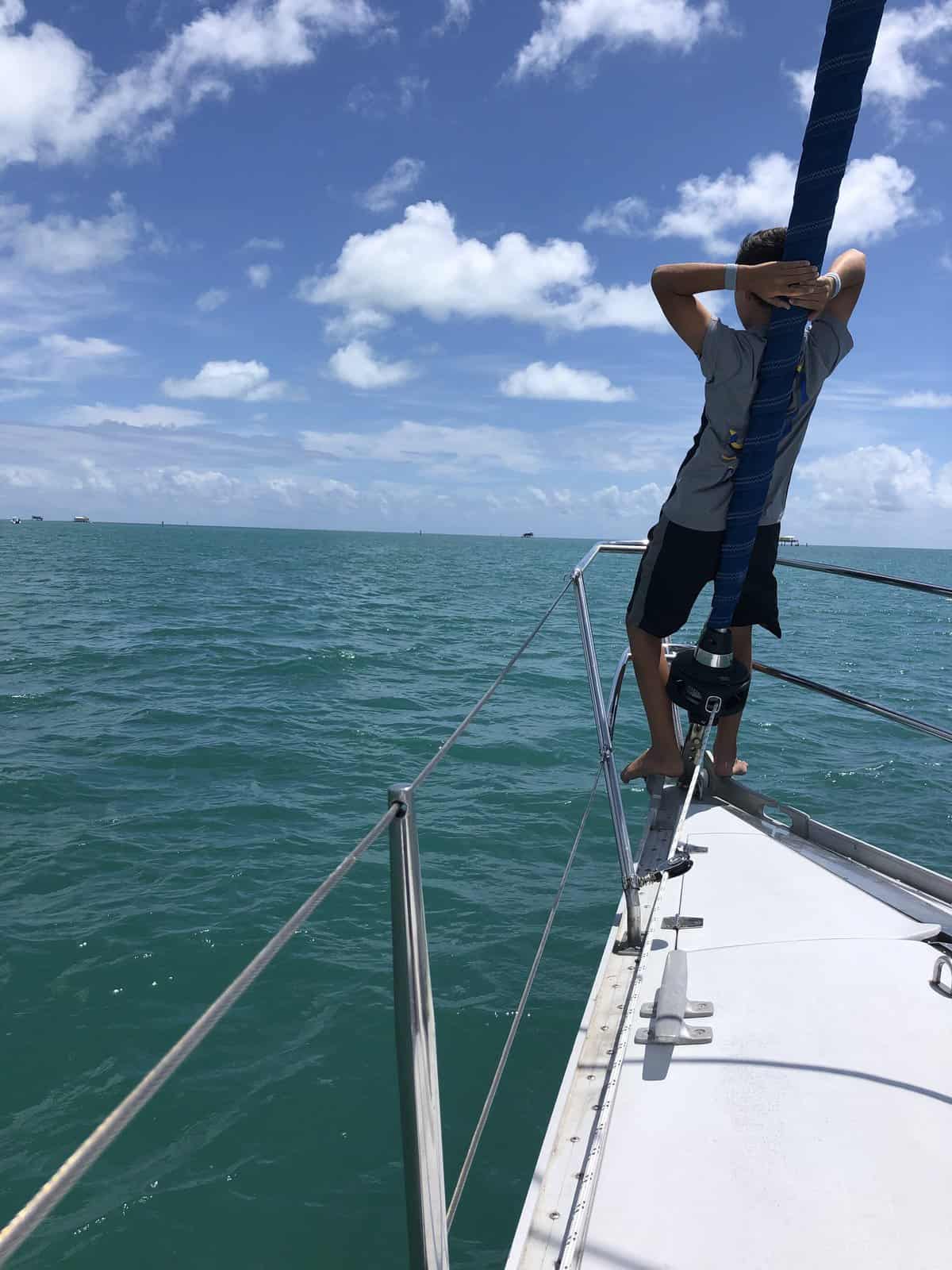
If a monohull flips, it will right itself fairly quickly (unless it starts taking in water). If it takes in water, a monohull will sink quickly.
It is likely the mast will break, before a cat capsizes . Once they flip over, however, they stay that way and turn into a raft.
Let’s be real, though. If the boat is truly in such daring conditions that it flips over, the injuries and damage are the real danger, for those still conscious.
Boater’s Tip: Avoid bad weather in the first place – use Predict Wind App , have a guide during longer passages. Avoiding a major storm is perfectly doable.
Monohulls are far more affordable than catamarans.
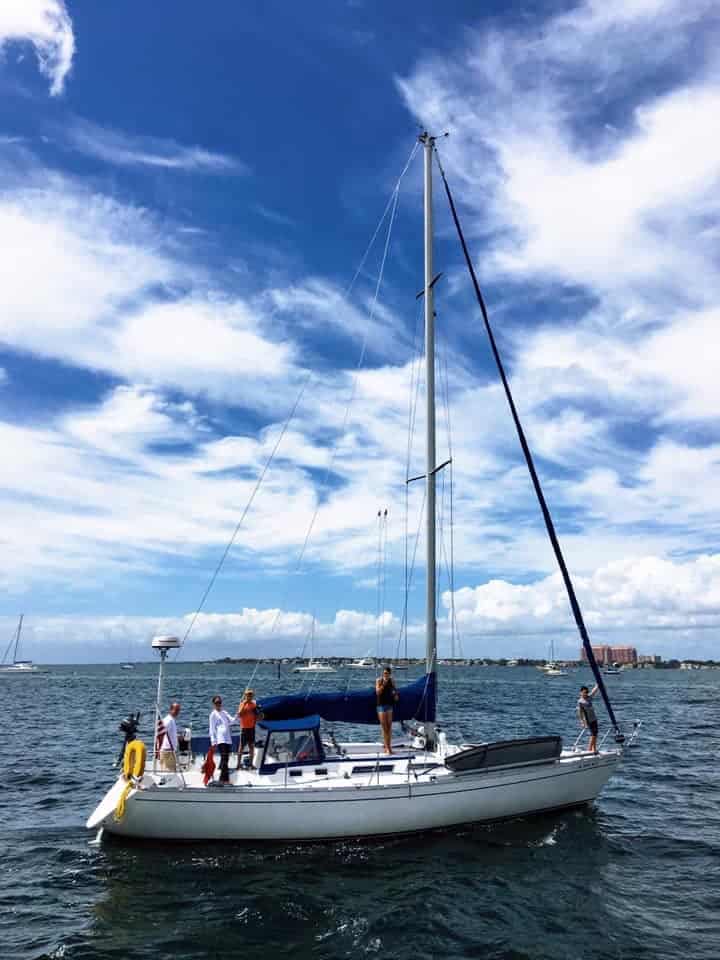
There are also a lot more of them to choose from , making it a buyer’s market in almost all cases.
It is not unheard of to offer half of what a monohull is listed for and be able to get a great deal.
Catamarans have always been more expensive , but especially in the last few years. With more people able to be location-independent , catamarans have become the first choice for a floating home, for many.
Buying a catamaran? Read this: Buying a Catamaran in 10 Steps – Complete Guide.
When we first moved on a sailboat , we still had our house and its large mortgage , and we were not sure if that boating thing was going to work at all . So, we only looked at monohulls and were able to find our 1985 Grand Soleil 39 at a very good price.
Once we decided to switch to a catamaran, low-balling went out the window . It was a hot cats’ market out there. We looked hard , made tons of calls, but most of all waited as long as it took.
Patience can pay off and is a good financial habit to adopt.
For more good financial habits: 12 Practical Ideas to Spend Less
The prices for cats have been staying high due to many people being willing to finance a boat , kind of like having a mortgage on a home.
It sort of makes sense, if the boat is to become your new home.
4. Resale value
Flipping a fixer-upper boat is a risky business. Few venture into it.
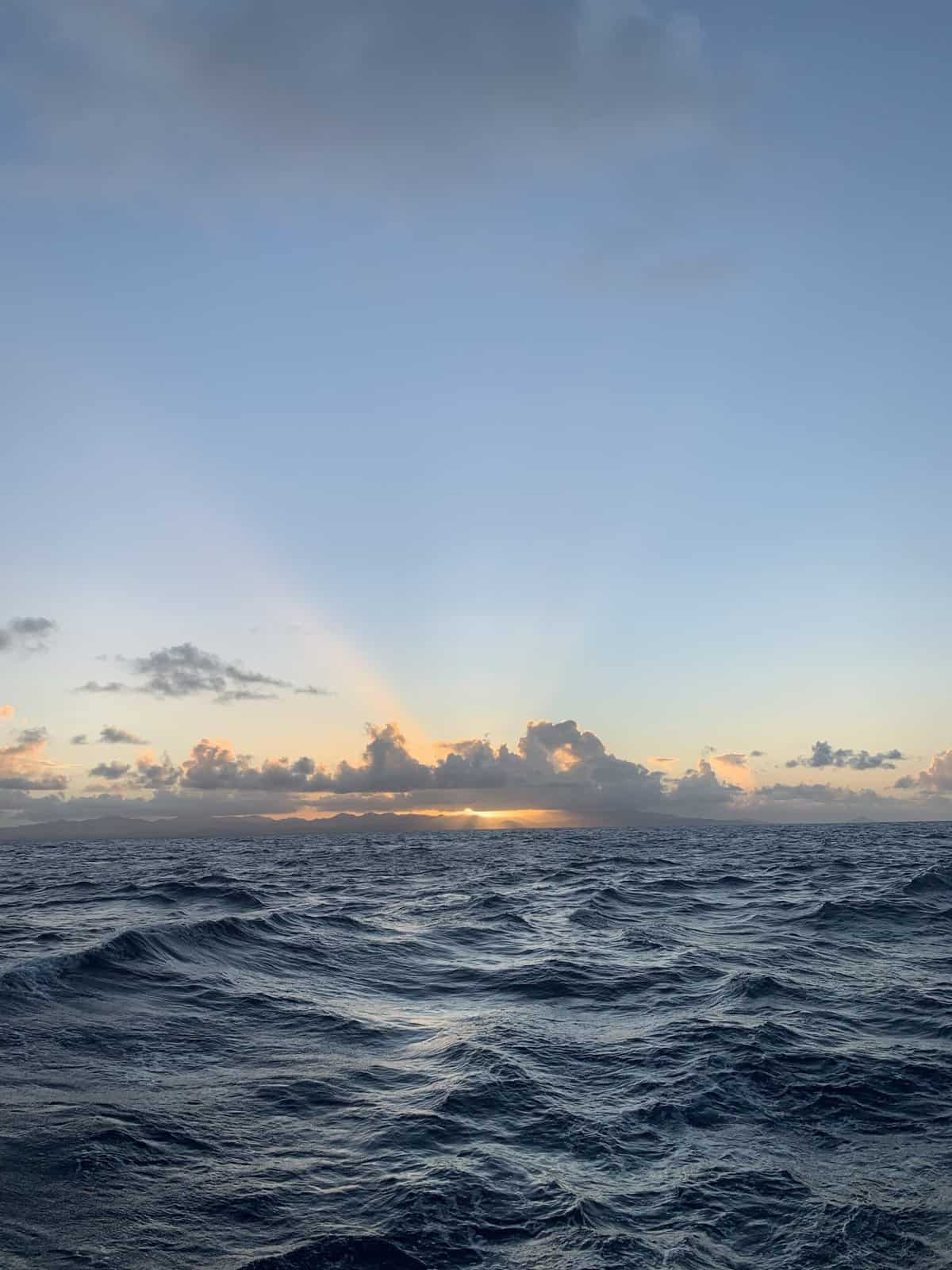
Monohulls and catamarans are like cars , they lose their value over time.
Sure, one can buy a fixer-upper of a boat, update all the systems and end up with a beautiful boat, but the cost of boat upgrades and repairs is very high. Unless you do most of the work yourself, return on investment is zero.
Even catamarans do not hold their value. You have to rely on a crash in the luxury items market, or a hurricane leaving lots of boats with reparable damage, to snag a good deal on a cat.
We lost money selling our monohull, but made money on our catamaran – we did almost all the work ourselves and it was a good market, so we took advantage . It did cut our cruising short, unfortunately.
Boater’s Tip: Sell your boat “by owner” and do the listing right – here is a whole post about it: How to Sell a Boat by Owner, the Honest Way
5. Maintenance
Plan for around 10% of the boat value for annual maintenance cost.
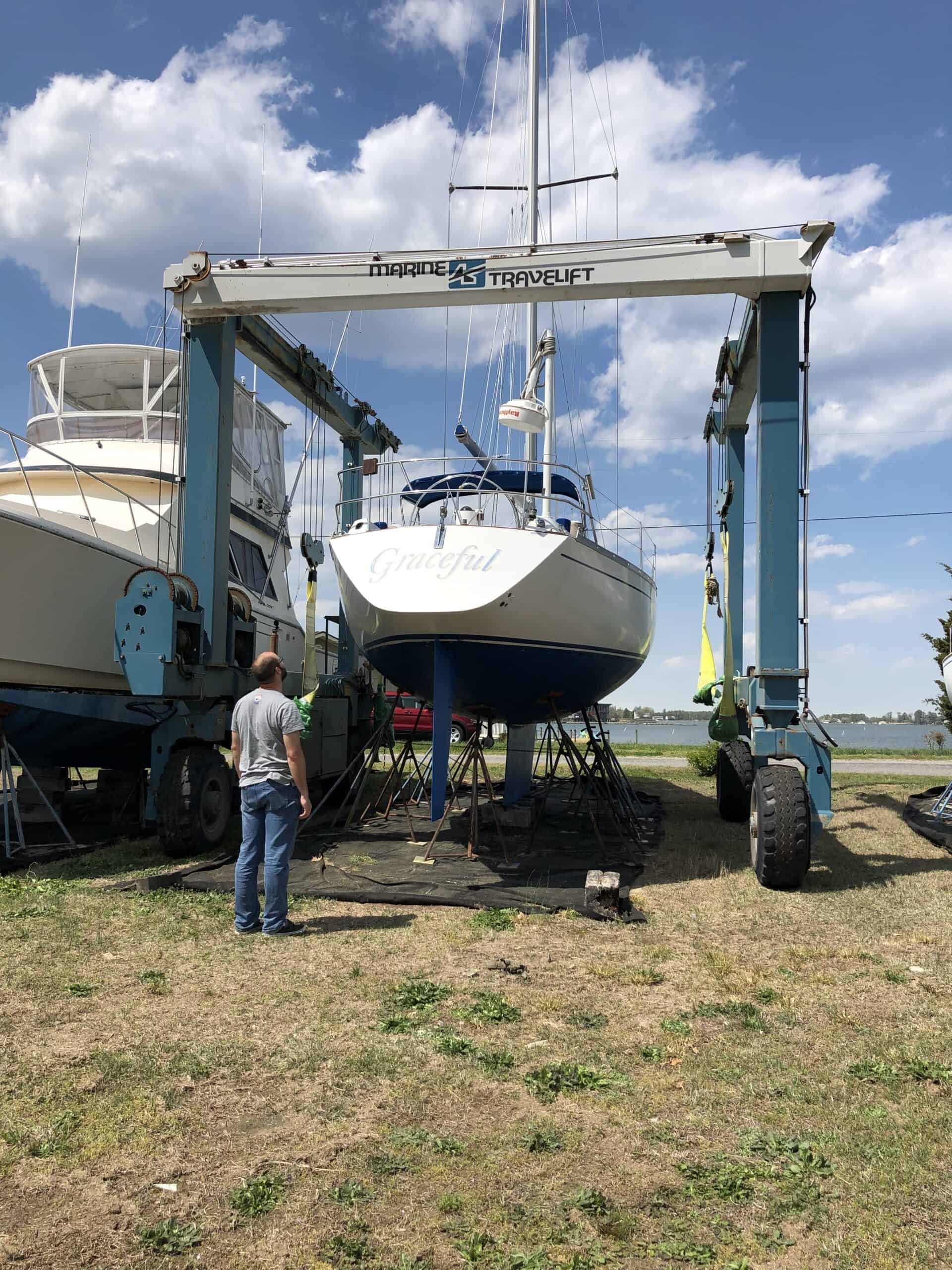
Monohulls only have one of each to run and fix – one engine, one hull to paint, one AC unit.
Catamarans cost more to maintain and expenses add up quickly.
In addition, it costs more to haul out a catamaran , as few boatyards are equipped with a sling to accommodate the width of a catamaran.
There are even fewer options in remote island countries .
Boater’s Tip: If sailing internationally, do just the urgent repairs at the US/other developed country. Cheaper destinations offer a lot cheaper services. Buy spares, they are hard to find in remote places.
Both or our boats have been designed with speed in mind.
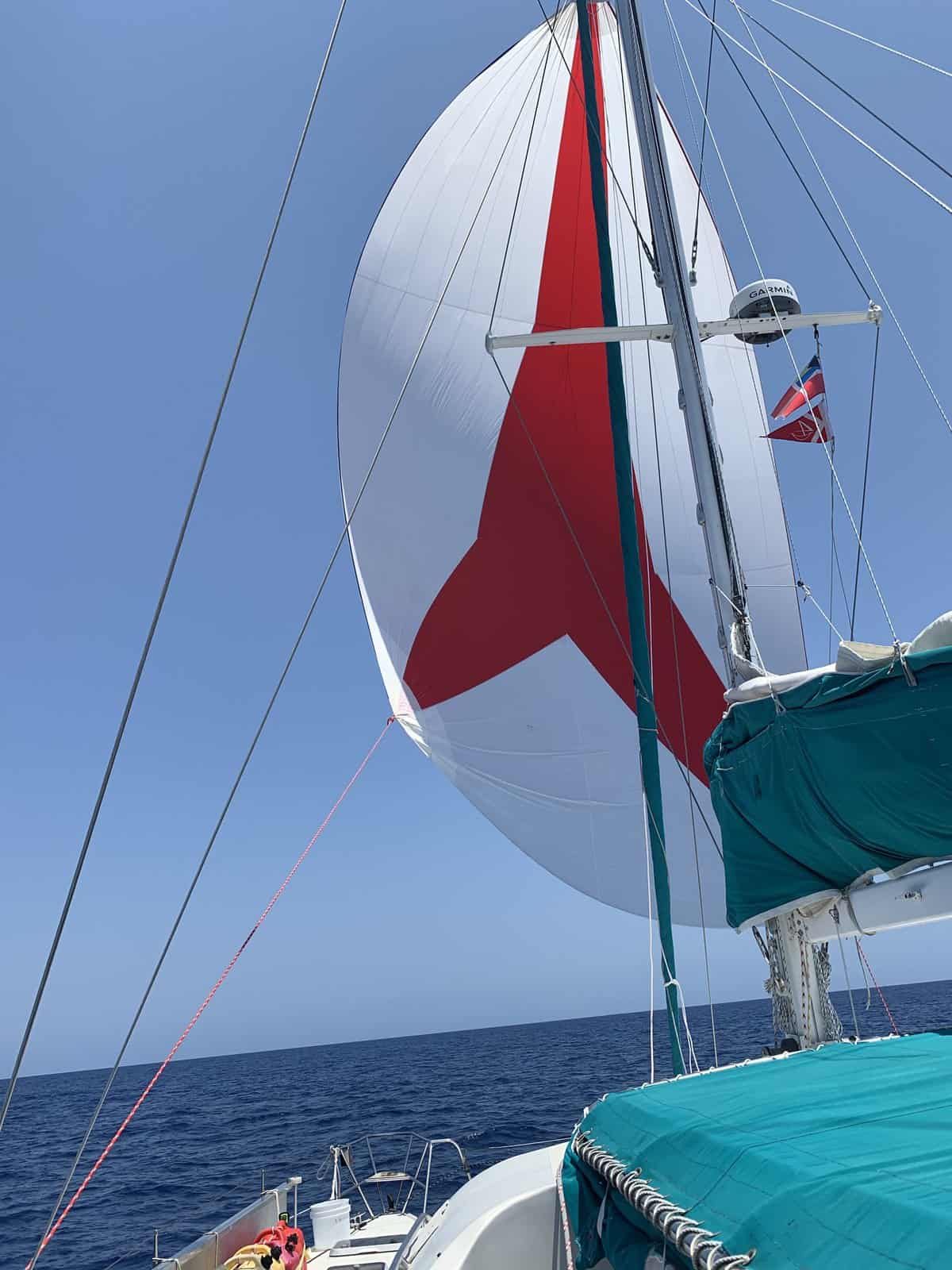
We have sailed at 11 knots downwind on our 42 ft Privilege catamaran. We usually reached 7-8 knots into wind, on our 39 ft Grand Soleil monohull.
That was in around 15-20 knots of wind.
Catamarans sail faster, with all other things being equal . A few factors contribute to higher speed in catamarans:
- Hull design and shape – the less of the hull in the water, the less drag.
- Lighter weight overall – aided by proper load distribution and boat material.
- The hull material, in performance cats – carbon fiber, or an inner foam layer.
- Larger sail surface area, calculated as the beam : length ratio.
A 50 foot sailing catamaran (and smaller), with proper hull and body design, can exceed 20 knots of sailing speed in 25 knots of wind.
More subjective factors that have major influence on the speed of both monohulls and catamarans:
- Boat load and distribution – lots of cargo means slower speed.
- Proper sails management – how much wind the sails can “grab” (I am a master of spilling wind on monohulls, because I hate going fast , call me for tips).
- Crew experience – wind speed and direction changes almost constantly. Sails have to be adjusted at the same rate, if you want to go fast.
- Cabin and cockpit design – the larger, higher and boxier that cabin / cockpit, the more it will slow down the boat.
Boater’s Tip: To increase boat speed during sail, buy folding propellers . Put the boat on reverse, so they don’t spin, to decrease drag. Just make sure you take the boat off reverse when starting the engine!
7. Wind feel
If you are starting new, with no sailing experience , start sailing a monohull.
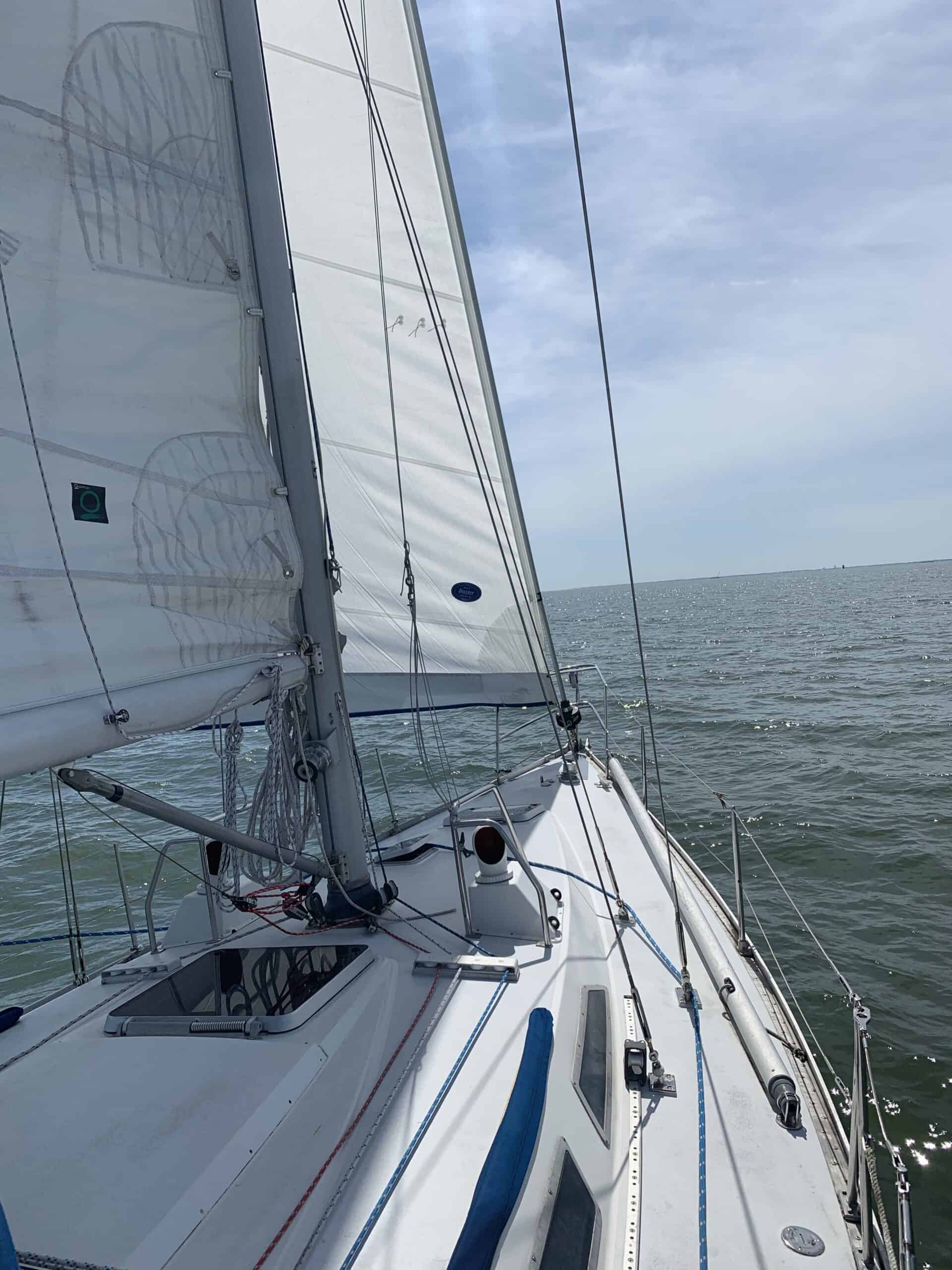
A monohull allows you to be the one sailing the vessel. You can really feel the wind and gain a perfect understanding of how the wind and the sails work together.
Our monohull did not have an autopilot and even though overnight passages were hard, we became very familiar and comfortable with our boat. This is coming from a mama who never grew fond of sailing .
If going out for a day sail, for the sake of sailing, I would pick a monohull.
Catamarans are fast, but they kind of sail as they wish . It is almost impossible to feel the wind and its pull on the mast.
That is why catamarans are sailed by numbers – by reefing the sails following the manufacturer’s recommendations. With experience it becomes easier.
Boater’s Tip : Try sailing a monohull and a catamaran, to see the difference. Both will likely make you sick , so don’t let that be the determining factor.
8. Performance
I am discussing performance in terms of how the boat sails at different angles to the wind.
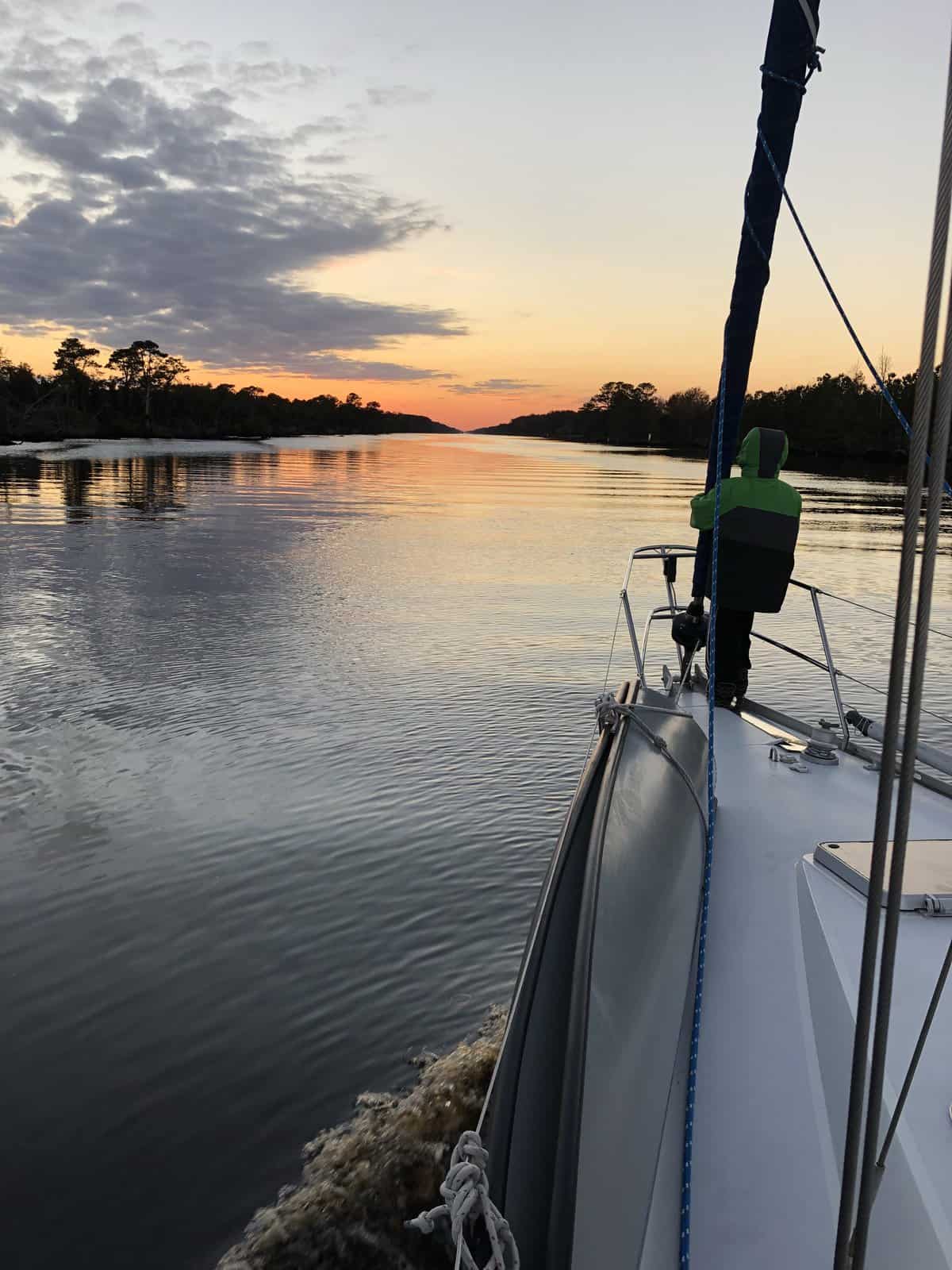
Monohulls sail great into the wind , making it easy to start a passage when the wind is blowing almost in your face. They achieve this by heeling over (leaning to one side).
Monohulls do not sail well downwind . You can have a spinnaker up, or spread the sails to grab the most wind possible, but it is hard for light apparent wind (true wind speed reduced by your boat’s speed, when sailing downwind) to move a heavy monohull.
Catamarans do not sail into the wind . Even performance cats need a winder angle into the wind to be able to move.
Downwind, catamarans will give you the most comfortable ride ever , while flying a spinnaker. That glass of wine they are talking about not spilling aboard – it is during downwind sailing.
Both cats and monos suck when sailed into beam wind (wind coming from the side). I know, I am not terribly technical here, but it feels like choosing between two evils – rolling and puking, or being jerked and puking.
Feeling sick? This might help: Seasickness Sucks – 21 Tried and Tested Tips to Stop it.
Boater’s Tip : Wait for a better weather window. Nothing can ruin a great adventure quite like sailing, scheduled by your calendar.
9. Maneuverability
When discussing maneuverability, I am featuring here behavior under sail .
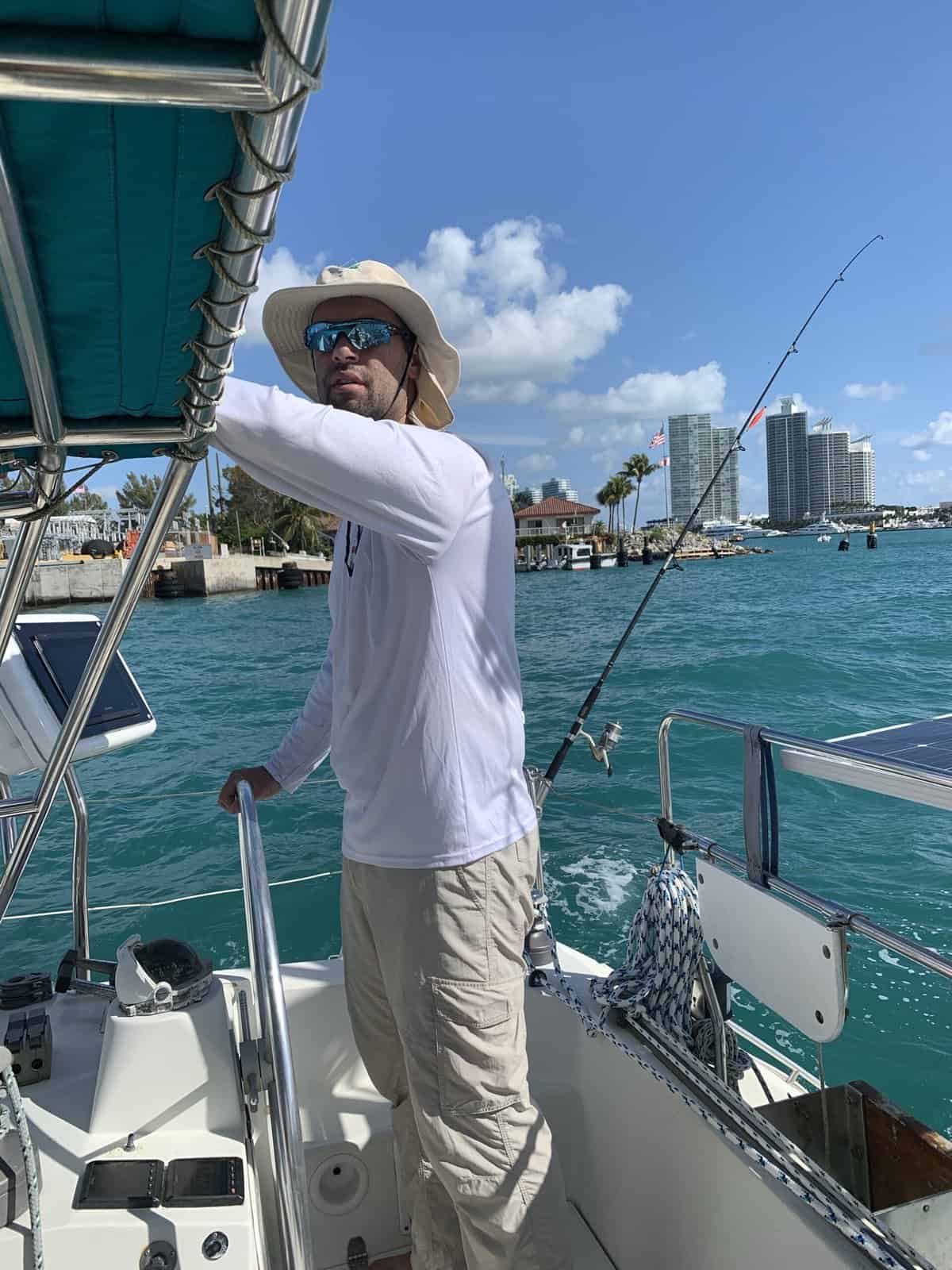
Monohulls are very easy and responsive to tacking (changing the direction of the boat, while sailing upwind). All those movies where teams work in excellent synchronized movements to flip sails to the other side of the boat, show you examples of tacking.
Catamarans are hard to tack . They are very slow to respond , so you need lots of momentum and speed, as you prepare to tack. Once you wait a bit too long, the opportunity is gone. It is not a big deal, but in stronger winds, you can easily rip a sail when it starts flopping uncontrollably in the wind.
We are not fans of jibing on either boat (changing the direction of the boat during downwind sailing). True downwind sailing is never a good idea, because accidental jibing can hurt both the boat (done it!) and the crew , in stronger winds.
Boater’s Tip: No texting and tacking – teamwork pays off best when working together to sail against the direction of the wind 😉
10. Docking
The best part about docking is pushing off the docks. Marinas are expensive and the adventure is never, ever the same , if the boat is just tied in place.
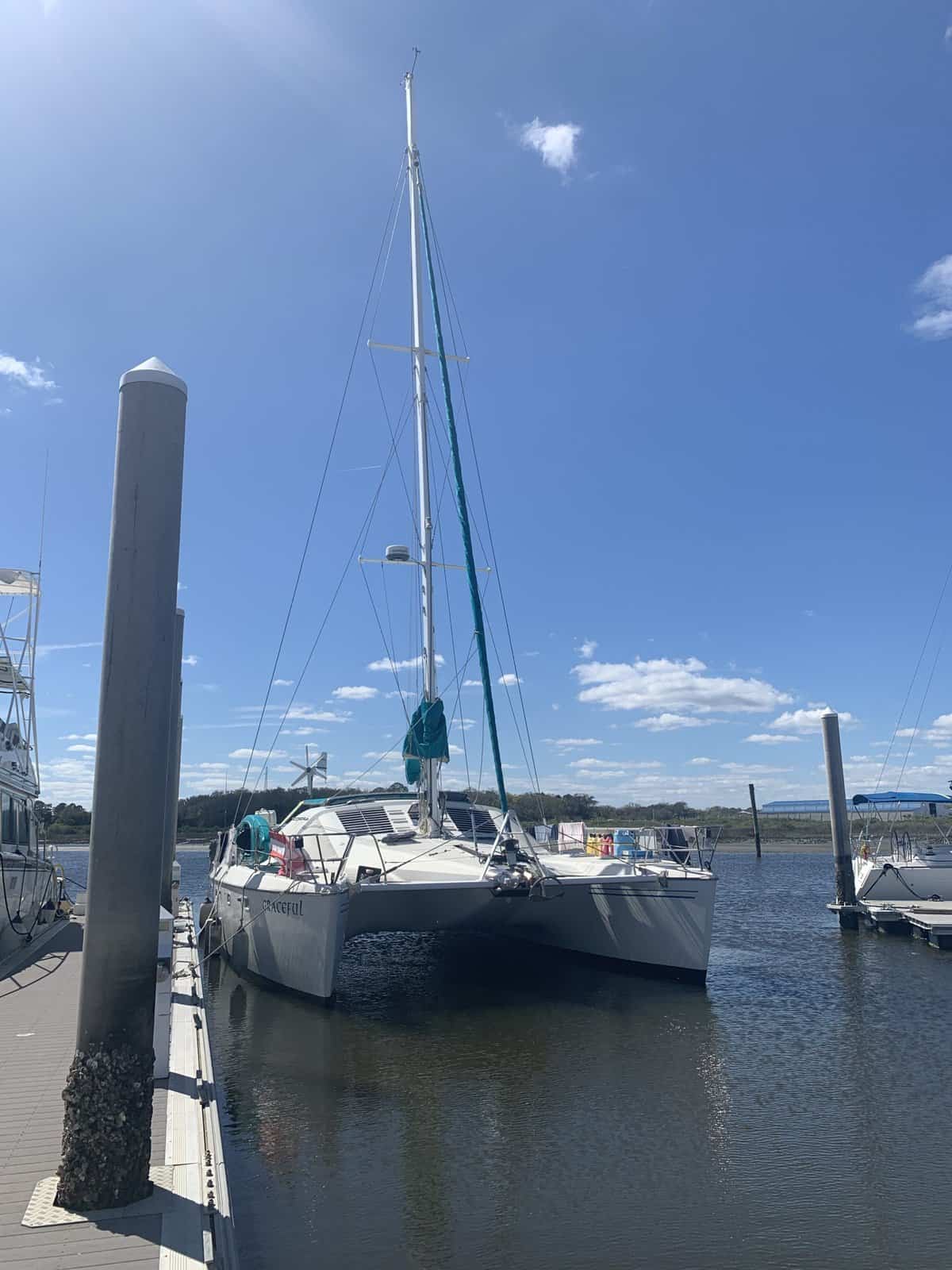
Still, when considering docking keep in mind:
Catamarans are super easy to dock and can rotate a full circle on a very small radius. This is because catamarans have two engines and it is a breeze to control the boat, while using the engines to maneuver into tight spaces.
Monohulls are such a pain to dock ; it was our captain’s biggest nightmare. We were all threading very carefully when it was time to dock our monohull . That momentum the boat gives you while tacking, works quite against you when docking.
When we purchased our monohull back in 2017, we found the tiniest, cheapest marina on the Chesapeake Bay, and sailed on the weekends, practicing docking .
Only the marina owners laughed at us (even though they never admitted it).
Boater’s Tip : We like casting the spring line first, when docking. Some marinas have ridiculously strong currents – call ahead and make sure someone is there to help.
If you want to jump off and swim to the beach, you need a catamaran.
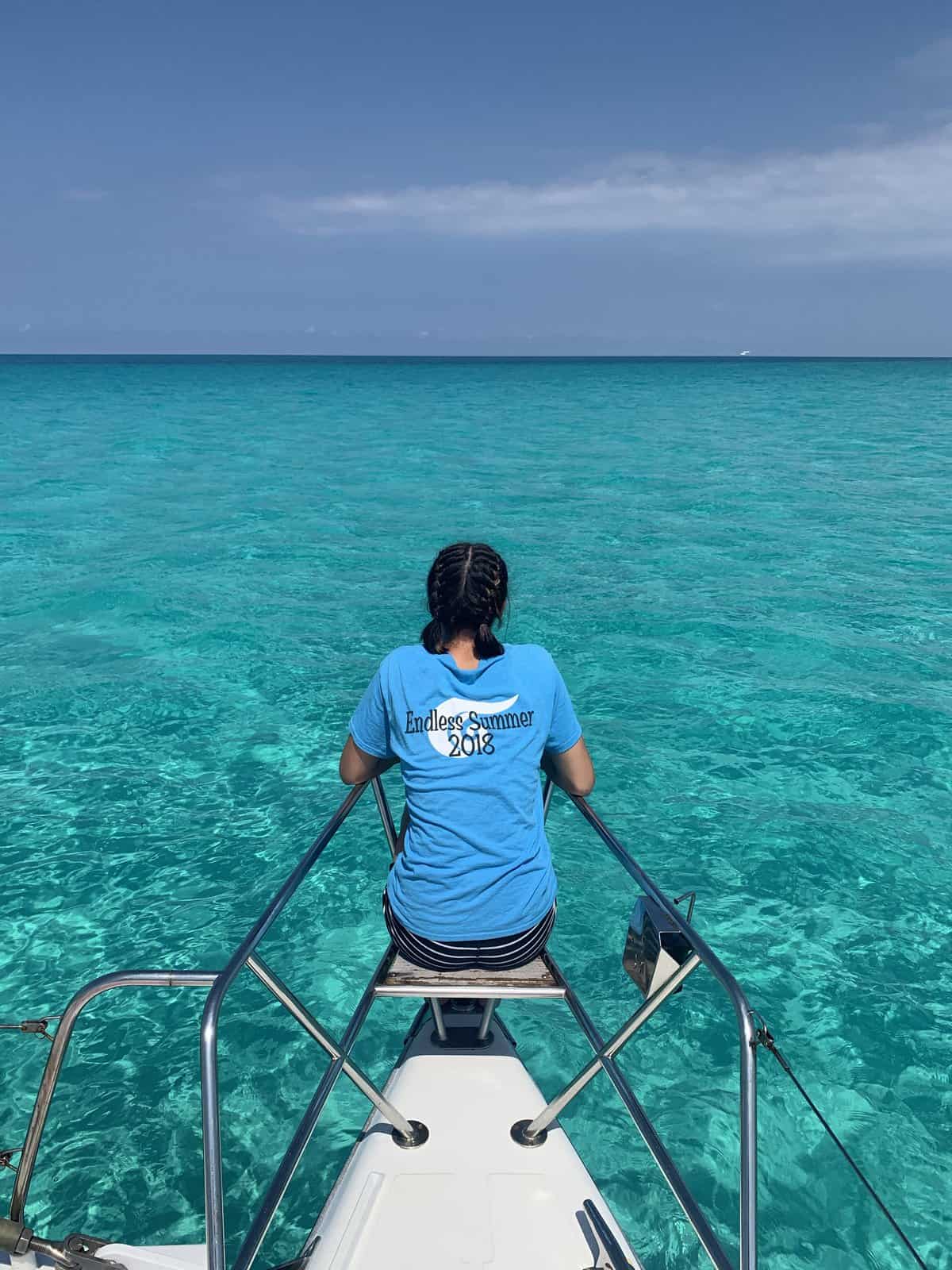
The draft of the boat is the distance between the waterline and the end of the keel. This defines how deep the boat can go without hitting bottom.
Catamarans are lighter and have a shallower draft , compared to monohulls. From around 3ft for a cat under 40ft, to around 6ft for larger catamarans. Our Privilege 42 drew 3.5ft.
Catamarans can go in shallower water. They can even be “beached” , meaning, you can actually take the boat all the way to the beach, then use the high tide to bring her back into the deeper water. Just ensure the access is free from any rocks and coral.
For the times you “beach” the boat accidentally, make sure you have towing help .
The photo above is from us sailing the Great Bahama Bank – an amazing shallow plateau that only a catamaran can handle.
Monohulls have a longer keel, which helps stabilize the boat . The keel must go fairly deep, in order to “hold” a monohull upright , and to counter the wind force on the sails.
The most common keel types you might see are:
- full-keel – a keel looks like a natural extension of the keel. It provides great stability, but makes the boat heavier and slower.
- fin keel – a keel that looks like a fin, attached to the bottom (the most common kind), for stability without sacrificing speed.
- lifting keel – An adjustable keel to change the draft of the boat, if needing to navigate shallow water. They are convenient, but not as sturdy.
Our 39-foot monohull drew 6 feet – quite a lot for such a small boat. It did limit our anchoring options.
We have seen both catamarans and monohulls stuck, by running aground . It is possible to free up the boat, if you are careful with the engines and don’t end up digging yourself deeper.
We had a Boat US membership the entire time we were coastal sailing the US. They even rescued our dinghy once.
Boater’s Tip : We always set our depth instruments to show smaller than actual depth, giving us a cushion with the uneven sea floor.
12. Cruise comfort
Comfort at anchor matters most, but a miserable passage can ruin the entire adventure very quickly.
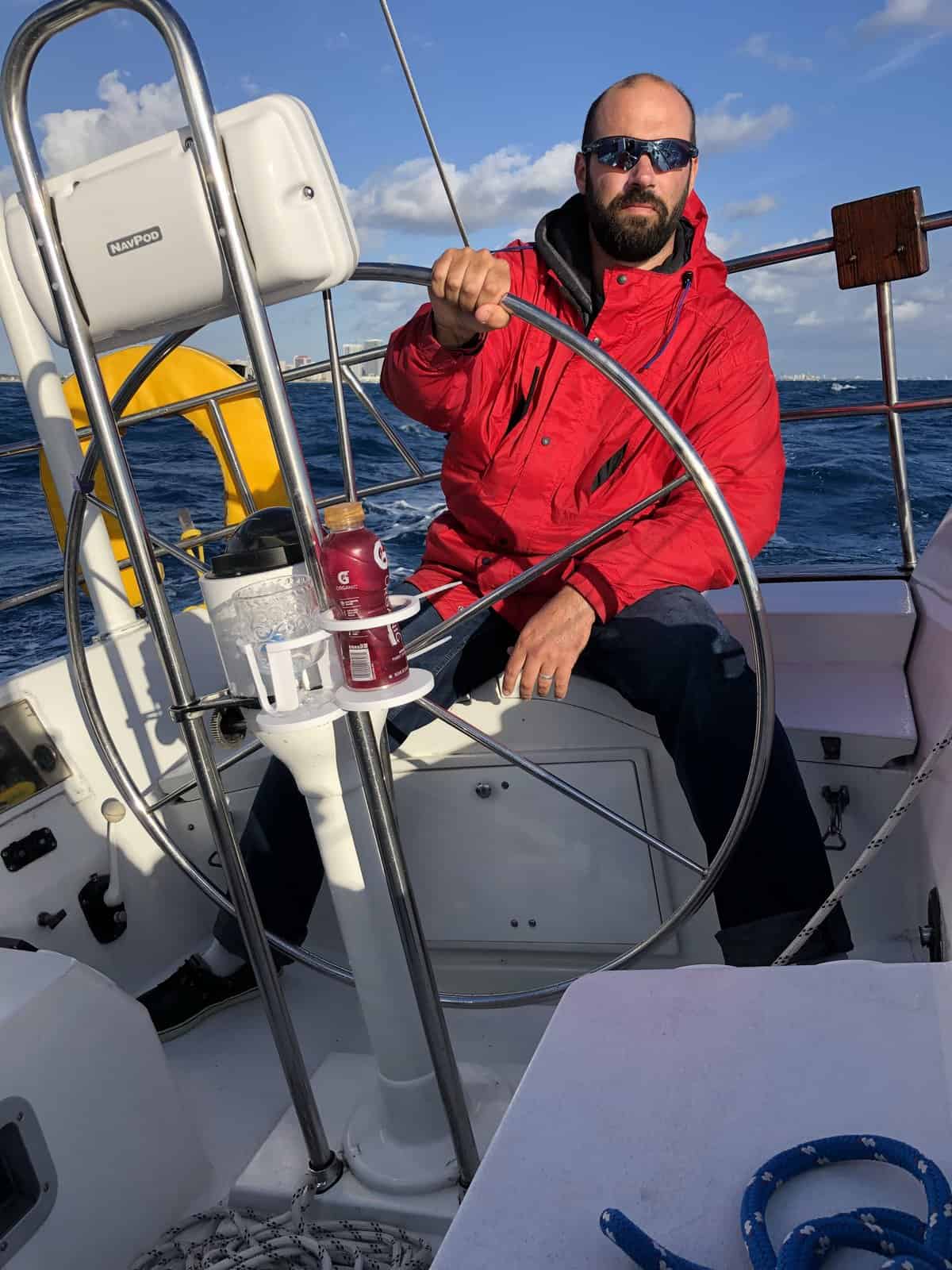
So, let’s talk about passages – seasickness, heeling, slamming, rolling, keeping watch…
Seasickness happens both on catamarans and monohulls . We found it worse on catamarans, contrary to popular belief. Anything but downwind sailing makes the catamaran turn and twist in ways that only make sense to a catamaran.
The jerking of the catamaran almost feels like riding a tractor on a very bumpy road, but without the chance to stop and rest. On top of that, waves slamming under the boat (even with higher clearance), make the entire boat shake.
Seasickness on a monohull is an absolute given in beam winds . The entire boat rolls from side to side, with every single wave and such passages are downright miserable.
Heeling is a must on a monohull, if you wish to go anywhere. While this is great for speed, it makes life at an angle uncomfortable .
Personally, healing always freaked me out . I feared a kid might fall out of the boat and chased everyone below deck (where seasickness eagerly awaited).
Sleeping on a catamaran during passages is hard, because the slamming of the waves below is too loud and disturbing. I never got used to it.
Sleeping on a monohull during passages is actually a bit better, once you fall asleep. The movement of the monohull is predictable, which can, actually, rock you to sleep .
Boater’s Tip: Buy a Reliefband ! All of us got seasick, every single passage. We tried everything . Nothing worked like Reliefbands, and they come with zero side effects.
13. Comfort at anchor
The art of anchoring must be learnt along with the art of sailing. Otherwise damage to other boats is quite possible. Anchoring is simple math and common sense .
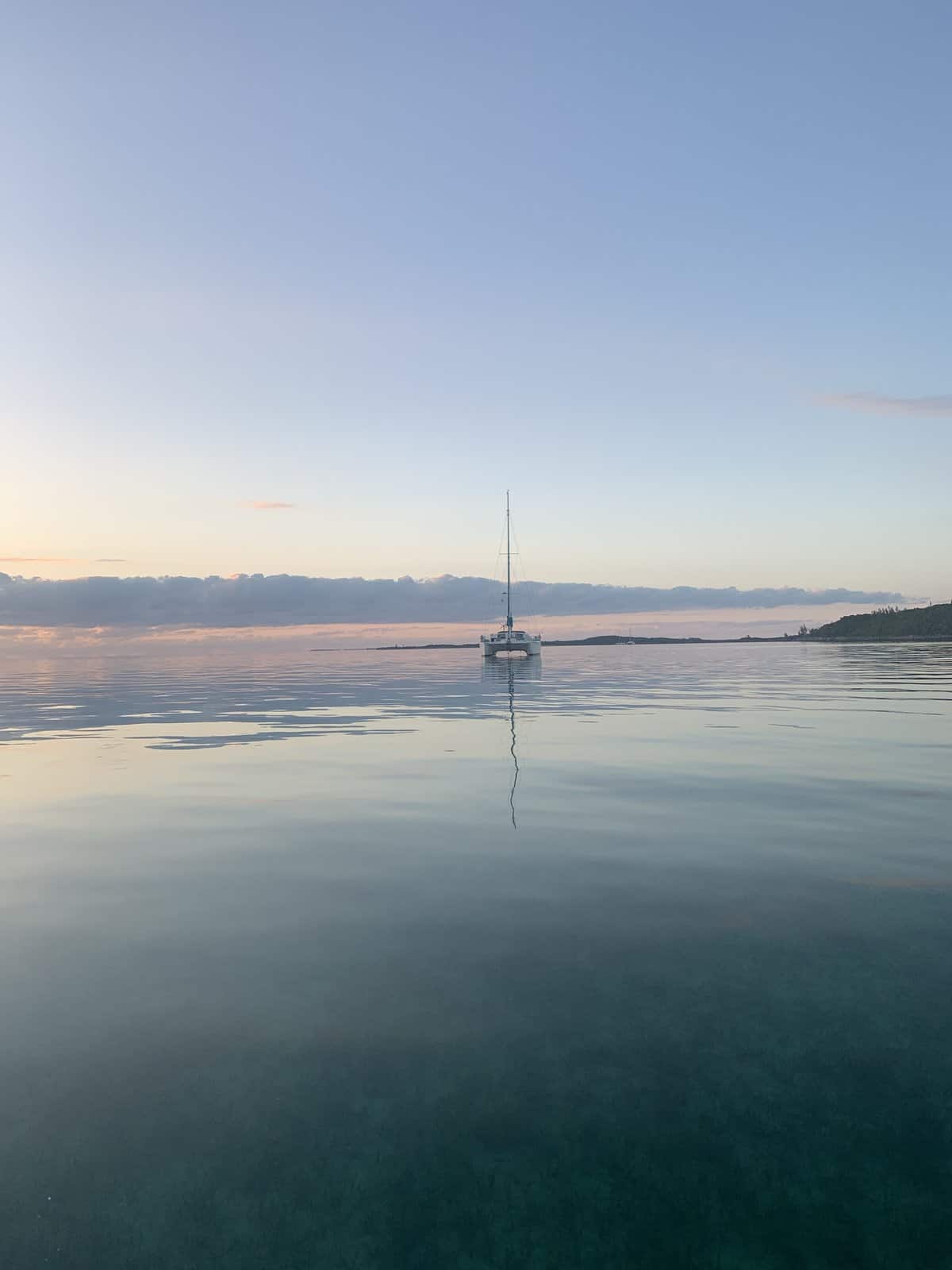
Catamarans behave much better at anchor, compared to monohulls. They are more stable and not affected as much by a wrap-around swell (when the waves are coming from the side, while the boat is facing into the wind).
Considering cruising is 99% standing still , it is not hard to understand why this single advantage can negate everything else.
Cats tend to “sail” on their anchor , meaning the boat may move about, being pushed by the wind. Just something to keep in mind in a tight anchorage.
Monohulls will roll a lot more at anchor , if the anchorage is not super calm. We have been seasick at anchor a few times, which the kids loved , because those “wind days” meant “no school aboard”.
Monohulls can counter wrap around swell by bridling – dropping a second anchor off the bow, in order to keep the boat facing into the waves, rather than into the wind.
No matter what boat you end up anchoring, keep in mind that with the changing wind, the boat position will also change.
Oh, and watch the boat behind you, please ( yes, I’m talking to you, St. Thomas guys, on that chartered boat ).
Boater’s Tip : a good rule of thumb, for normal sea conditions, is 5:1 – five feet of chain for every foot of depth.
14. Indoor space
The indoor space is a huge factor for many, when shopping for a sailboat .
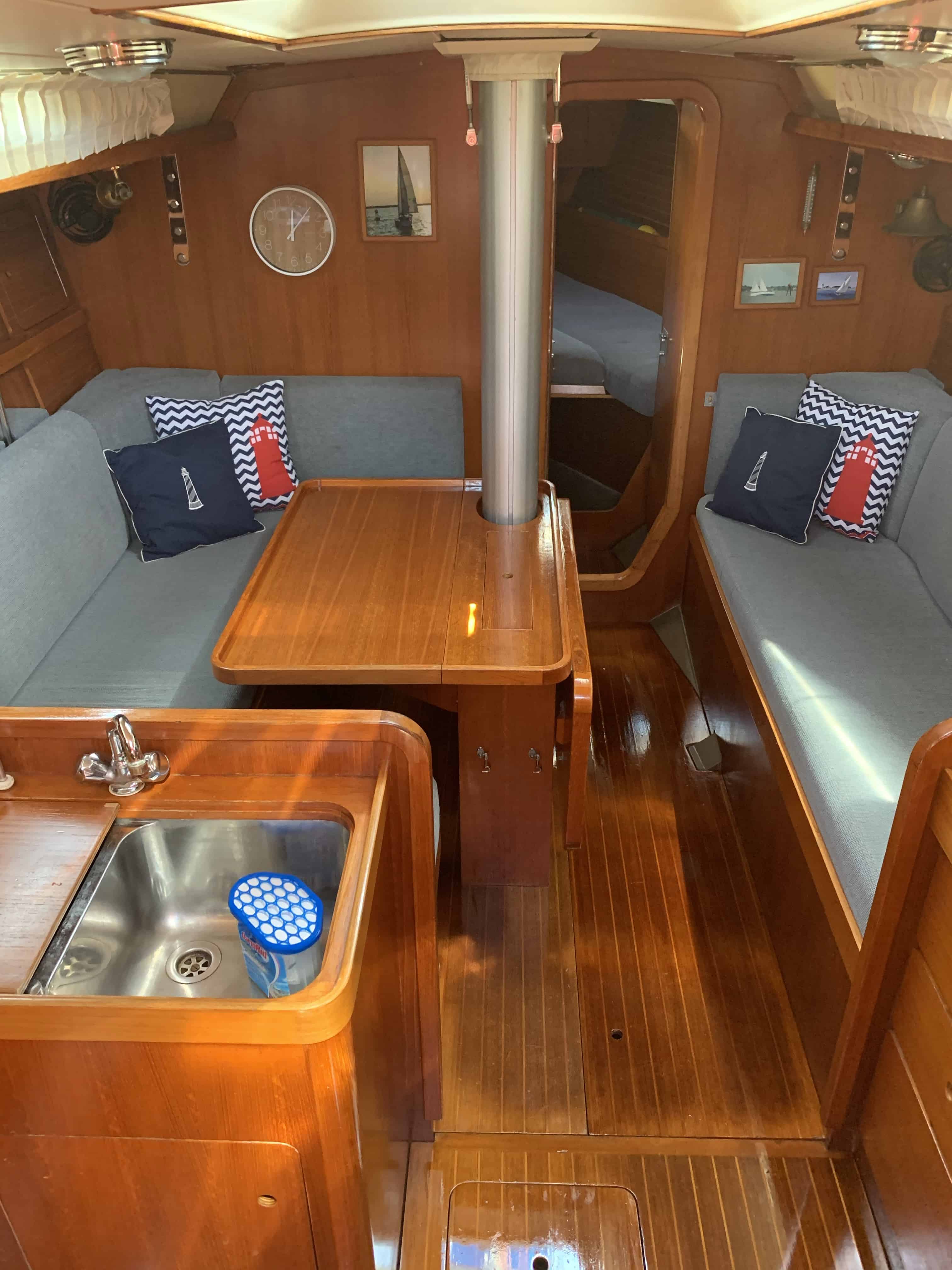
It mattered a lot to us, as well. The most important things to keep in mind are:
- Ceiling height
I have a popular post all about space on a boat: Why We Never Missed Space, While Living on a Sailboat.
Catamarans have more indoor, living space , compared to monohulls (for same length boats). This should come as no surprise. The salon and hulls together make the cat feel like a cute apartment on the water.
Catamarans offer a much better view and lots of light . Monohulls offer no view, but they are not dark, because the hatches act like skylights. The photos, from our boats above, prove just how bright a monohull is.
If you want more of a performance cat, then the view will be sacrificed a bit, because the cabin must be curved and relatively low, to avoid extra windage.
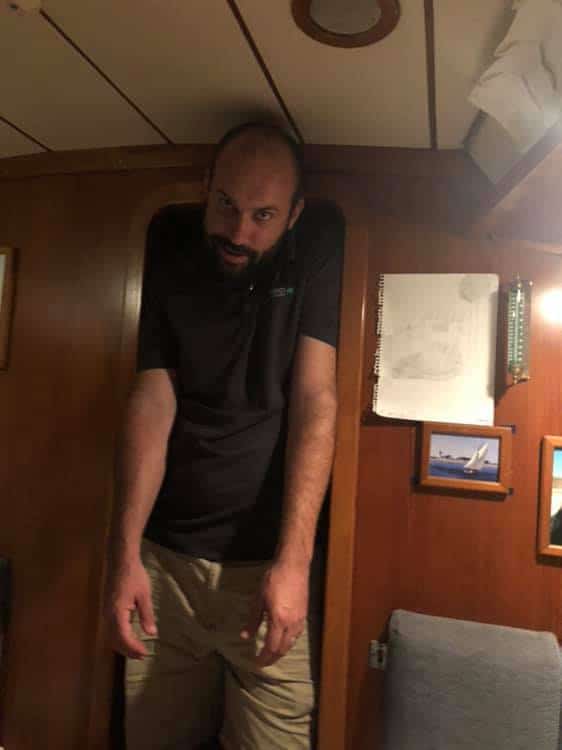
Only certain model catamarans and monohulls will have ceilings suitable for tall people. Joe is 6’4″ and the only catamaran under 43 feet, which would accommodate him, was the Privilege.
Catamarans offer a perfect separation of living space and private cabins. Monohulls with a center cockpit do have a nice aft cabin, but everything else is tight, or a bunk-style closet. Again, focusing on boats under 45 feet.
With three teens aboard , privacy was high on our list. We loved the separate heads (bathrooms) for each hull, although having four of them aboard is excessive (we turned one into the laundry room , and another into a shower room).
Boater’s Tip : Do consider catamarans with the galley below – I loved it! You get a ton more counter-space, and the salon above is more spacious.
15. Outdoor space
Considering most boats sail in warm climates, the outdoor space is a crucial factor, when shopping for a boat.
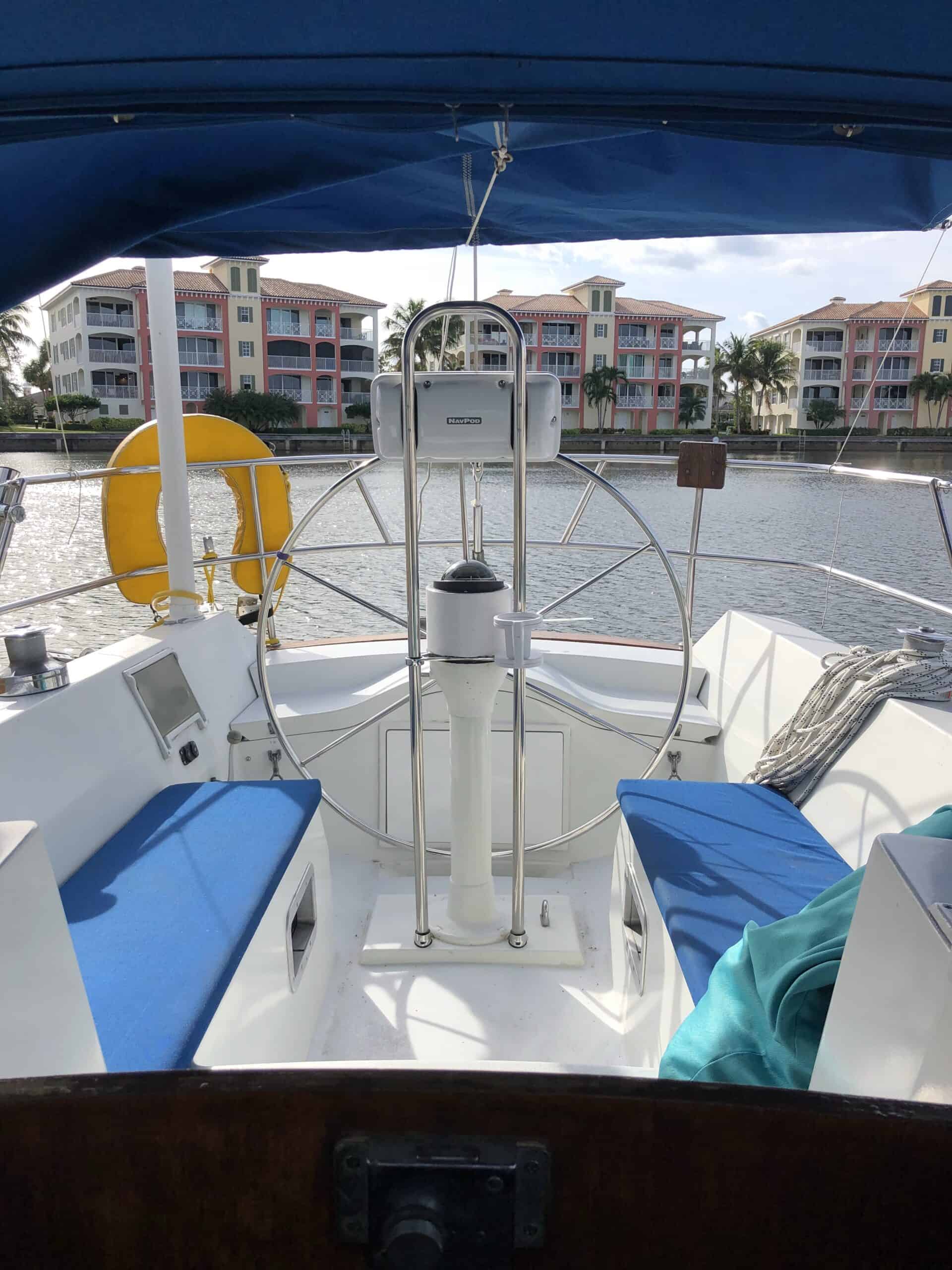
Catamarans offer much, much better outdoor space, compared to monohulls . The cockpit was my favorite space, on our Privilege .
Unlike the patio of a house, the outdoor space of an anchored boat provides constant breeze and zero bugs (occasional bee swarms might happen in some places).
Another point for the catamaran is the bow trampolines , which are a favorite hang-out spot. It is easy to send the kids and their friends to the front, while the adults hang out in the cockpit.
With older kids , however, we just left them all boat-alone, while the adults gathered on a different boat.
Walking on deck during passages is easier on a catamaran , because the boat does not heel.
16. Sustainability
Sustainability is all in the hands of the crew , much like safety. It is never the boat’s fault, if the crew wants to motor, instead of sail.
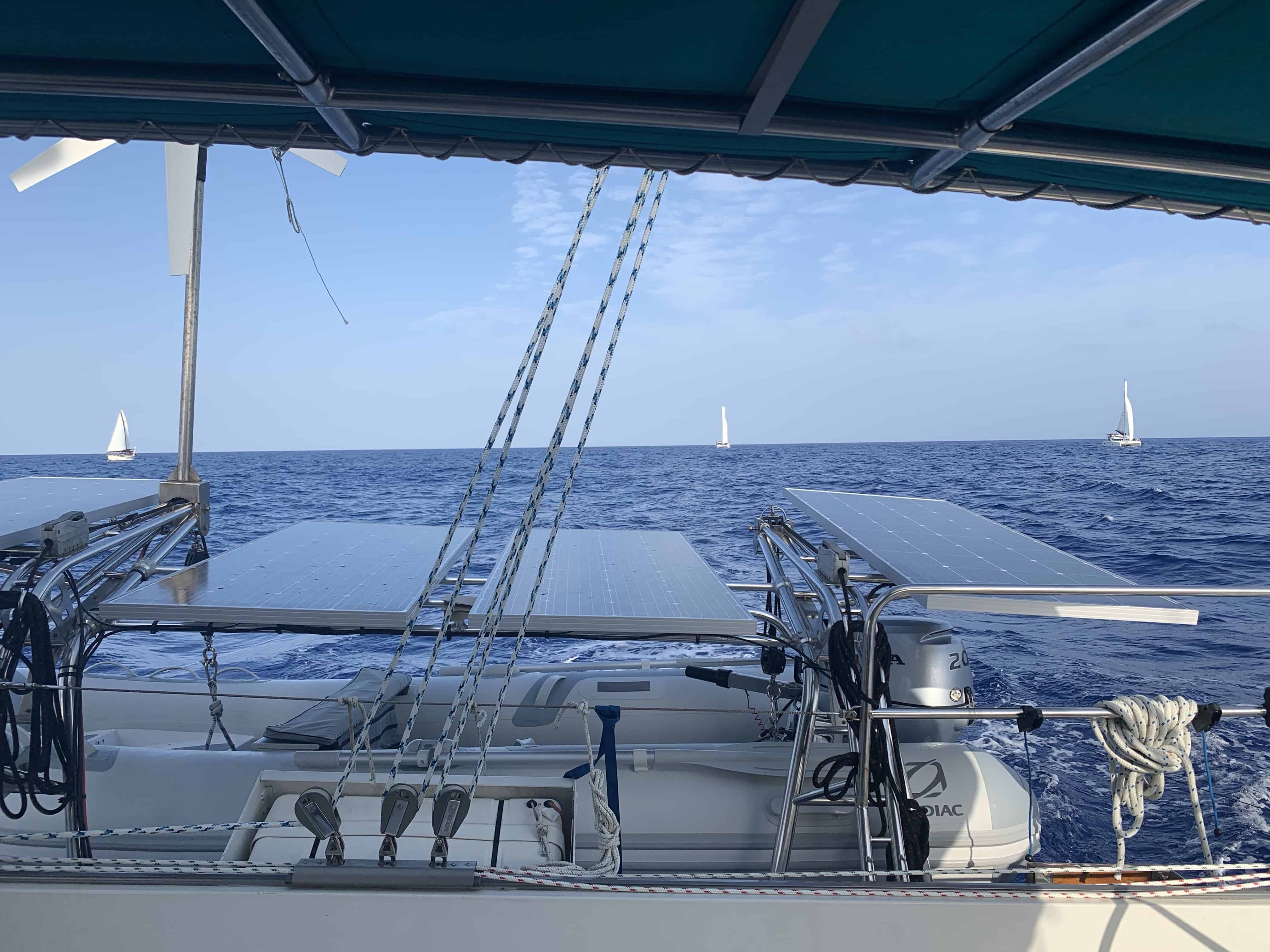
Both catamarans and monohulls have plenty of surface area to attach solar panels and wind generators.
You will like this post: This Sustainable Lifestyle is the Fairest of Them All. 10 Reasons Why Living on a Sailboat Matters.
A few boating families we met swore by their solar ovens too. I bought a super cheap one and never got it to cook anything, but granola.
As far as the cats having two engines – many motor using only one of them, and the one engine aboard a heavier monohull uses plenty of diesel too.
Boater’s Tip : Forget the generator. They are super noisy and use lots of diesel. When you are at anchor, there is a constant breeze. Buy wind scoopers instead.
17. Fun and entertainment
Our kids were happy, as long as there were other boatkids . So, that should be on the top of the priorities’ list.
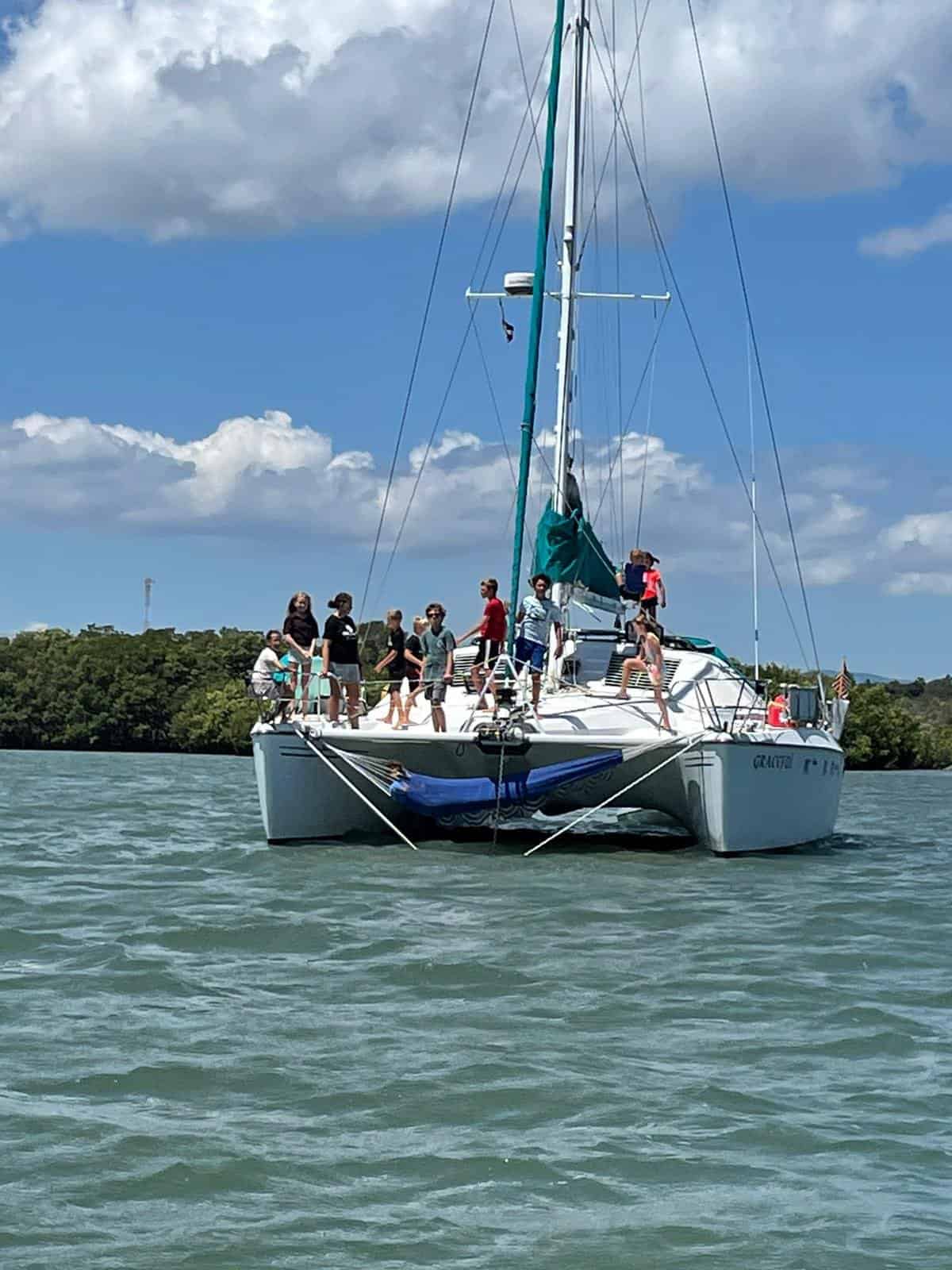
I have an excellent post on socializing the kids while on the water:
Sailing and Socializing Kids – 8 Ways to Find Friends on the High Seas.
Having said that, our catamaran was much more comfortable to invite company over, compared to our monohull.
Catamarans have an excellent division of space – both indoor and outdoor. Not to mention that on a hot day, a swim platform can go under the trampolines for shade!
Monohulls are best for swinging and playing catapult games , but they are not great for entertainment .
We have had family visit aboard our Privilege , and it did not feel crowded at all.
Boater’ tip : Be the party boat, at the anchorage, if you have kids, this will make them enjoy boat-life more.
18. The looks
Beauty is in the eye of the beholder. Captains are not the only beholders.
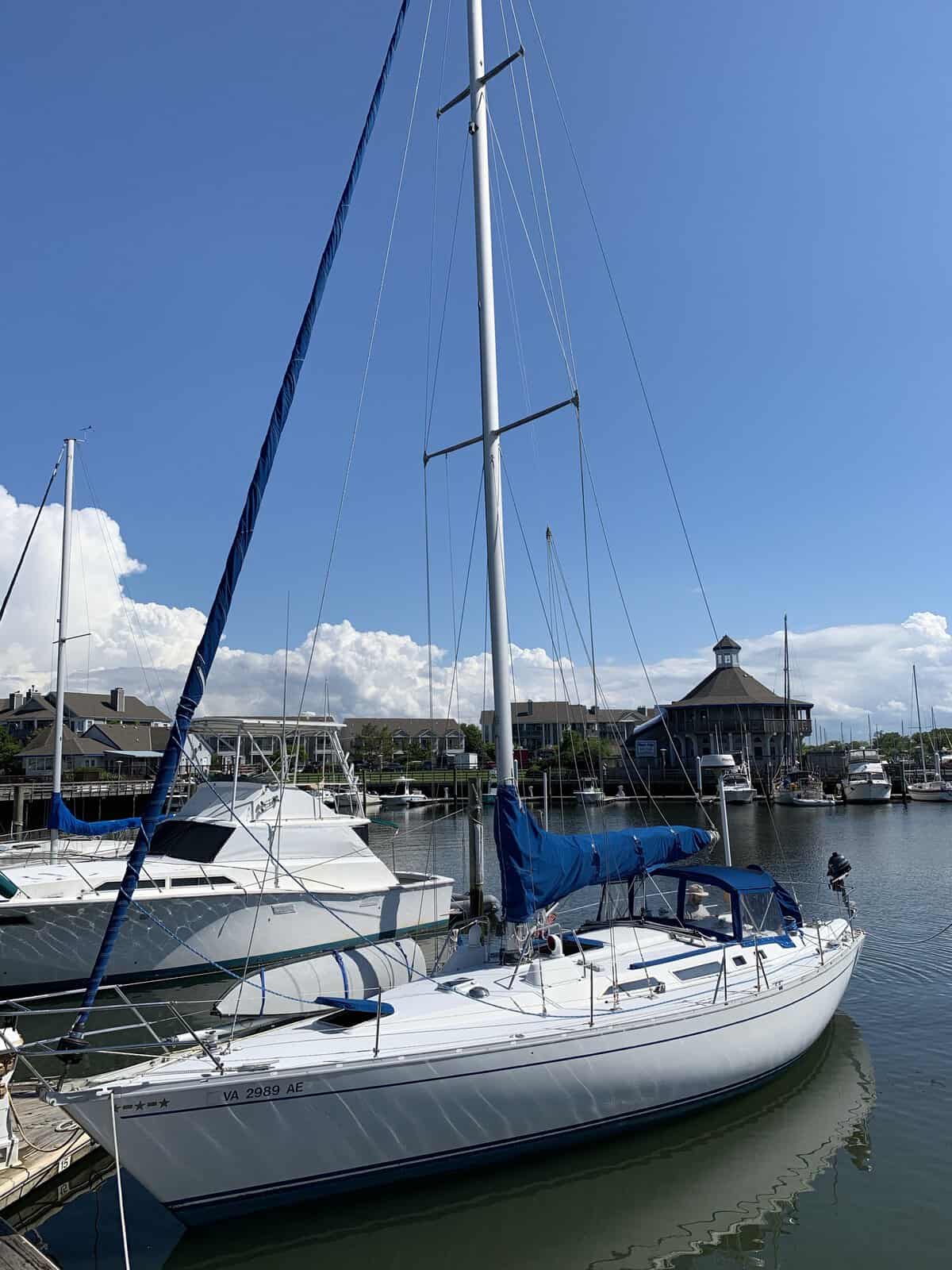
Both monohulls and catamarans can look amazing, or ridiculous. We liked both of our boats, the captain actually loved them both , which put me in a perpetual love triangle.
To be perfectly honest, Graceful was a better suited name for our Grand Soleil Monohull. We were not able to come up with a better name, and everyone knew us as the SV Graceful crew, so we kept the name for our catamaran .
There is also some romance surrounding the looks of a monohull , from paintings and movies, so I’ll give the beauty point to the monohull.
Boater’s Tip: Pick the one, which will make your wife less jealous.
19. The crew
Unless you are solo-sailing, you must consider the wishes of the crew .
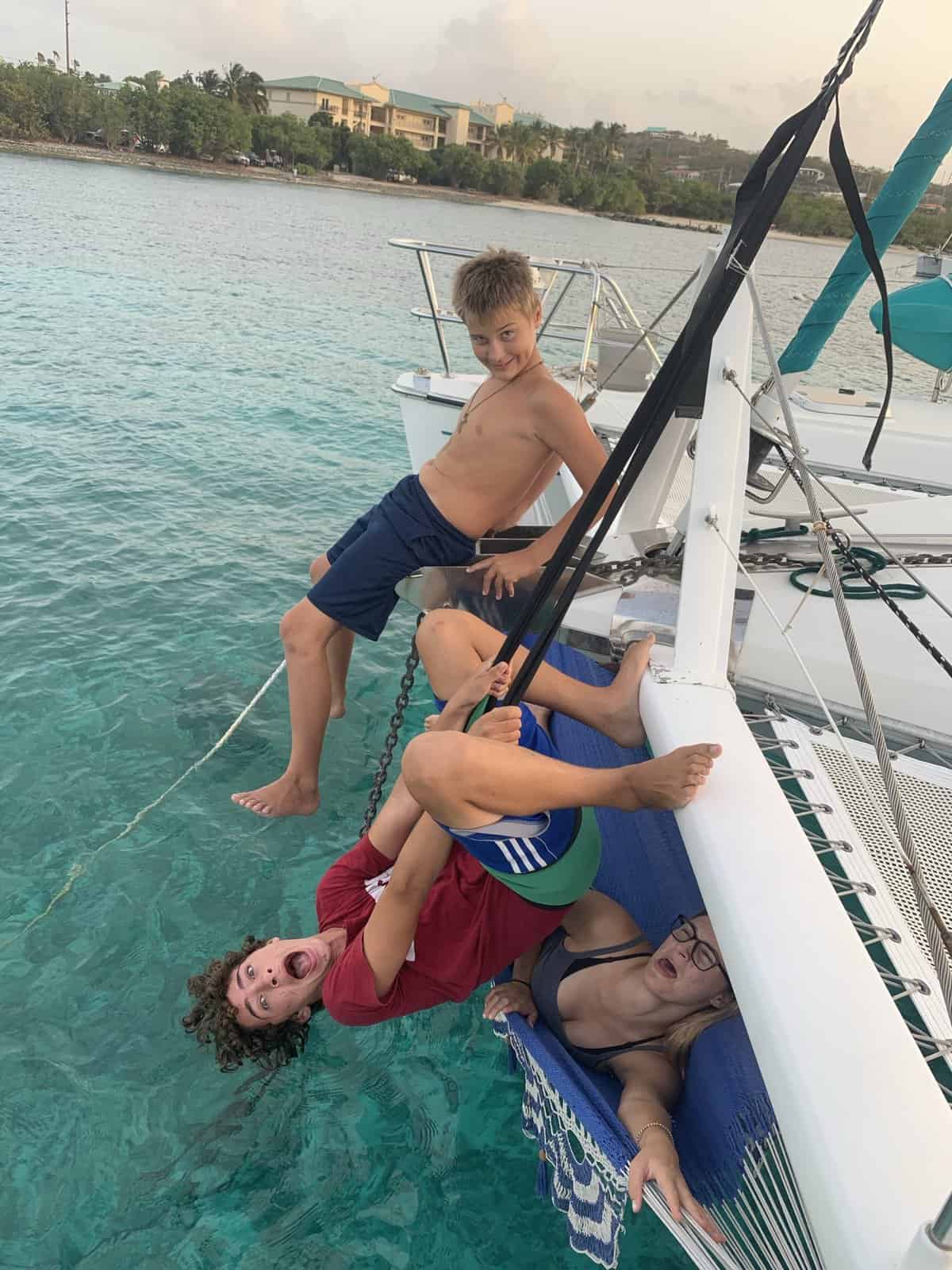
When we first looked at boats, catamarans were out of the question, because they were expensive, and our captain thought they were ugly .
Three years later, two of which full-time living aboard our monohull, the boatkids spoke! They wanted to continue sailing, but on a catamaran . And we listened.
Check out the full story of our crazy adventures
In the end, we are the parents and there are decisions as well as consequences, which are not OK to dump on the kids.
But the crew is a true team on the water . So, everyone’s opinion matters (which is also why we returned to land life).
What is the right boat for you ?
Now that we have talked about the differences between the two boats, let’s see which one might be right for you, at this stage of your adventure .
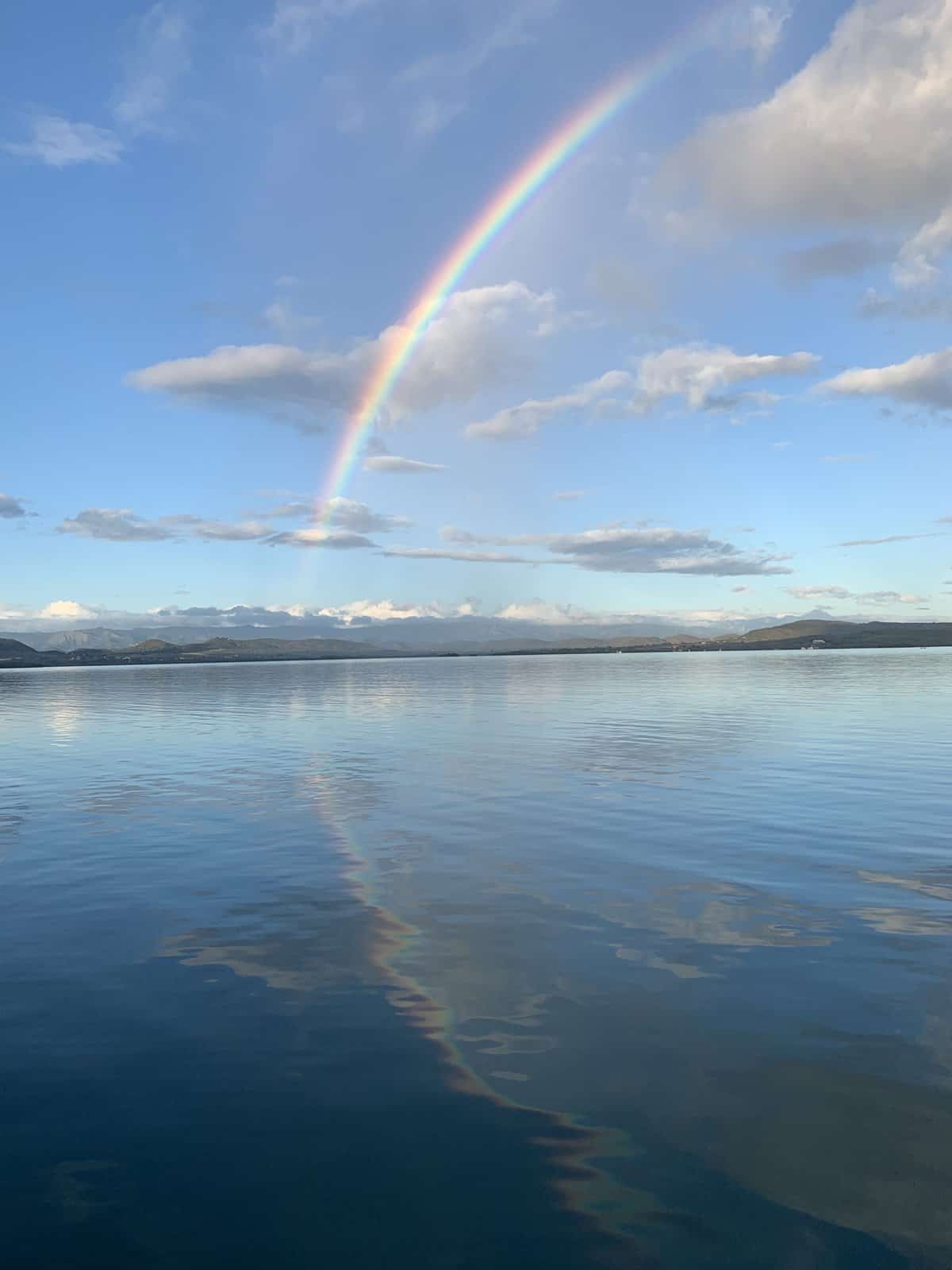
Sailing with family
We believe that a catamaran is the best choice for a family , especially when traveling with older kids .
Teens will love the clever separation of space with cabins, providing plenty of privacy.
Our favorite Privilege, actually has a fully enclosed cockpit, for added safety.
A monohull might be best for couples with toddlers , requiring help and constant supervision (got for one with a centyer cockpit).
When the need arises, for both people to be handling the sails, it usually requires one’s full attention and a kid on a catamaran can run out of sight quickly.
The best thing you can do, if no other factors are at play, if to hop on both sailboats, enjoy a day-sail trip, then discuss it with the crew.
Sailing as a couple
A monohull would be the better choice for a physically fit couple , sailing without kids (or with young ones).
Owning a monohull is cheaper , and a couple might have the budget to stop at marinas more often and explore places in-land.
A retired couple might find a small catamaran more comfortable . The acrobatics and strain to sail at an angle, climbing in and out of the salon, as well as climbing on deck do require agility and a healthy body.
Sailing solo
It is hard to beat a monohull, if sailing solo .
If the boat is rigged for solo-sailing, the smaller cockpit of a monohull provides great space to handle the lines. Especially, if the instruments fail.
One person can solo sail a catamaran that is no bigger than 40 feet , with a small cockpit and rigged for solo sailing. Hop in the cockpit of a desired cat and try grabbing the lines on either side, alone, from the cockpit. Can you do it?
Sailing lifestyle
If planning to do lots of cruising, then either boat would be fine , depending on your preference, considering all the things mentioned above.
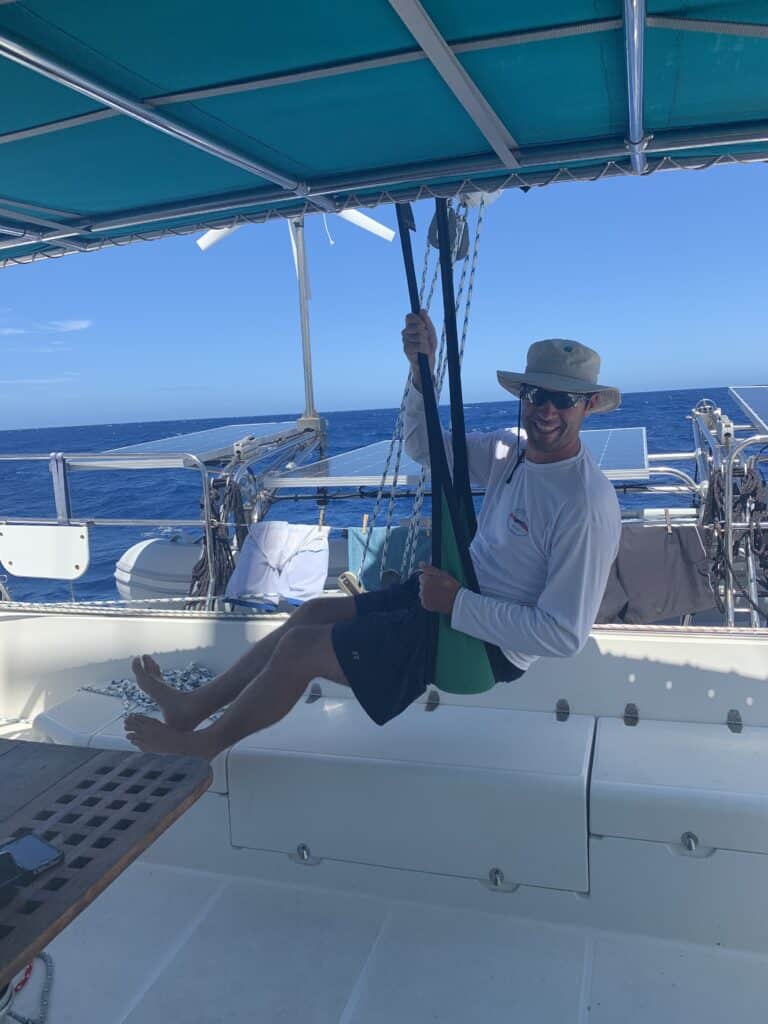
If planning to live mostly at marinas and travel to explore land, maybe a monohull is better, offering a lot more options for marinas at a lower cost.
If you need to haul out the boat frequently, during hurricane season, a monohull would be easier and cheaper.
Catamaran at a mooring field, in an expensive location , will grant you those million-dollar views , from your living room, for a small fraction of the cost that people pay ashore.
We loved Coconut Grove, Downtown Miami, USVI, from our quiet, private and affordable boat.
Speaking of waterfront living, I have a great post about living on a boat:
Can you Live on a Boat? Yes, and Now is the Right Time
Just chartering for vacation?
A catamaran will be the better chartering option , if you are just sailing out for a week, or so. Here is why:
- Great views from the salon.
- Better separation of space, if diving the cost with another party.
- Larger space for entertaining.
- Easier to get in and out of the water.
- Catamarans are a lot more comfortable when anchored, than monohulls.
- Motoring between anchorages can get you there faster.
- You can anchor closer to the beach, because of the shallow draft on a cat.
What other boaters say.
Still uncertain? Check out the praises sung to both monohulls and catamarans below – all by our dear friends, who have sailed extensively and know what they are talking about.
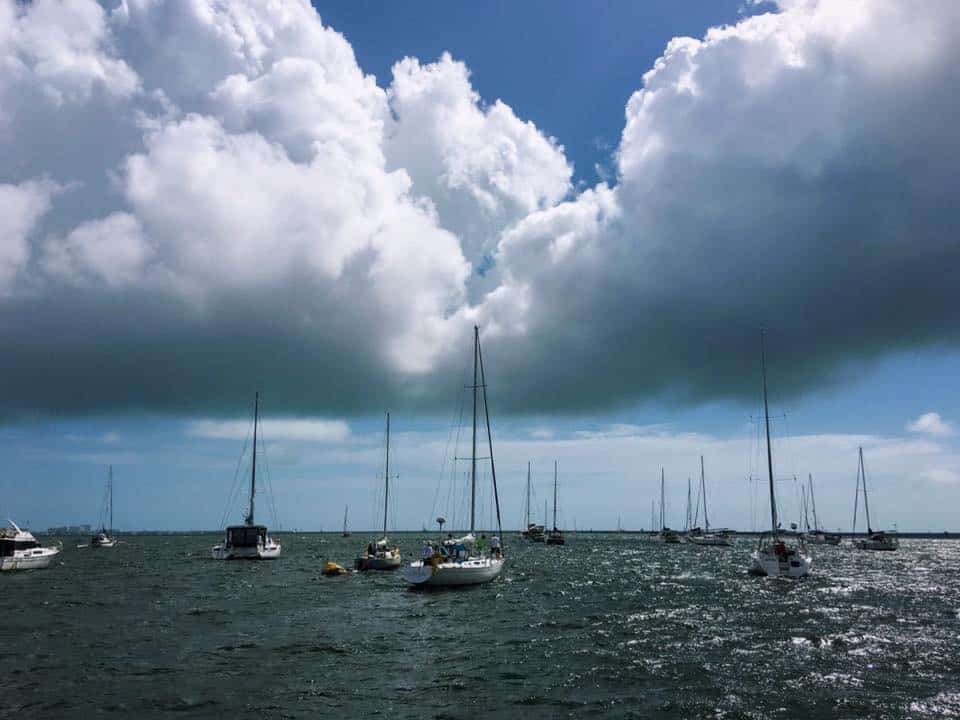
Praises to the mono
SV Silent Thunder , “Mono- smoother ride as she cuts through the sea.”
SV Lady of Mettle dad, “I prefer monos. I never seen the need to go over the same wave twice. Mono’s are a more predictable swaying motion. Cats feel unpredictable and “twitchy” to me. Monohulls handle weight better than cats. If blown over, monos stand back up. Cats don’t.”
SV Lady of Mettle mama , “When we sailed a Cat with family in Key West, I didn’t like that the helm was outside and upstairs. In foul weather that would not be great along with always having to be outside to helm. In comparison we have an inside helm to get out of sun or weather. I also did not enjoy the bow, outside on the deck was not as enjoyable to watch he dolphins play, and the smallest wave splashes over, keeping you in the back while sailing.
Overall sailing, I think a Monohull, but staying still, probably a cat just because of the open galley and living room areas.
My boat has plenty space however, a cat would not hold our things. Also, cats all look the same. Also 2 hulls to clean and scrape…booo The Cat has to go overboard.”
SV Traveler, “I would like the additional living space on a cat but I really like that my husband can captain our monohull by himself and if we need dock space or a haul out it seems easier to find with a monohull.”
Praises to the cat
SV Half Dozen , “CAT allows for view and comfort at anchor.”
SV Varekai , “…I can honestly say that (monohull) it’s not as comfortable. Cockpit, salon, berths…we all feel less comfortable on the mono. I also miss being up where I can see out. The sugar scoops were nice for when docked and sailing. I’m not a fan of boarding on the side as much.”
SV Mojo , “Straight and smooth sailing no healing. I would hate having to be angled while moving. Loved the space inside and out. There’s a compromise in everything but that worked for us for a bit anyway, because then I needed more space. If you give a pig a pancake…right?!”
SV Colibri , “We love the room, light and layout of our cat. We rarely sway at anchor. It’s nimble and has enough space and privacy for a family with two teens (and a cat!). It can be single handed. The mast is 63″ so we can take the ICW. All in all, a dream boat (FP Lipari).”
SV Snowless , “Love the cat. Would definitely take the cat over a mono for most of the time. Yes the mono is great for going to to the wind aka, getting from us to Caribbean, but that is only a small portion of the travel. After that it’s mostly beam or downwind sailing. The trade off for being at anchor which is where you spend most is your time is unmatchable in my opinion.
However, when going upwind and I look ahead and see a mono healed over cutting through the waves with this mast holding steady, vs me and my mechanical bull that I am riding, I am envious.”
SV Aquafox , “I liked all the different living spaces we had on ours. I really liked the stability of it vs the movement you can get on a mono. Monos are awesome on speed and price though.”
Tours of our boats
Below are links to our boat tours, as well as episodes on Youtube, showing our boats, enjoy:
Our Catamaran Tour – 1995 Privilege 42
Our Monohull Boat Tour – 1985 Grand Soleil 39
Our 1985 Privilege 42 For Sale Video
Our first few YouTube episodes feature our monohull
In the end, I propose that Catamaran vs Monohull Battle be renamed to Sailor vs Sailor Battl e.
It really matters most what kind of cruising the sailor wants to do , and what matters most to the crew. And, just like in real battles, sides can be changed.
So, let’s focus on the crew and leave the poor cat and mono alone .
Links to what we recommend in this post
- Reliefband – excellent against seasickness. Zero side effects, we loved them.
- Sailing classes via the American Sailing Association
- Predict Wind – to always select the best possible weather window.
- Folding propellers – to help increase boat speed and protect the propeller.
- Boat US Membership – for peace of mind, while sailing the US coast.
- Wind scooper – for extra breeze inside the cabins – a must aboard!
Helpful posts about boating life
All of our Boat Life Posts
Buying a Catamaran in 10 Steps – Complete Guide.
Pros and Cons of Living on a Boat. By Experienced Boaters.
The cost of living on a boat for a family
How to Sell a Boat by Owner, the Honest Way
Can you Live on a Boat? Yes, and Now is the Right Time
Mina is the creator and owner of No Texting and Tacking. She is an award-winning author, a philologist, a registered nurse and a native Bulgarian. She turned into a travel blogger in 2018, when her family of five decided to sail and travel the world.

IMAGES
VIDEO
COMMENTS
In a mono-hull vessel, you are more likely to have a strong rolling effect with the waves. While below deck, where you cannot see the waves or the boat's motion, the rolling of the waves, or other movements, can be more likely to get you seasick. Catamarans are also less likely to make you sick due to the boat's overall structure and design.
Luckily, there are boats designed to help mitigate this feeling. Catamarans, pontoons, trimarans, yachts, and monohull boats are five options that can help with seasickness. Generally speaking, Stability is key when trying to combat seasickness. Monohulls, if they are small, can be the worst option, while larger multi-hull boats are your best ...
As a result, passengers on catamarans are less likely to experience seasickness. A crucial factor impacting seasickness is the vertical acceleration experienced on a boat. Catamarans tend to have lower vertical acceleration levels, making their movements gentler and more predictable. This reduced acceleration can also help prevent motion ...
There is one type of boat that does decrease seasickness. That is a very large boat whether it be a monohull or catamaran. Larger boats can ride on the top of multiple wave fronts to balance out motion. Think of, for instance at the extreme end, a cruise ship. Most people do not get as sick on cruise ships as they would on a small sailboat.
6. Don't drink alcohol. Sorry about this one, but if you want to counter something called motion sickness (aka seasickness) you probably shouldn't drink something that makes your world wobbly without even being on a boat. Drink water or try the ginger stuff, also many people have good success with coca-cola.
A catamaran is a boat with two hulls connected by a deck. Because they have two hulls, catamarans are known for their speed, stability, and spaciousness. ... The stability of a catamaran means that it is less likely to cause seasickness than a monohull. Additionally, the living space on a catamaran is often spread out between the two hulls ...
The middle of the boat, or the lower decks, tend to have less lateral movement. We would, however, normally suggest getting on to the top deck for some fresh air - the sun decks and observation areas are ideal for this. Along with fresh air, facing forwards and glancing at the horizon are well-known ways to reduce seasickness.
One major differentiation between these two boat types is the onboard living spaces and amenities. Some key comparisons: Deck Space - With their spacious bridge deck, catamarans offer ample lounging and relaxation space for large groups. Yachts have more confined deck space. Cabins - Catamaran cabins are typically larger and more comfortable.
Preventing and managing seasickness is about looking after your body. Try to keep normal routines: eat, drink and go to the loo as you would do at home, put an extra layer on when you need to and ...
1) Yacht. Choosing the right boat really can make the difference between a happy sailor and an unhappy one! 2) Medications. Being prepared for seasickness can make the difference between not getting it and getting it. Even the hardiest of sailors can still get seasick. 3) Following sensible tips either by experts or local knowledge.
Aug 17, 2015. Two sailboat experts argue monohull vs. catamaran. Contributed by Denison Yacht Sales. The great debate over which is better—one or two hulls—boils down to several factors, each with distinct advantages and disadvantages. The verdict usually defaults to personal preference and intended use of the vessel, but that didn't stop ...
A catamaran's two-hull design offers a higher degree of stability and comfort in comparison to a monohull boat, which also helps in reducing seasickness. Catamaran sailboats are propelled by the wind, and can travel a lot faster than traditional sailing boats due to the needle-like monohulls or multihulls. A catamaran charter offers a great ...
Catamaran Advantages vs. Monohulls: Seasickness Minimized. Catamarans are known to afflict sailors with much less seasickness than monohulls. This is the main reason why rental companies choose catamarans. Seasickness, after the expense of sailing as a sport, is probably the single biggest deterrent, which keeps people on land.
Easier motion. Monohull sailboats have their own groove. This motion is predictable and distinguishable by pro sailors. Cats, on the other hand, depend on the body of water's condition state. Also, cats pound when going upwind into big seas if their bridge deck is pummeled by waves, while monohulls tend to slice through the waves.
During treatment, lie down and try to sleep. Take small amounts of fluid, crackers, and hard candy. Sailors now have many options to manage seasickness. It is no longer necessary to follow Samuel Johnson's 18th century advice: "To cure seasickness, find a good big oak tree and wrap your arms around it.".
A catamaran has more space than a monohull. This is because the boat is wider, and it has a much larger deck area. It also has twice as many hulls, so you have more overall space between the two of them. The additional space is great for people looking to throw parties on their boats.
Attach one line to each of the forward cleats and bring the loose ends to the center. Pick up the mooring with a boathook. String one line through the eye and bring it back to the same cleat. Repeat on the other side, keeping the lines the same length so the cat is centered.
Typically the best boat for seasickness is going to be a catamaran or trimaran. Here in Kona it will be a boat like the Sea Paradise Hoku Nui. A catamaran is typically low to the water and wide. With a boat like the Hoku Nui you'll have a stable and comfortable ride while also getting a great 360 degree view due to its open bow design.
Again, your passengers will be less prone to seasickness in a catamaran because there's less pitching and a cat doesn't roll from swell to swell as it happens in a monohull. That's not all; walking on the deck of a catamaran is a lot easier and safer since the boat is flat.
Most notably, a monohull vessel has only one hull, or main body, whereas a catamaran has two hulls. Because of these two hulls, catamarans typically stay more level than their single-hulled counterparts. They also tend to offer more space, and arguably will go a lot faster. Lets dive in to what differentiates the two types of boats and what ...
Here are the results: They show that nearly 92% of respondents were hardly, or not at all bothered by seasickness on their cruise. None experienced it to the point of wanting to get off. Only 2.5% felt it had affected their enjoying in a significant way. Still, at CNH Tours, we wanted to get a definitive answer on the catamaran vs monohull ship ...
Speed. In the catamaran vs monohull speed debate, it might be more of a draw. Catamarans are typically 25-30% faster than a comparable monohull, but some argue that it comes at a price. When catamarans are sailing full speed you might experience a lot of slapping from the waves. Monohulls are designed to cut through the water.
The draft of the boat is the distance between the waterline and the end of the keel. This defines how deep the boat can go without hitting bottom. Catamarans are lighter and have a shallower draft, compared to monohulls. From around 3ft for a cat under 40ft, to around 6ft for larger catamarans.